Fort Worth was initially established in 1849 as an army outpost on a bluff overlooking the Trinity River. It has historically been a center of the Texas Longhorn cattle trade. Fort Worth experienced shortages of money, food, and supplies during the Civil War. During the Reconstruction, the population dropped as low as 175 but began to recover. Jacob Samuels, William Jesse Boaz, and William Henry Davis had opened general stores by 1872. In 1884, Khleber M. Van Zandt founded Tidball, Van Zandt, and Company, which became Fort Worth National Bank. After the Texas and Pacific Railway arrived in 1876, Fort Worth became a cattle-shipping boomtown (often called Cowtown), a stopover for longhorn cattle drives on the Chisholm Trail in the early 1870s.
Immigrants from the devastated, war-torn South continued to swell the population, and smaller, community-owned factories and mills gave way to larger ones. Fort Worth became the westernmost railhead and a transit point for cattle shipment via the growing transportation network, soon becoming the “Queen City of the Prairies.” Louisville Niles owned the Fort Worth Stockyards Company and is credited with bringing the two largest meatpacking firms, Armour and Swift, to the stockyards. Mayor Broiles and County Attorney R. L. Carlock launched a reform campaign in the late 1880s.
Fort Worth launched the first prohibition campaign in Texas in 1889, which allowed other businesses and residential development in the area. There was also an influx of Black residents. The black population settled in the city’s southern portion due to state segregation, excluding them from the business district and more expensive residential areas. The Acre’s popularity and profitability declined, and more bums and homeless people were seen on the streets.
Below are some stunning historical photos that will take you back to the late-19th century in Fort Worth.
#1 Panoramic view of downtown Fort Worth, Texas looking west, 1890
#2 L. M. Whitsitt Drug Store, Houston Street and 7th Street, Fort Worth, Texas, 1898
#3 Old Fort Worth City Hall, 1893
#4 Tarrant County courthouse, Fort Worth, Texas, 1896
#5 Going to a Juneteenth, 1880
#6 Tarrant County courthouse, Fort Worth, Texas, 1896
#7 Electric street car next to horse drawn buggy in downtown Fort Worth, Texas, 1896
#8 Tarrant County courthouse on Market Day in Fort Worth, 1875
#9 Panoramic view of downtown Fort Worth, Texas, 1890
#10 Tarrant County courthouse construction, 1894
#11 Businesses on Houston Street, Fort Worth, Texas, 1876
#12 Anheuser-Busch Brewing Association, 1885
#13 Clock tower of the Tarrant County courthouse, 1896
#14 First Stockyards Hotel and Exchange, 1891
#15 County courthouse construction, 1894
#16 Tarrant County courthouse construction, Fort Worth, Texas, 1894
#17 Aerial view of downtown Fort Worth, 1890
#18 Commerce Club (now Fort Worth Club) and other buildings, 1890
#19 Texas Spring Palace, 1889
#20 Earliest Fort Worth, Texas skyline, 1884
#21 Fort Worth National Bank with horses and buggies in front, 1880
#22 Gallup Grocery Store, South Main Street and Hattie Street, Fort Worth, Texas, 1885
#23 Downtown Fort Worth, Texas at Houston Street and 8th Street, looking north, 1885
#24 Ellis Hotel, 3rd Street and Throckmorton Street, Fort Worth, Texas, 1888
#25 Land Agency, 1880
#26 Colonel Richard M. Wynne residence, 1895
#27 Saint Joseph’s Infirmary, 1898
#28 Tarrant County courthouse, 1896
#29 Tarrant County courthouse construction, 1894
#30 Texas Spring Palace, 1889
#31 Texas Spring Palace, 1889
#32 Clara Burnham’s Elementary School Class, 1883
#33 Women with Horse, 1895
#34 Interior of E.T. Bergin Home
#35 E.T. Bergin Residence, 1889
#36 Troops in Parade, 1899
#37 Downtown Fort Worth, 1885.
#38 Interior of Unidentifed Restaurant, 1883
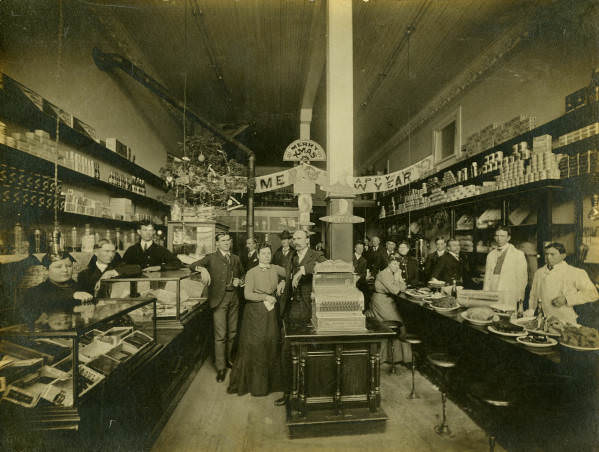
Numerous people pose for a photograph during a holiday dinner in a local restaurant and store. Various prepared dishes sit on the counter, and employees stand in front of shelves lined with grocery items. A small Christmas tree sits on top of a cabinet in the back of the store. Signs for James G. Blain, a Republican candidate for the 1884 presidency, hang above the cash register.
#39 Texas Spring Palace, Galveston Harbor Exhibit, 1889
#40 Texas Spring Palace, Horse and Plow Karporama, 1889
#41 Mule Cart and Cotton Yard, 1885
#42 Volunteer Fire Department, 1880
#43 Fort Worth Benevolent Home for Orphans, 1885
#44 South Side Grocery, 1888
#45 First Christian Church
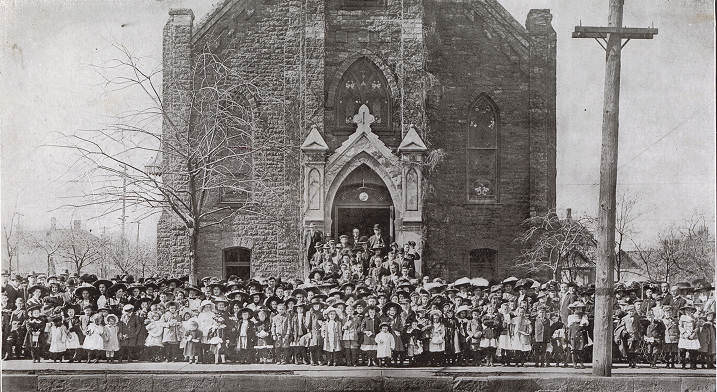
First Christian Church was established in 1855 and is Fort Worth's oldest continuously operating church. This building, constructed in 1878, was its second location. This photograph shows the front of the building with what appears to be the entire congregation of men, women, and children.
#46 Old Post Office Building, 1896
#47 Group at Park, 1895
#48 Main Street, 1896
#49 Group in Front of House, 1895
#50 Fort Worth Granite and Marble Works, 1898
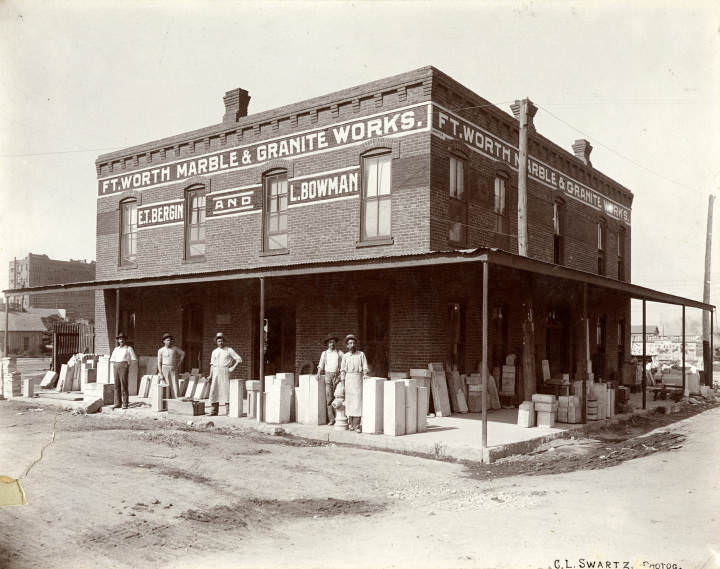
An exterior view of the Fort Worth Marble and Granite Works building, located at 1013-1015 Throckmorton Street. Pieces of marble and granite sit on the sidewalk underneath the awning. Five employees, some wearing aprons, pose for the photograph. Two children are visible in an upstairs window. An advertisement for the Lemen Brothers circus is in the background to the right. This building was expanded around 1903.
#51 Cotton Sale in Downtown Fort Worth, 1878
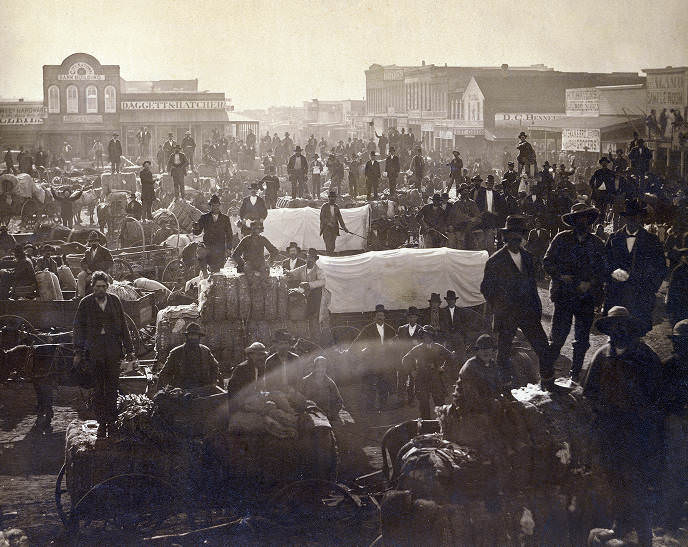
A cotton sale in the public square in downtown Fort Worth. Men sit on wagons and large bales of cotton. The City National Bank Building, with Daggett & Hatcher Grocers, is in the back of the square. D.C. Bennett Dry Goods, H.T. Havens Hardware Store, and the Alamo Sample Room are on the right.
#52 Homes of Dr. E.J. Beall and Captain J.C. Terrell, 1875
#53 Women on Lawn, 1895
#54 Hendricks Building Cigar and News Stand, 1894
#55 Louis Bicocchi Grocery, 1893
#56 Tarrant County courthouse, 1896
#57 Southside Grocery, Fort Worth, Texas, 1880
#58 Construction of Tarrant County Courthouse, 1891
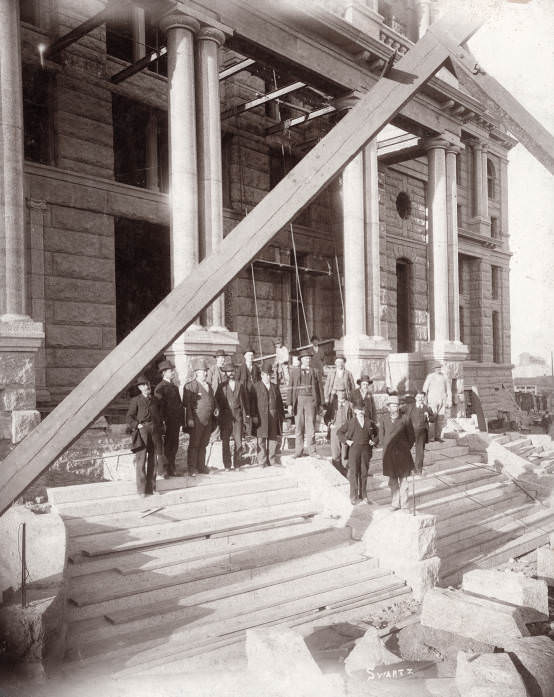
Men, including several county commissioners, pose on the steps of the Tarrant County Courthouse during its construction. The photograph is accompanied by a diagram identifying nine of the men, including Henry M. Furman, Ben Waggoman, Henry R. Wall, H.C. Holloway, L.D. Nichols, M.E. Collins, B.B. Paddock, J.L. Mock, and R.G. Johnson."
#59 Construction of Tarrant County Courthouse, 1895
#60 Tarrant County Courthouse, 1895
#61 Construction of the Tarrant County Courthouse, 1892
#62 Hoof and Horn Buffet and Delicatessen, 1890
#63 City Hall, 1893
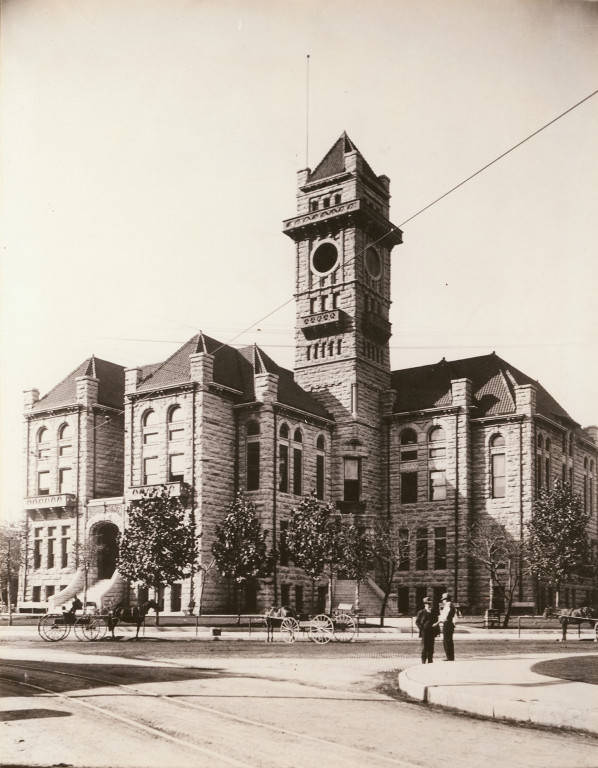
The city hall building, located on the corner of Throckmorton and Tenth Streets. The cornerstone for the limestone building was laid in 1892, and the cost of construction was $125,000. Several horse and wagons are parked in front of the building and two men converse on the sidewalk. The building was demolished in 1938 to make room for the new city hall.
#64 Fort Worth Water Works Plant, 1896
#65 Texas Spring Palace, May 1890
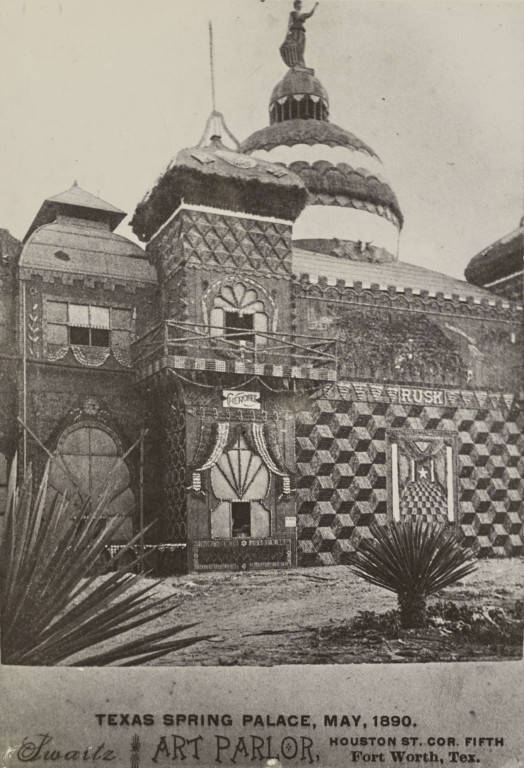
The Texas Spring Palace's Cherokee County Tower and Rusk County facade. Each Texas county was invited to contribute agricultural materials to decorate the building's facade. Both the Cherokee County Tower and Rusk County Tower exteriors were composed of corn, Spanish moss, cane, corn shucks, popcorn, sorghum, and millet.
#66 City Hall, 1893
#67 Tarrant County Courthouse, 1895
#68 Three Gentlemen in a Park, 1893
#69 Texas & Pacific Railway Station, 1890
#70 L. M. Whitsitt Drug Store, 1890
#71 Fire Men and Fire Wagon, 1893
#72 Fire Hall and City Hall, 1899
#73 Unidentified City Street, 1899
#74 A view of an unidentified dirt street. A man is doing yard work on the left, 1889
#75 Bell-Eddleman-McFarland House, 1899
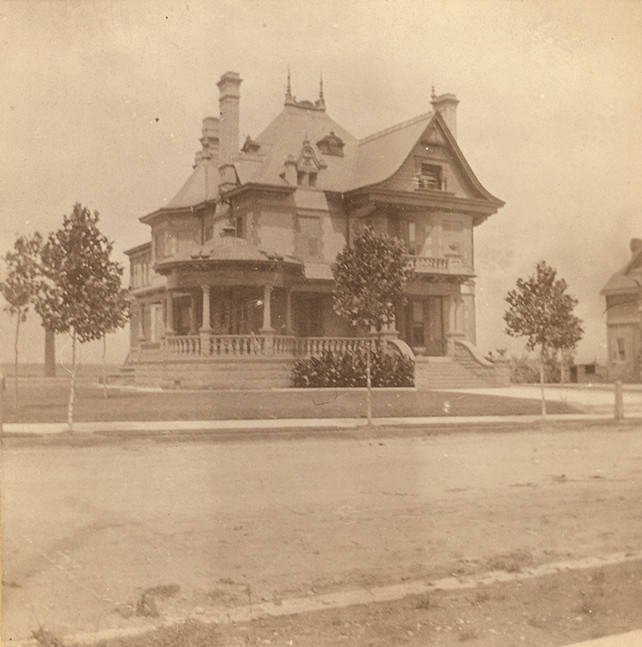
This Victorian house, located at 1110 Penn Street, was built in 1899 by the firm Messer, Sanguinet, & Messer. It was built for Sarah Ball, and purchased by William Eddleman, the founder of Western National Bank; it was the residence of Carrie McFarland, Eddleman's daughter, until she died in 1978.
#76 Literary Society of Fort Worth University ,1891
#77 Old City Hall Building, 1899
#78 First Christian Church
#79 Colorado State Capitol, 1894
#80 Interior of Unidentified Lobby, 1899
#81 View from Below a Bridge, 1899
#82 Troops in Review, 1899
#83 Family Dwelling, 1899
#84 Philippine Volcano, 1899
#85 Troops Swim in a River, 1899
#86 Spanish Artillery, 1899
#87 Army Horses Feeding, 1899
#88 Philippine Cemetery, 1899
#89 Philippine Church, 1899
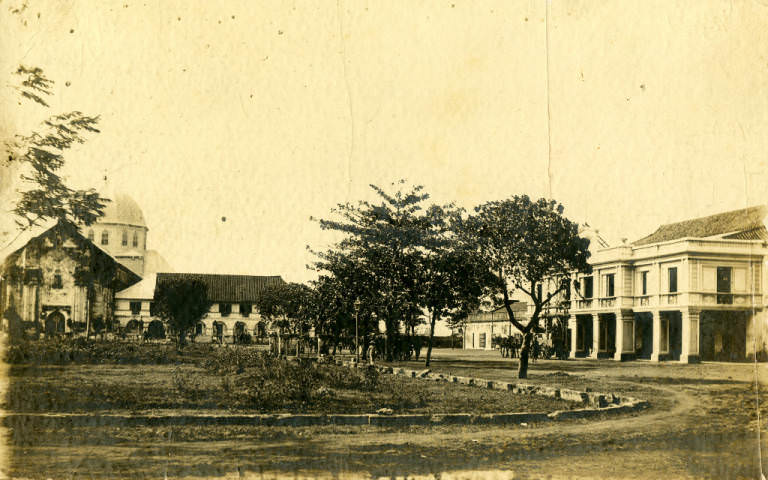
This is likely a photograph of the Basilica of the Immaculate Conception (on left) in Batangas City. The building to the right probably served as a headquarters for the Battalion of Engineers that was attached to the 8th Army. A closer view reveals supply wagons, and numerous American troops walking in the plaza.
#90 Troops at Rest, 1899
#91 Troops at Drill, 1899
#92 Inspection of Troops, 1899
#93 8th Army Corps, 1899
#94 Col. George S. Anderson Reviews Camp, 1899
#95 Funeral Procession, 1899
#96 Mounted Troops Crossing a Stream, 1899
#97 Villager at Community Well, 1899
#98 Ella Hogsett’s Japanese Reception, 1899
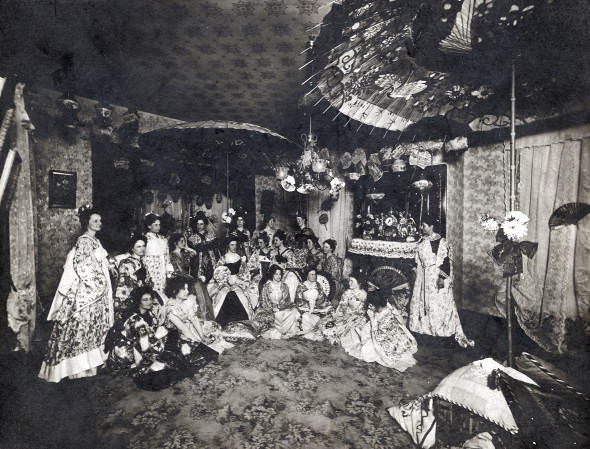
A gathering of women, wearing costumes, pose under an umbrella. Attendees include Donnie Lu Carter, Mary Muller, Anine Samuels, Florence Adams, Grace Potter, Frances Tarlton, Ann Fields, Jennie Walker Davis, Ora Stroud Slack, Abbie Johnston, Grace Hollingsworth, Susie Bell Blanchard, Mary Bell Bradley, Lola Binyon, Daisie Beverly, Alberta Triplett, Frannie Montgomery, Louise Orrick [Bin], Anna Hogsett Ballard, and Ella Hogsett.
#99 Botany Class, Fort Worth University
#100 Winfield Scott Residence, 1899
#101 Old Federal Building, 1899
#102 R.J. Lamb House, 1899
#103 City Hall and Fire Hall, 1899
#104 Tarrant County Courthouse, 1899
#105 Central Fire Station, 1899
#106 First Presbyterian Church, 1899
#107 St. Ignatius Academy, 1899
#108 Hotel Worth, 1899
#109 J.T. Ellis and Jerry Ellis, 1890
#110 A Horse Drawn Surrey at the Fort Worth Fencibles, 1895
#111 Construction of the Tarrant County Courthouse, 1895
#112 Fort Worth Benevolent Home for Orphans, 1885
#113 Children Outside of a School House, 1885
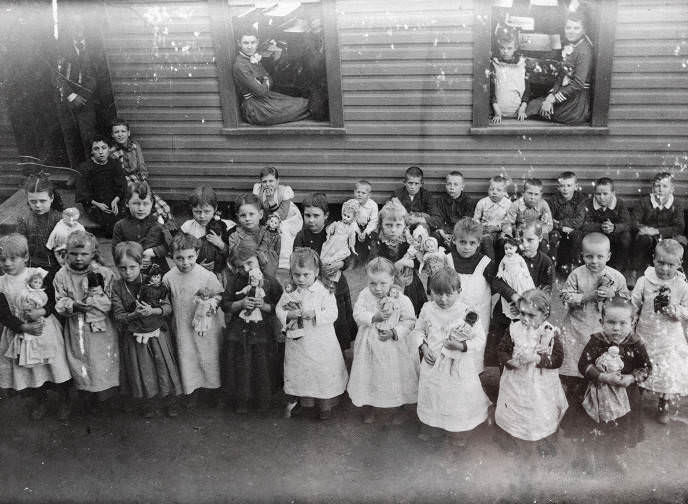
A group of children pose for a photograph outside of a schoolhouse, possibly at the Fort Worth Benevolent Home for orphans. The girls, each holding a doll, stand in two rows; the boys sit against the wall of the school. A male teacher stands in a doorway, and a few older girls sit in the window sills.
#114 Fort Worth Parade, 1895
#115 John Cella, Fort Worth Fire Chief, 1898
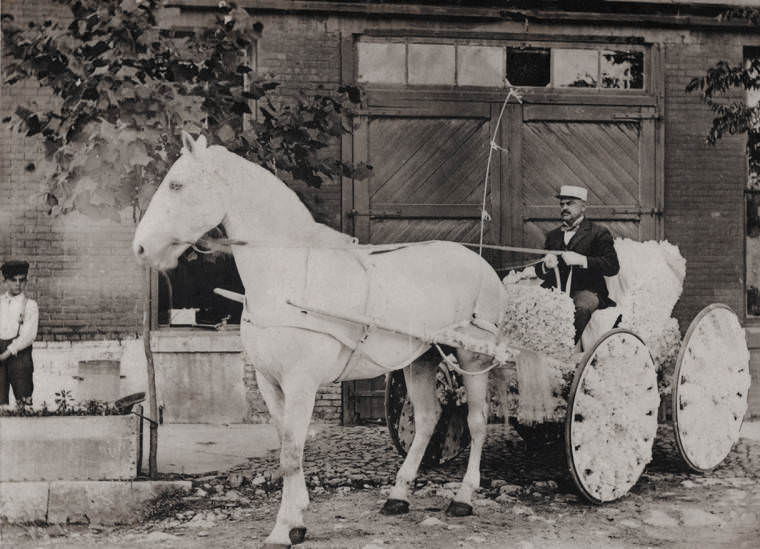
Written on accompanying insert: "This is a picture of the first paid Fire Chief of Fort Worth, John Cella, who was chief from 1894 to 1901, when he was succeeded by Jas H. Maddox . . . By the way of explanation, Chief Cella is in the Chief's buggy and it is decorated with white paper flowers to appear in the annual flower parade. In addition to being Chief, John Cella operated a bar in the old Mansion Hotel, on the corner of 4th & Main streets, and he paid the fireman by check and had them come to the bar to have their checks cashed, buy a drink, and pay the Chief any money they owed him.
#116 Mulkey Boys after a Flower Parade, 1898
#117 Flower Carnival Carriage, 1898
#118 Fort Worth University, 1891
#119 Fort Worth University Medical Department, 1895
#120 Fort Worth Parade on Belknap Street, 1898
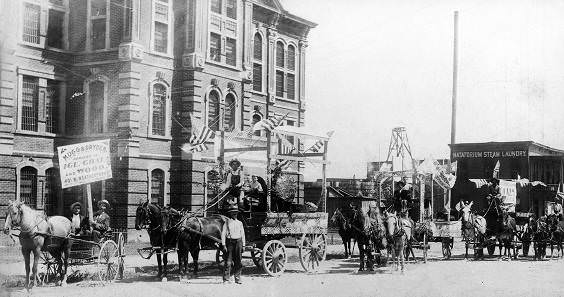
A parade headed east down the 100 block of Belknap Street, past the Tarrant County Jail (on the right). John A. Mugg, Jr. is seated on the left in the 1st buggy; his son M.E. Mugg is the small boy in the wagon. John A. Mugg, Jr. was grandson of A. F Leonard and Mary Ann Foster Leonard.
#121 West Side Fort Worth, 1896
#122 Jennings Addition House, 1890
#123 Thomas Jennings Home, 1894
#124 Hyde Jennings Home, 1890
#125 Casa Ventosa, 1898
#126 Frank W. Ball Home, 1895
#127 Interior of Frank W. Ball Home, 1895
#128 Old Home of Helen Daggett Moorman, 1890
#129 Masonic Widows’ and Orphans’ Home, 1899
#130 Home of David Boaz, 1892
#131 Ephraim M. Daggett Home,1890-06-01
#132 Ephraim M. Daggett Home, located at 603 E. Bluff Street, 1890
#133 Texas Spring Palace, 1890
#134 David Boaz Residence, 1894
#135 Fort Worth High School, 1895
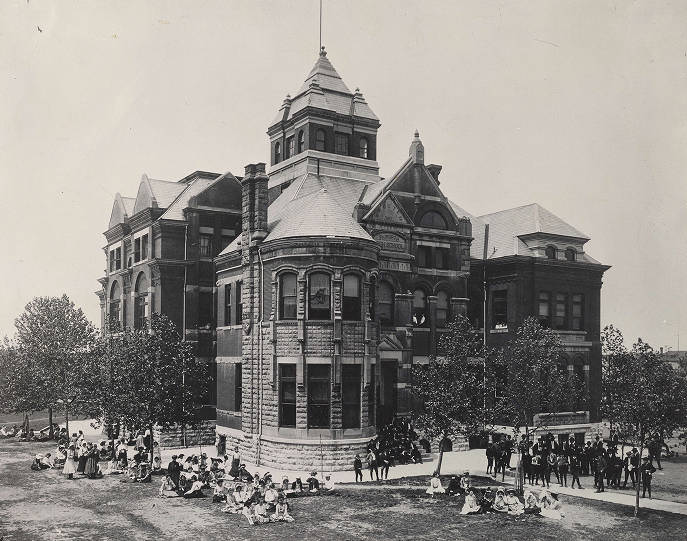
Numerous people stand on walkways and sit on the grounds of Fort Worth High School, a Romanesque-style building built in 1891. Designed by Sanguinet and Haggart, it was constructed by contractors Smith and Barden. This was the first school in the area to educate both boys and girls, but was destroyed by fire on December 2, 1910.
#136 Fort Worth Saddle Shop, 1890
#137 John W. Bondurant’s Office, 1894
#138 Fort Worth & Rio Grande Railway, 1890
#139 South Side Grocery, 1888
#140 Land agency on the corner of Lancaster and Main Street, 1880
#141 Cotton Belt Railroad Depot, 1896
#142 Hendricks Office Building, 1890
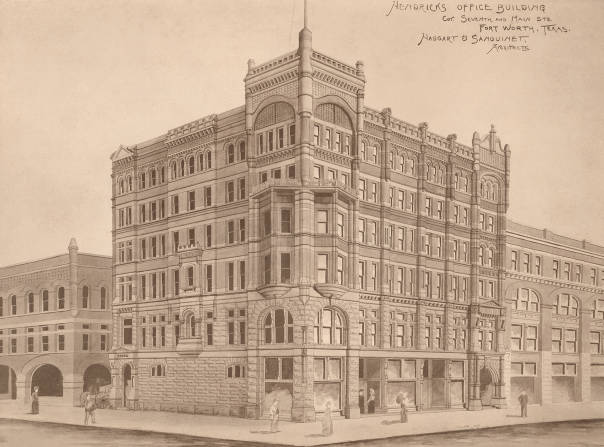
An architectural rendering of Hendricks office building by architects Haggart & Sanguinet. The structure was to be built at the corner of Seventh and Main Streets, but may have instead become the Worth Hotel, which had the August's Department Store occupying the ground floor.
#143 Anheuser-Busch Brewing Association, 1885
#144 Worth Hotel and August’s Department Store, 1899
#145 Farmers and Mechanics National Bank Building, 1895
#146 Cattle Yard and Train Stop, 1890
#147 Chile’s Dam, 1896
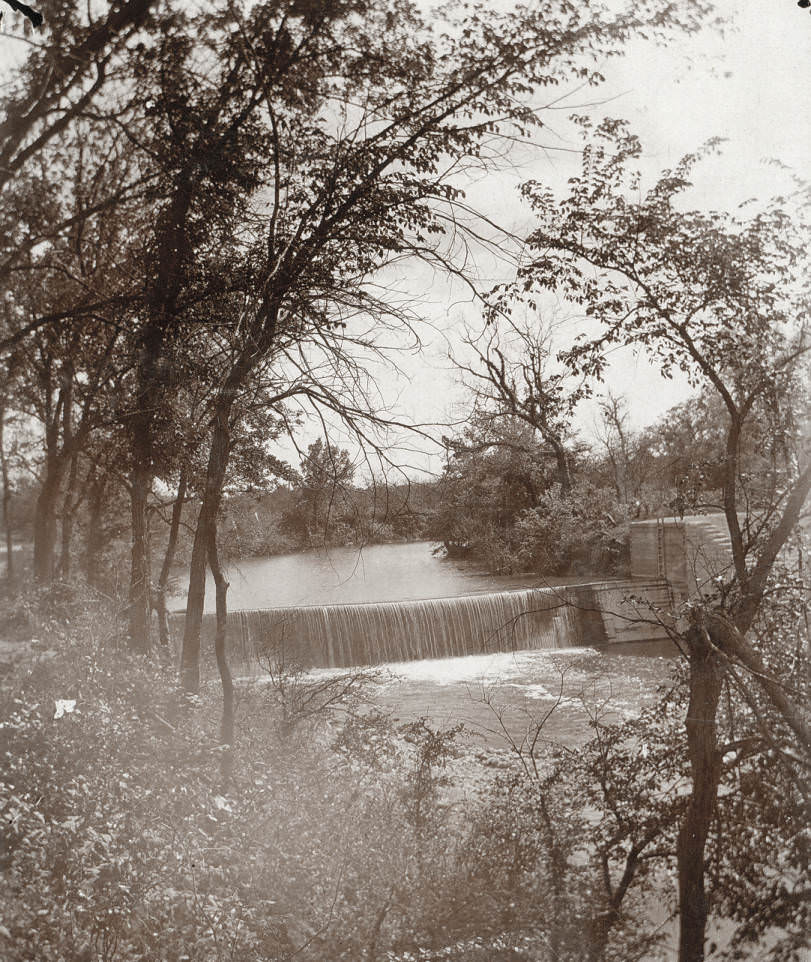
Chile's Dam, also known as City Park Dam, seen from the banks of the Clear Fork of the Trinity River. When this photo was taken, the City of Fort Worth Water Works Department had just completed repairs on a series of dams located on the Clear Fork. The department designated Chile's Dam as Clear Fork Dam, No. 1, which was built in 1892 to provide a water supply for the Holly Water Treatment Plant. The dam was demolished when the river channel was straightened in the 1930s. The Lancaster Avenue Bridge crosses over the old site.


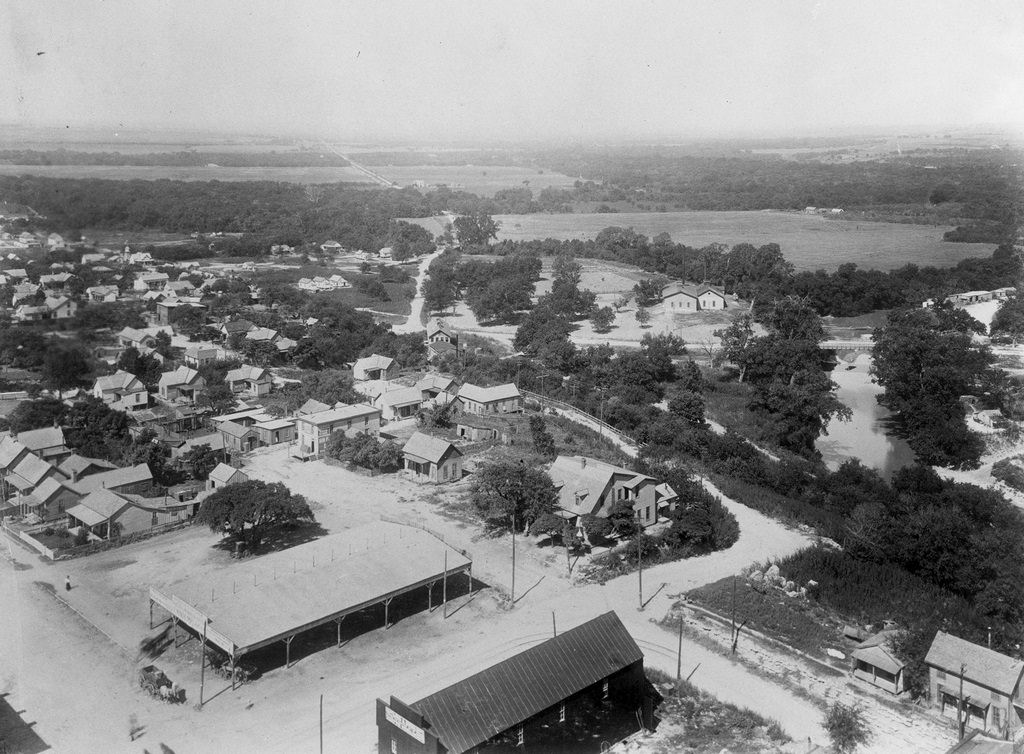
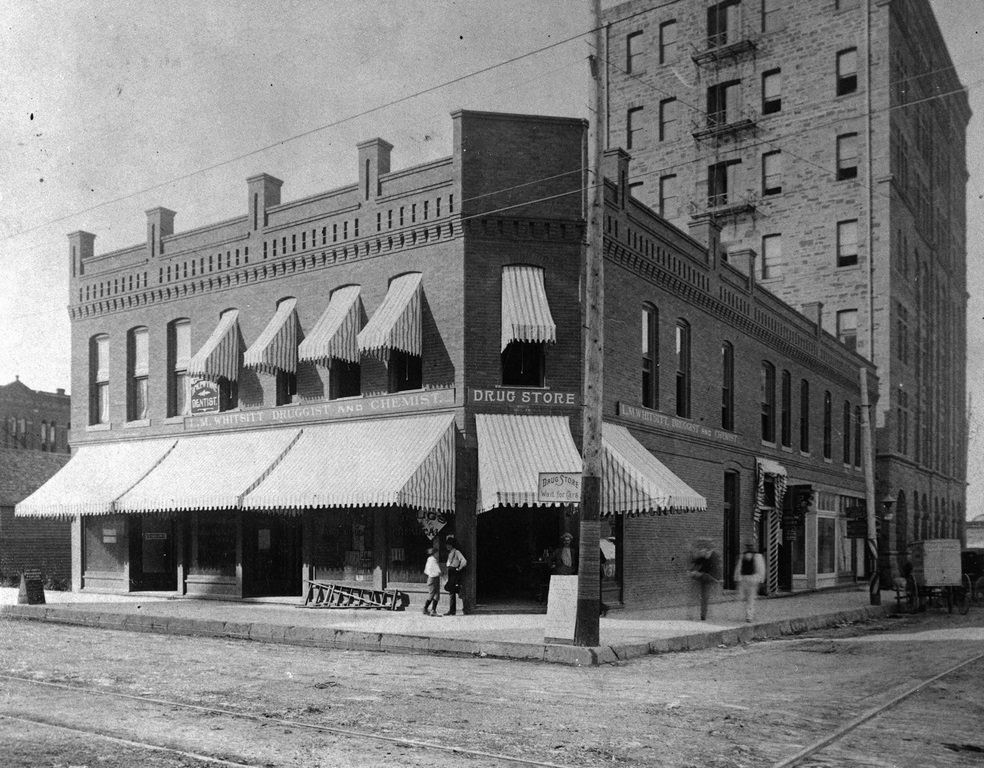
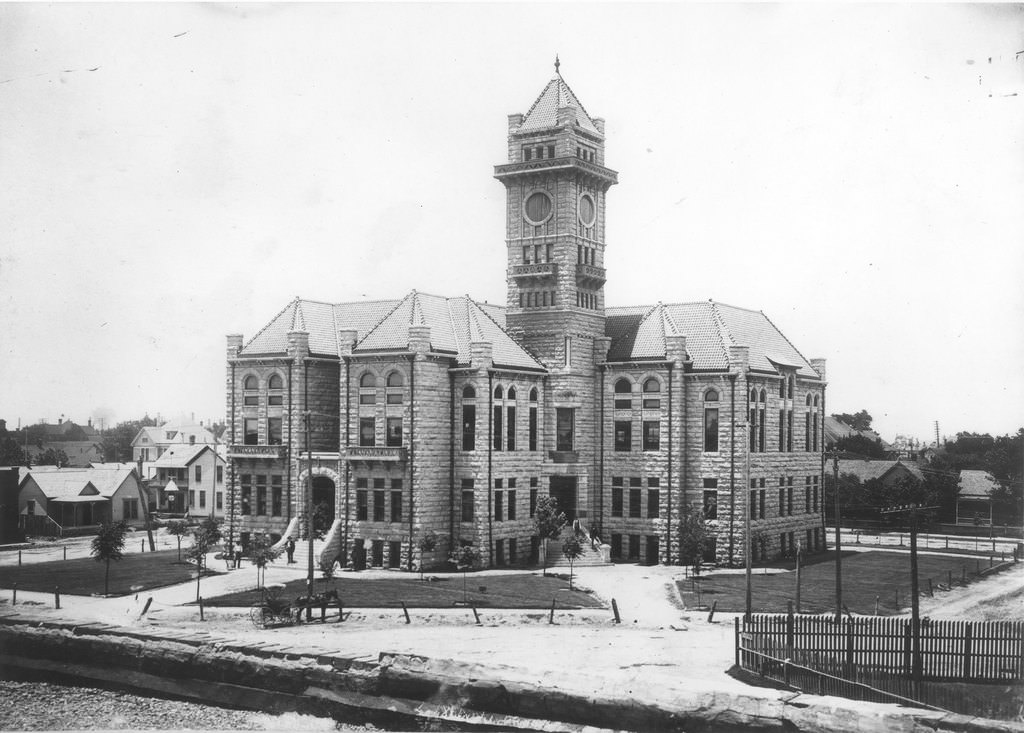
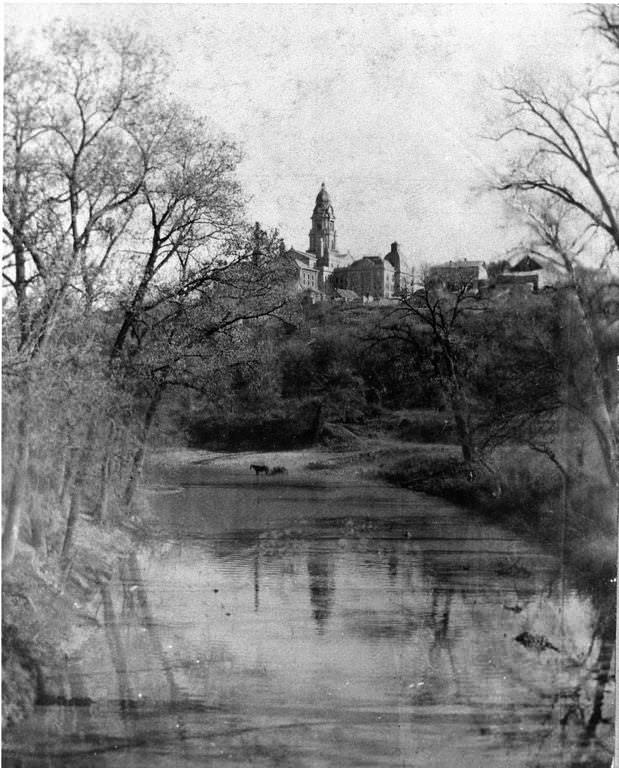
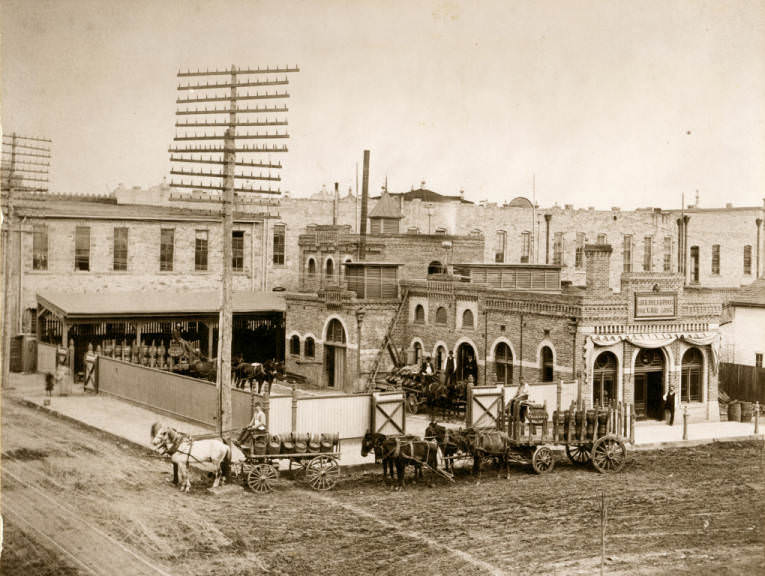
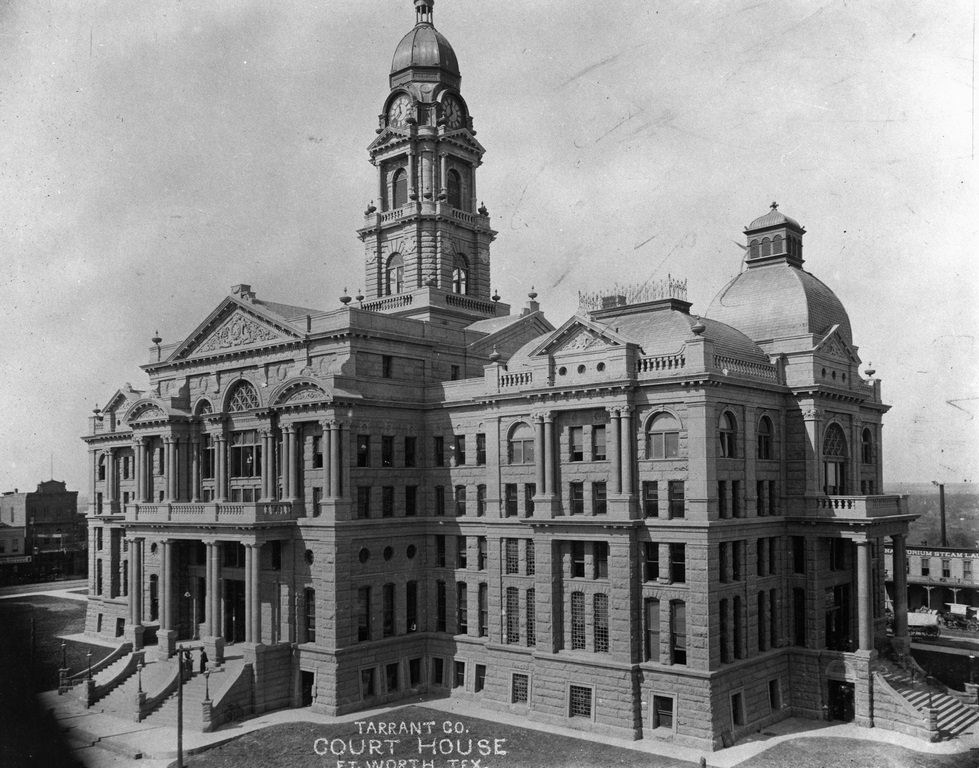
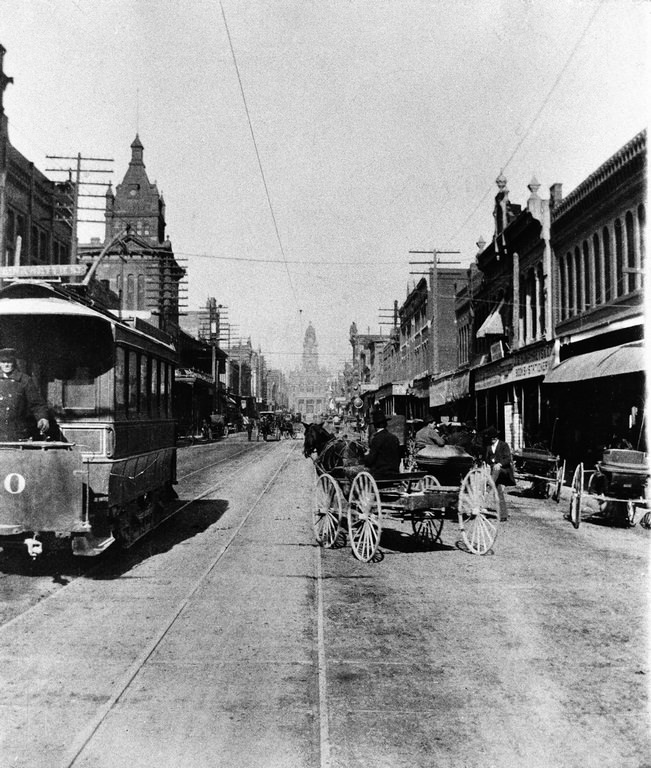
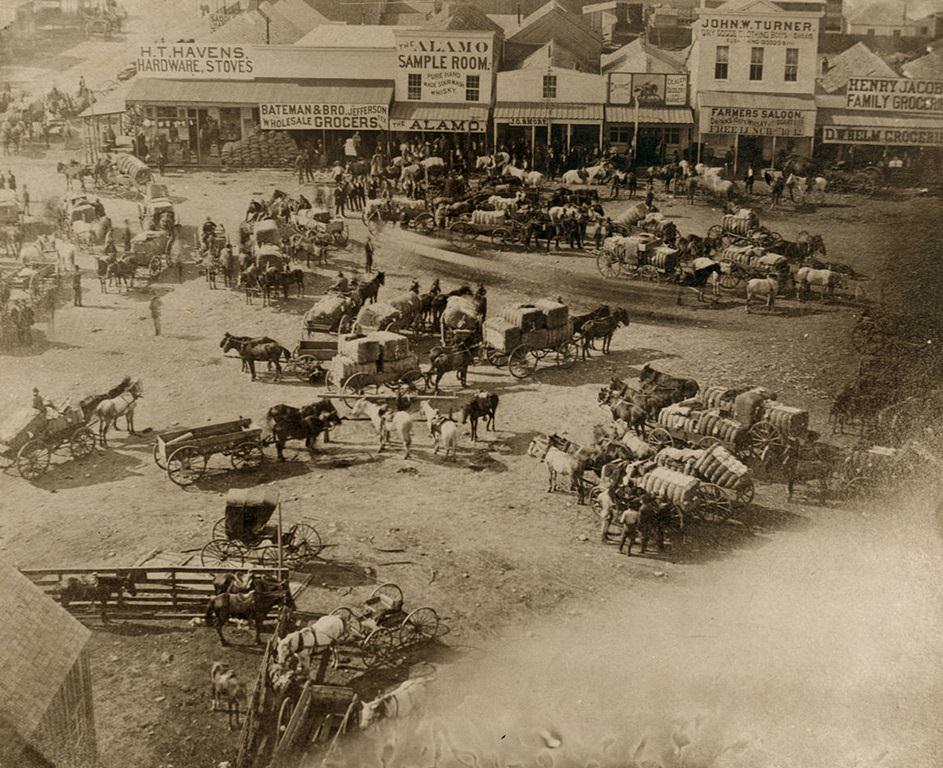
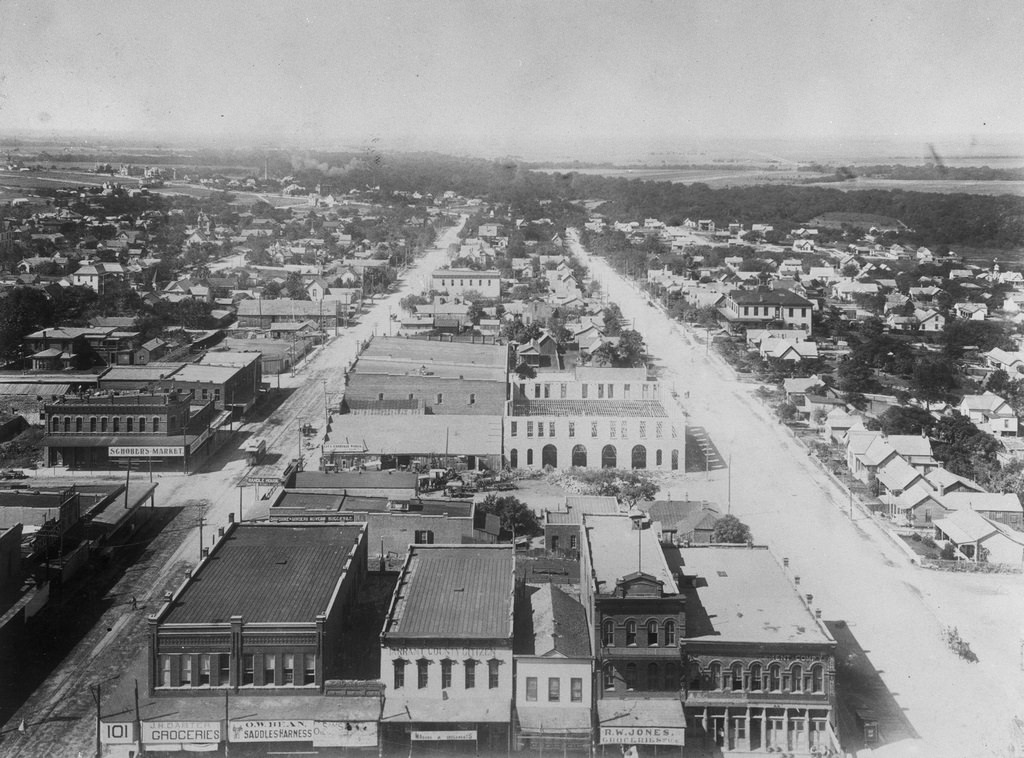
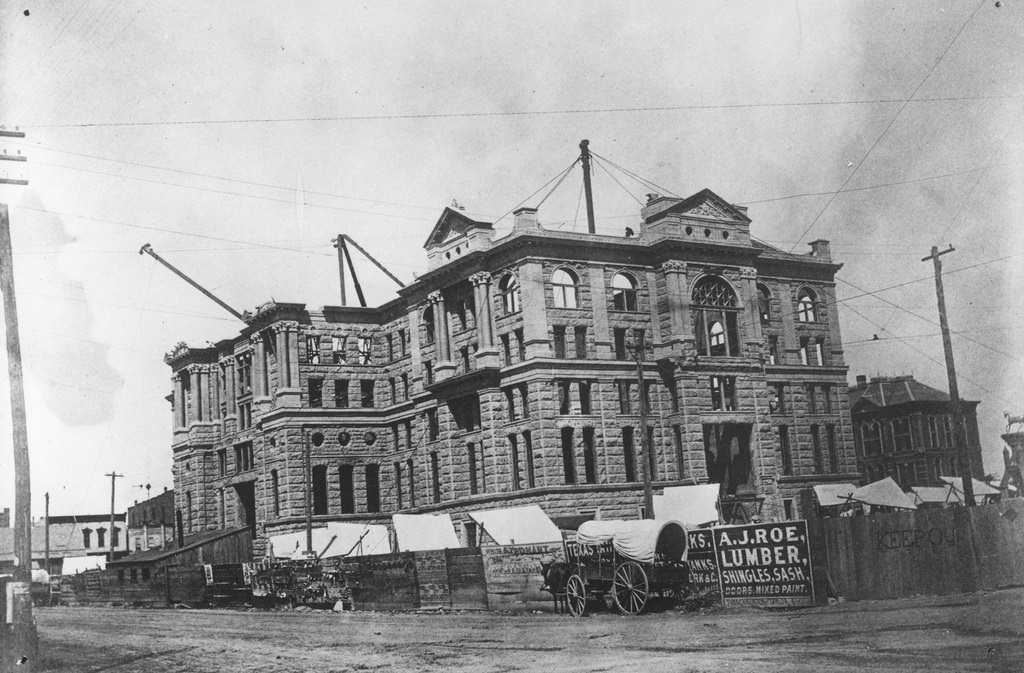
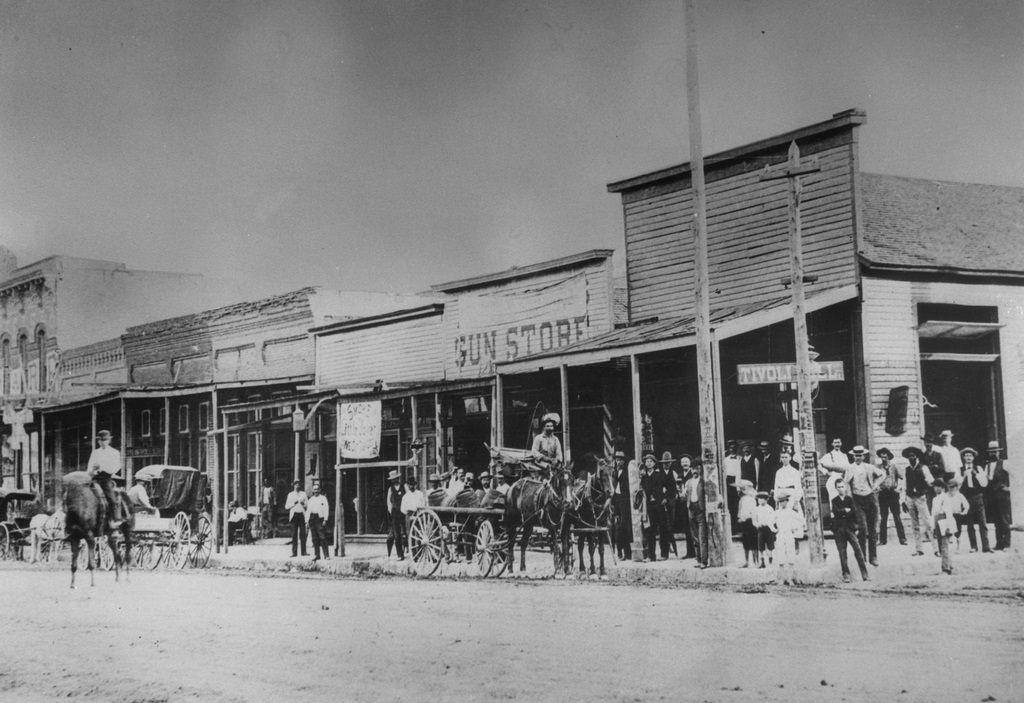
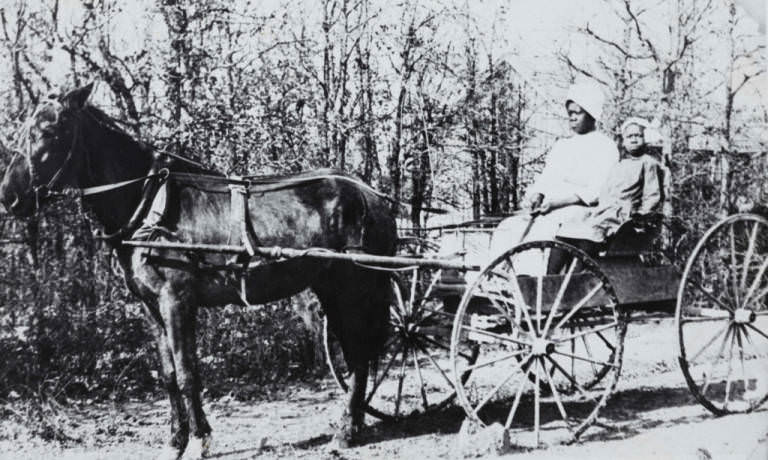
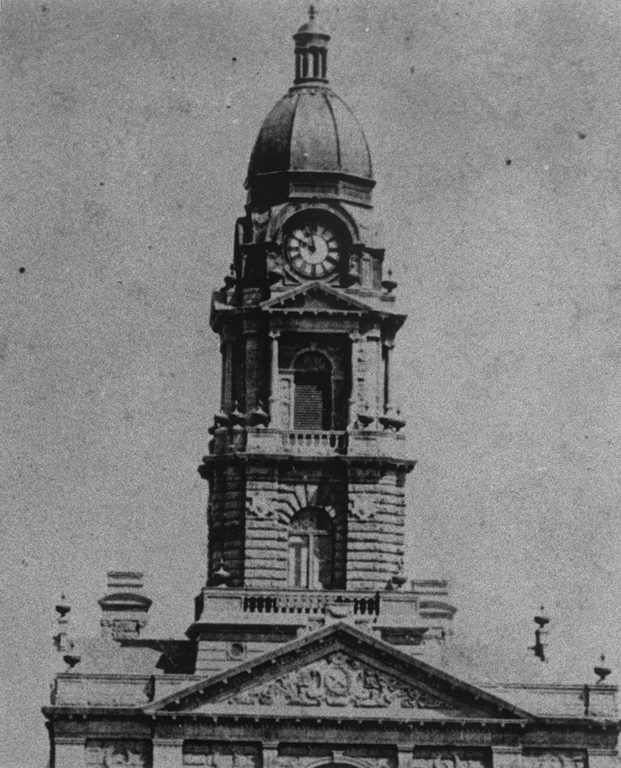
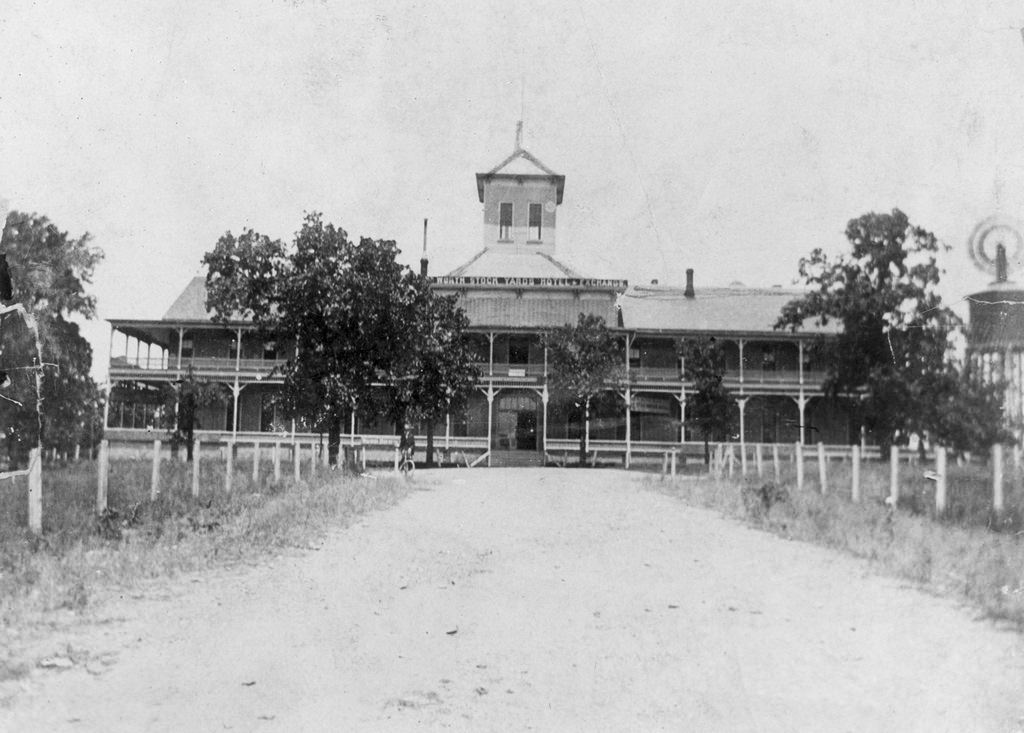
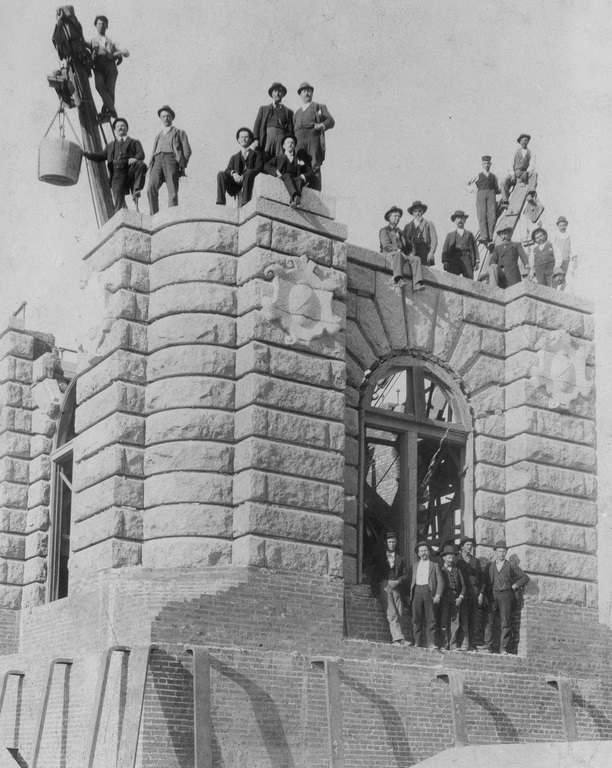
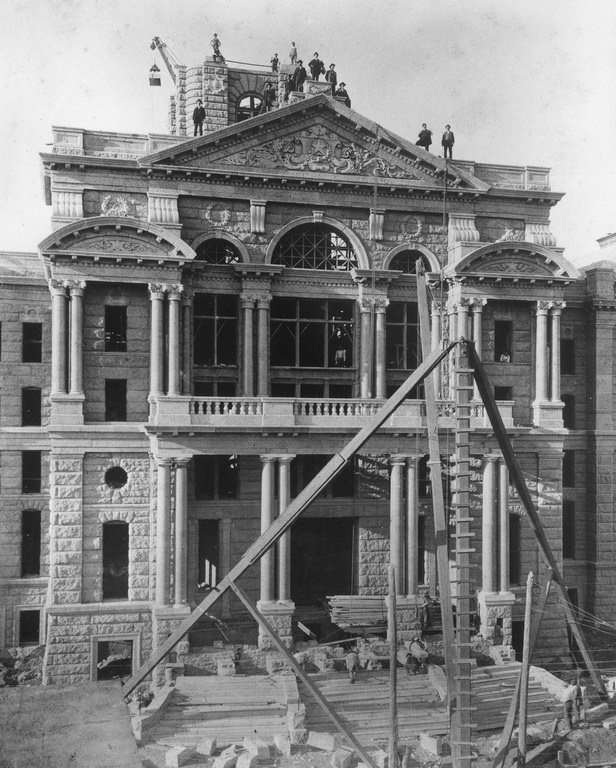
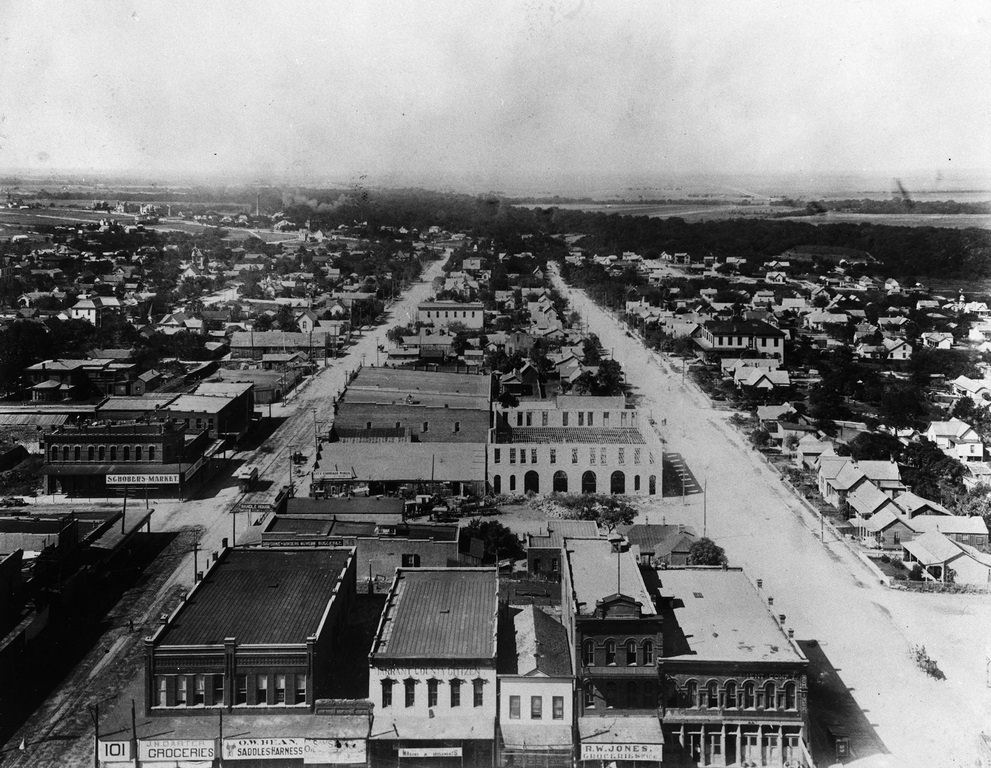
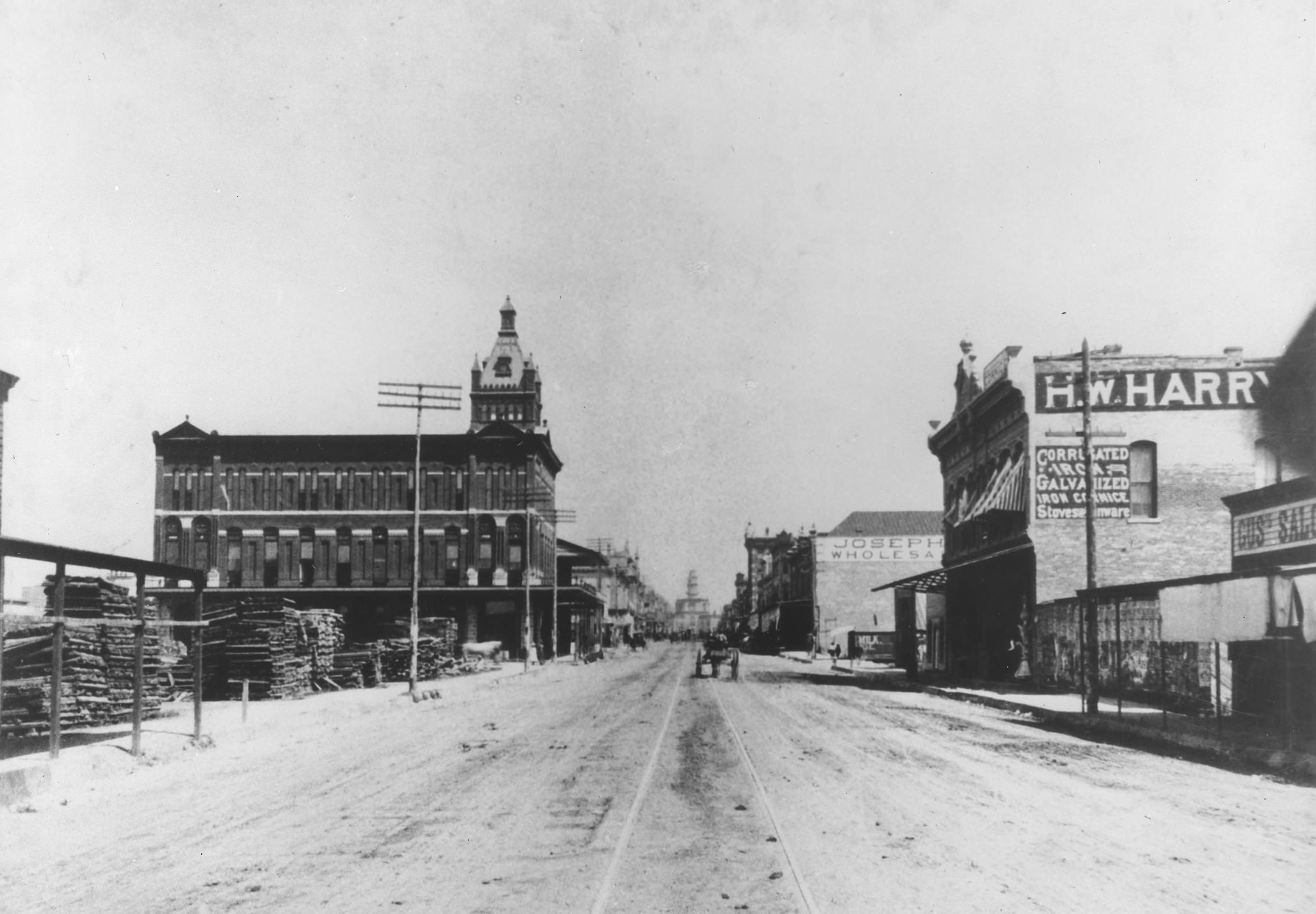
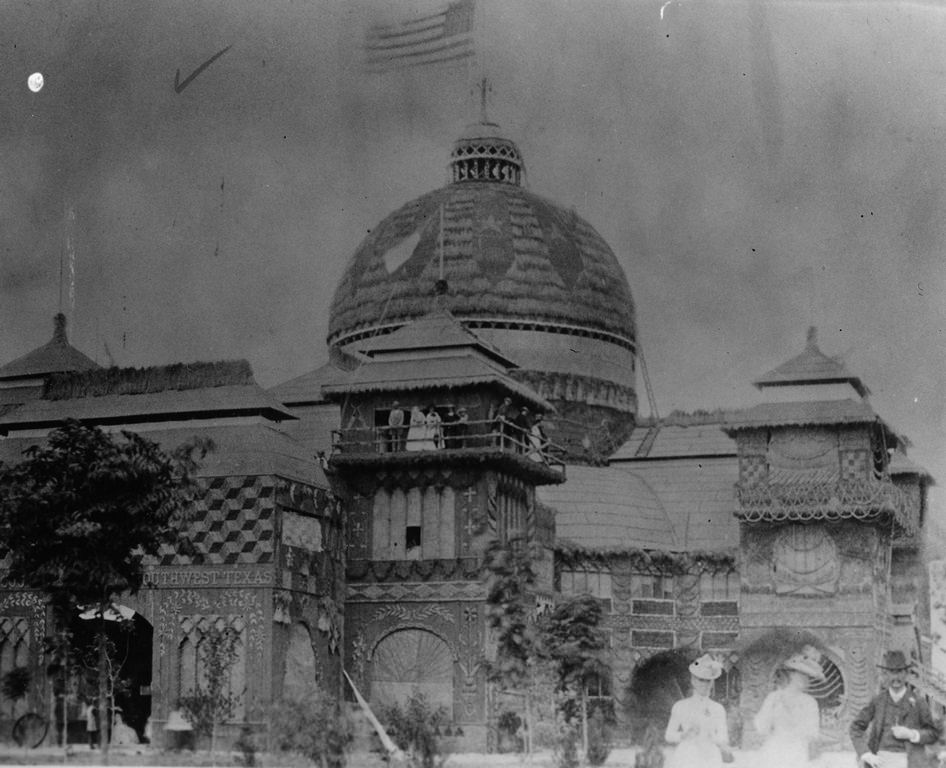
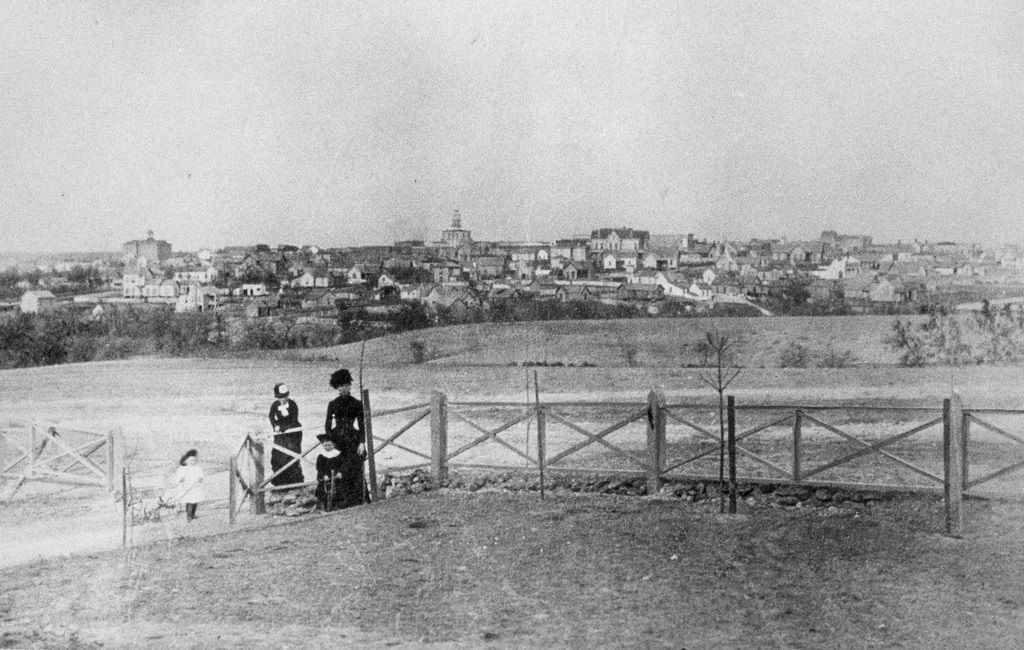
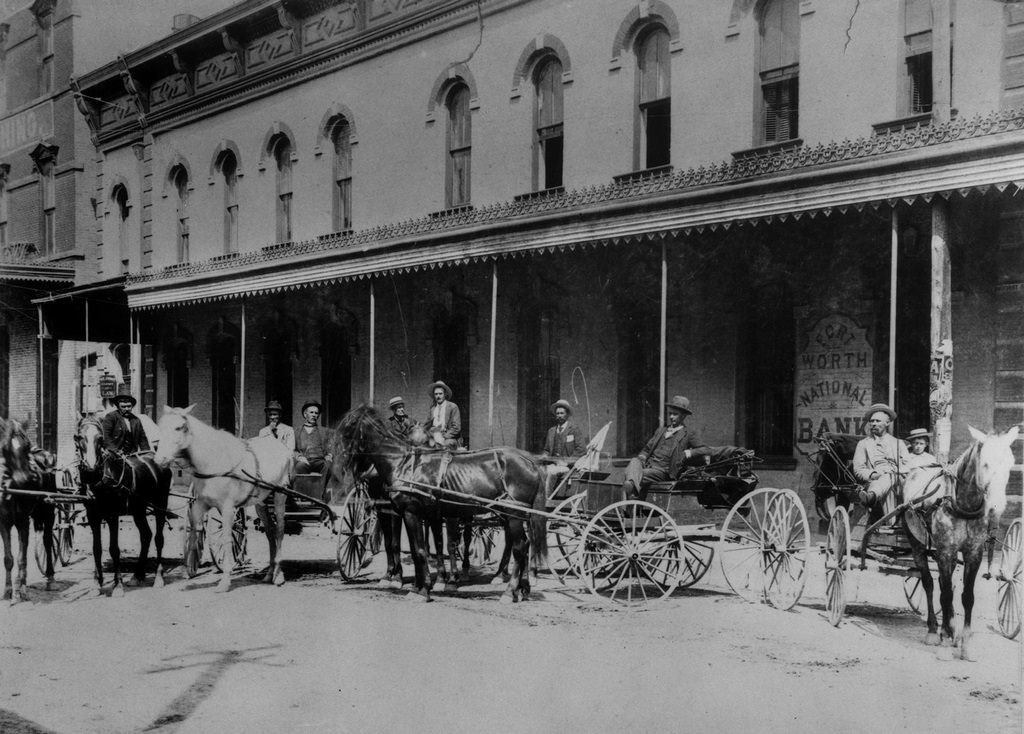

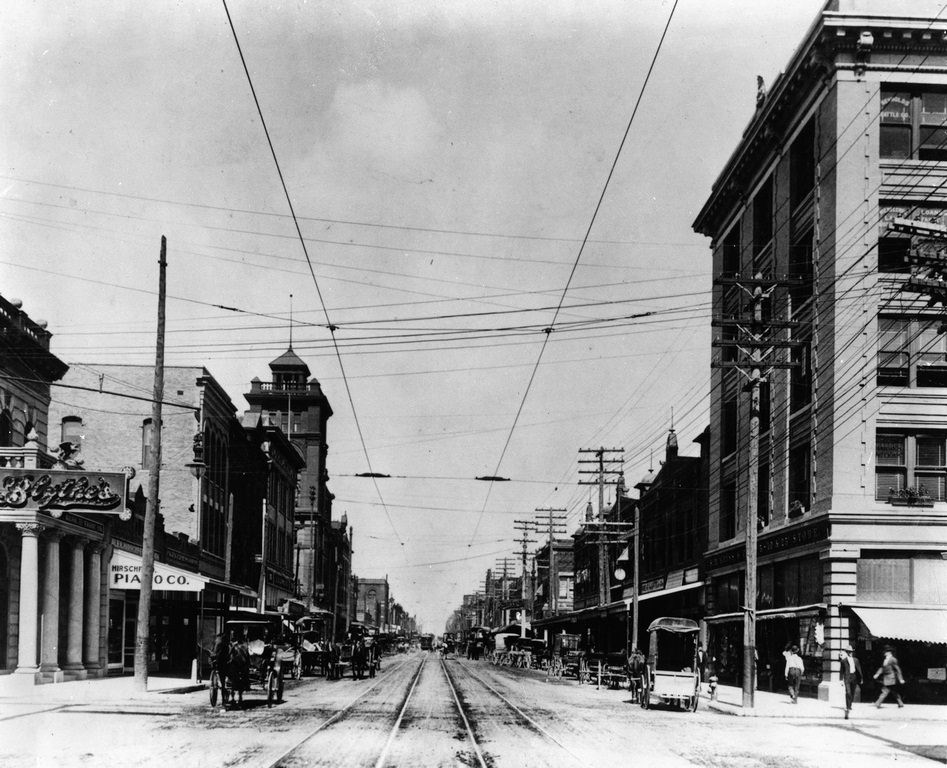
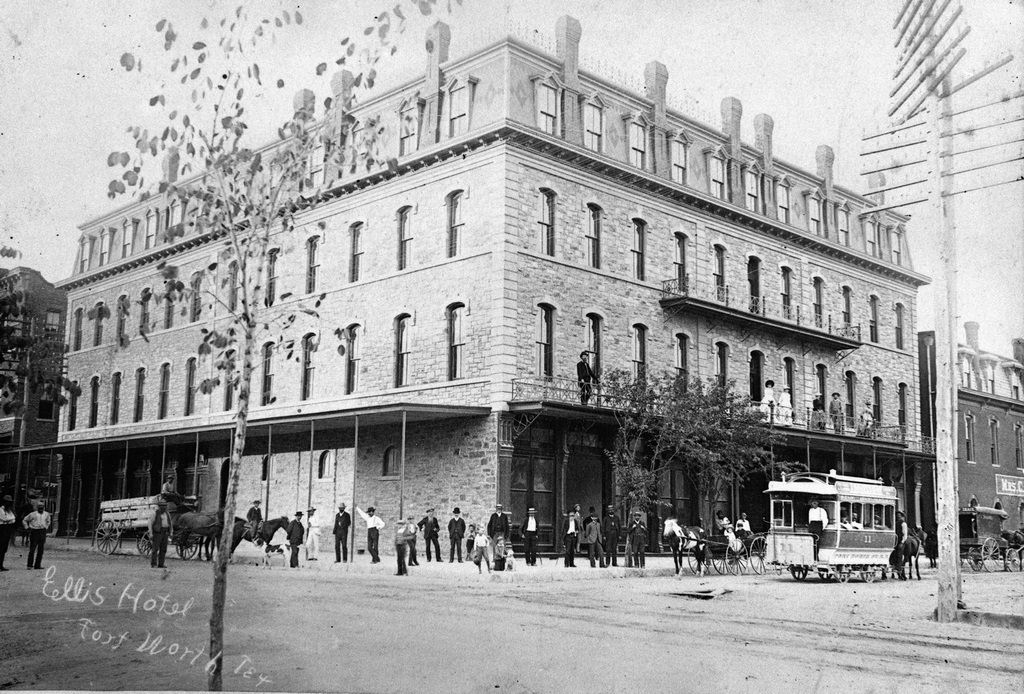
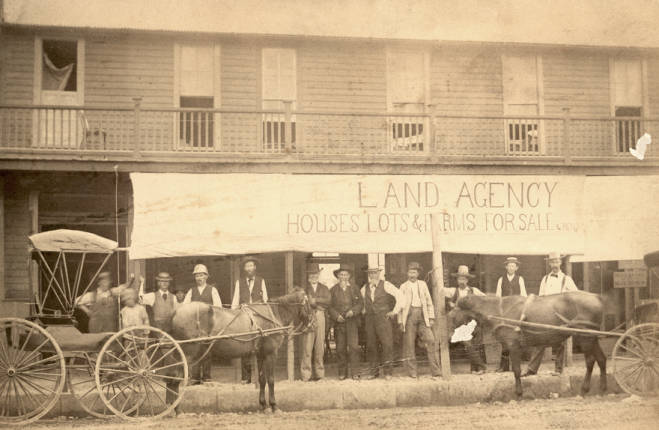
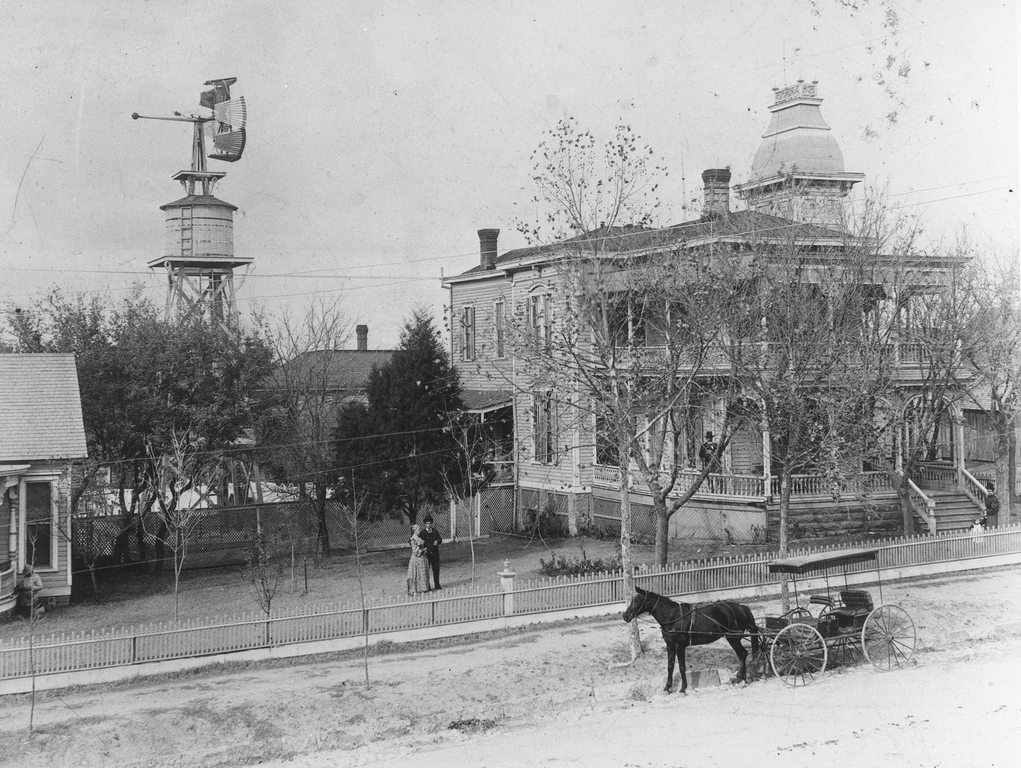
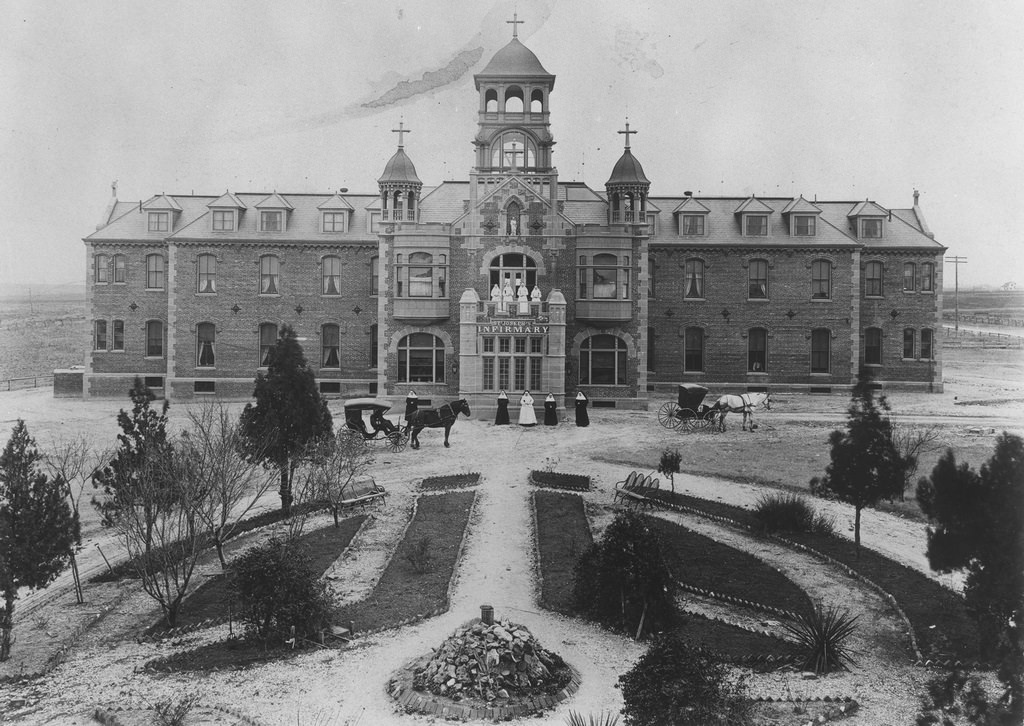
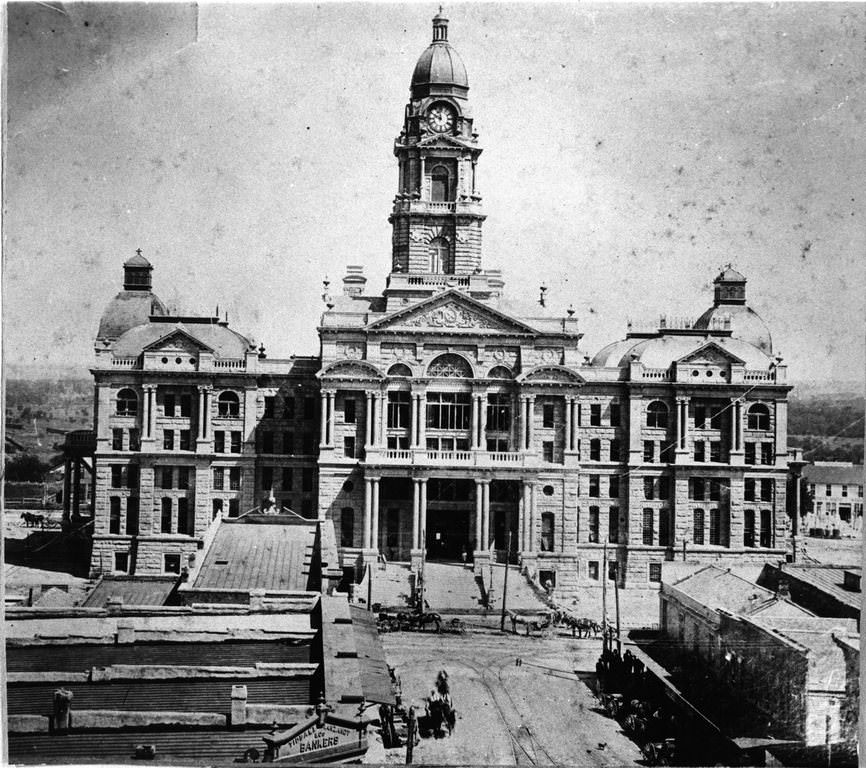
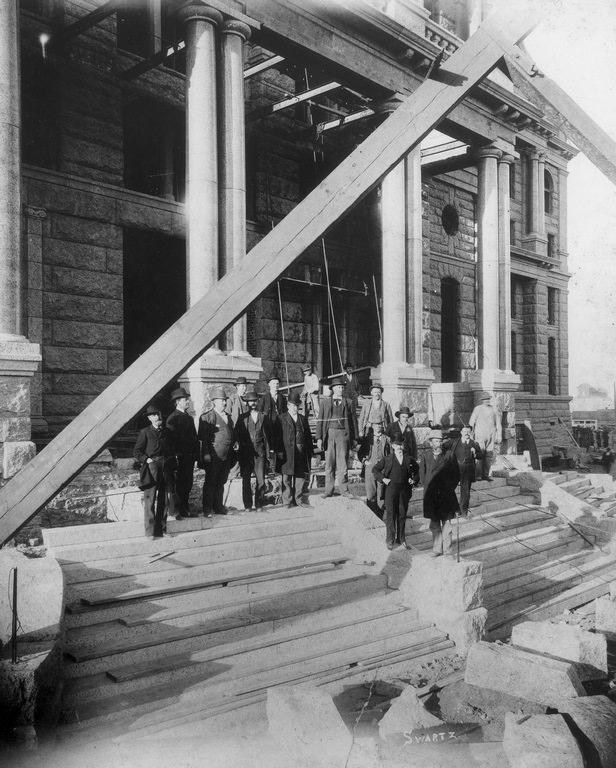
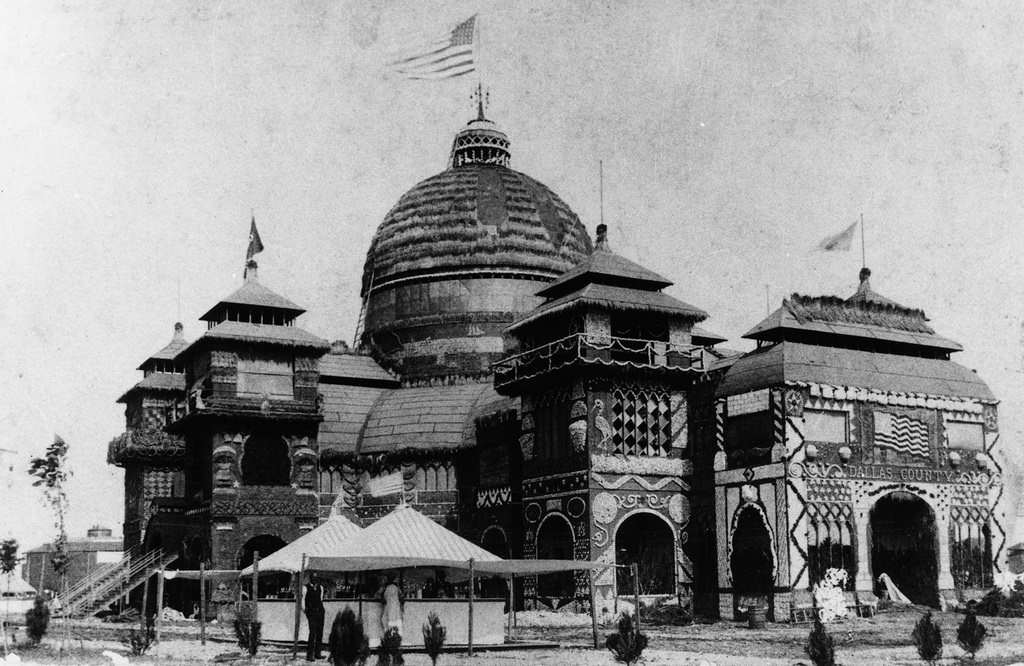
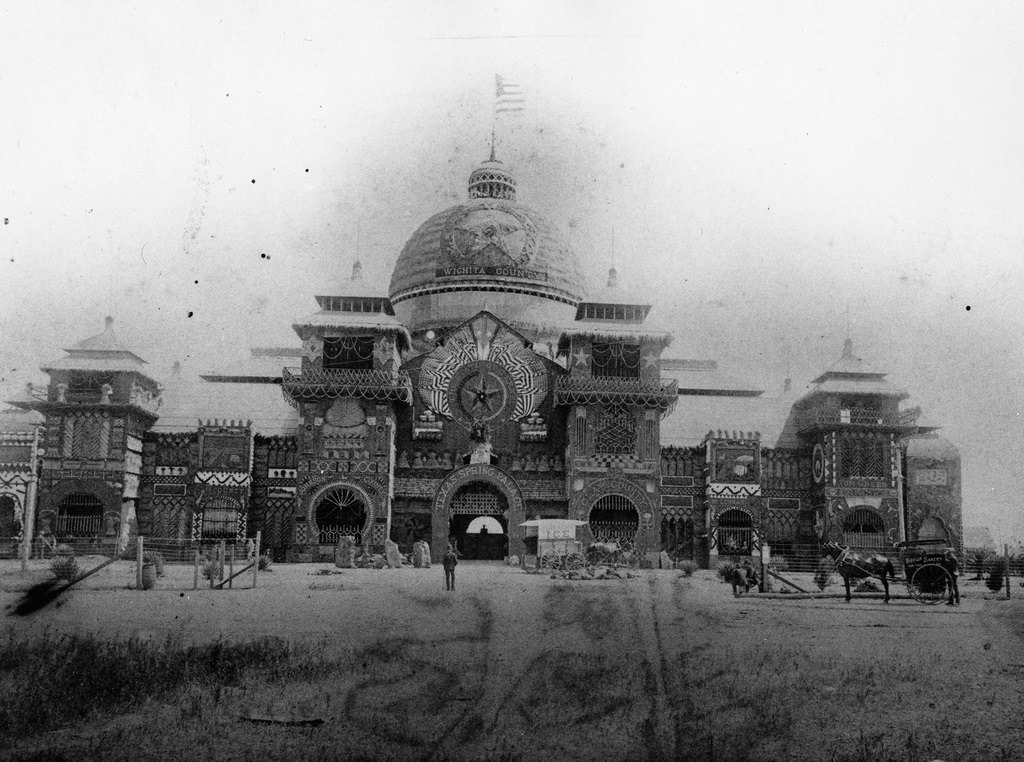
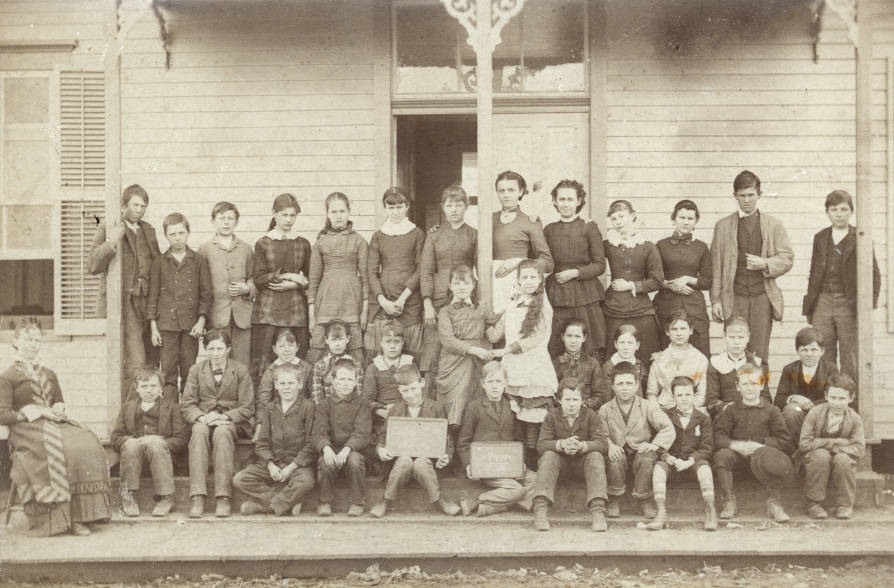
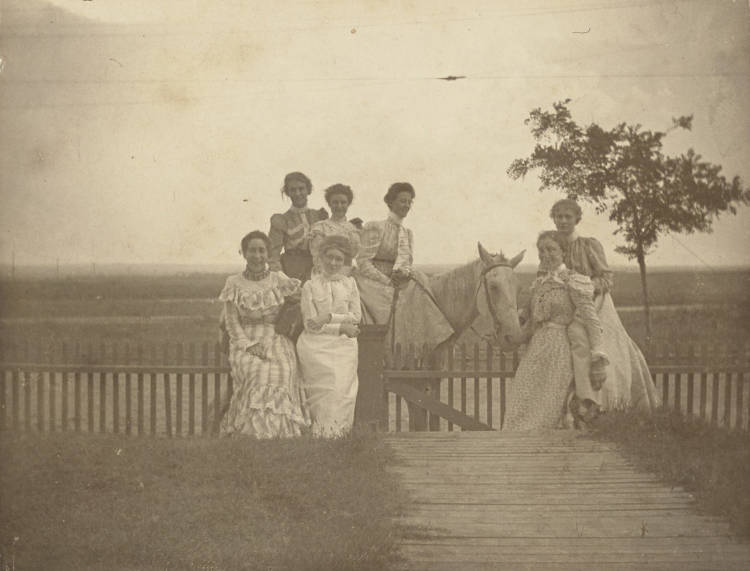
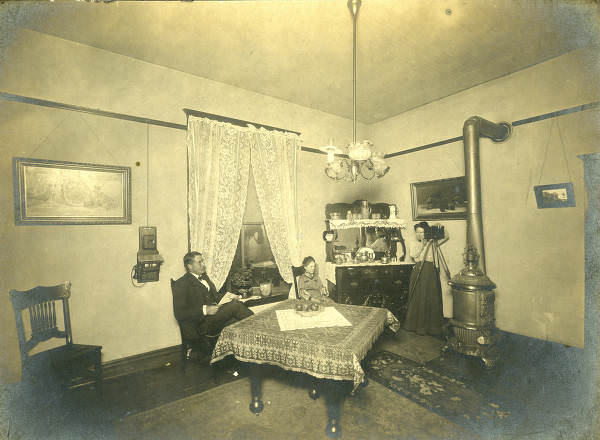
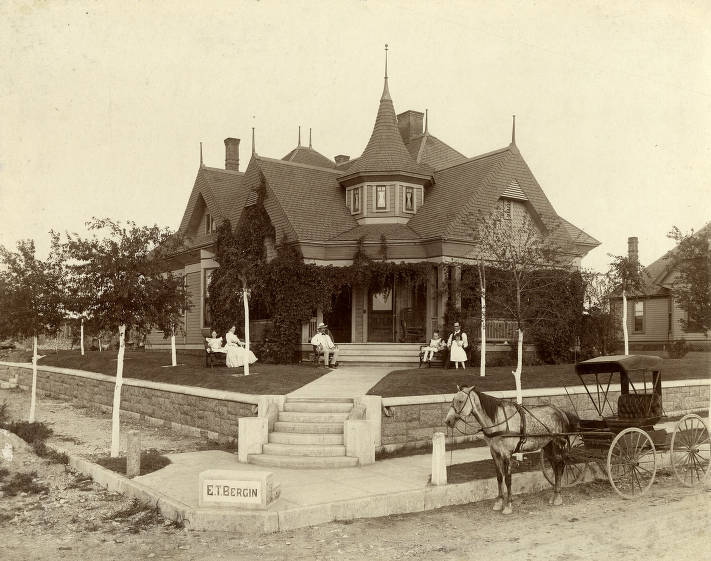
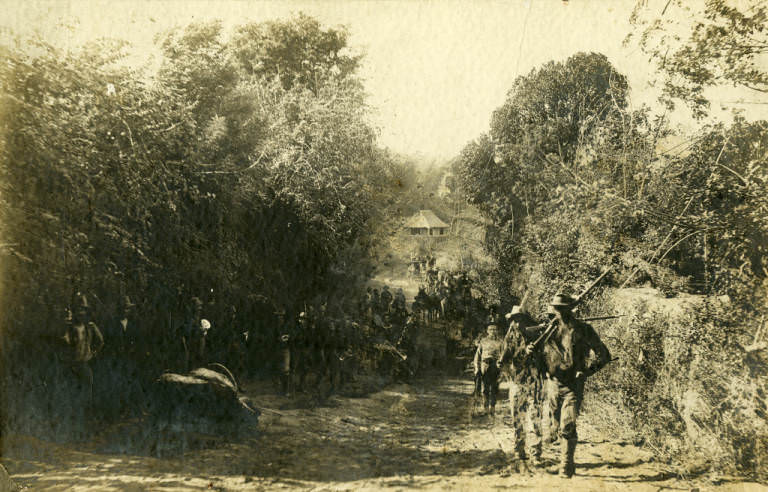
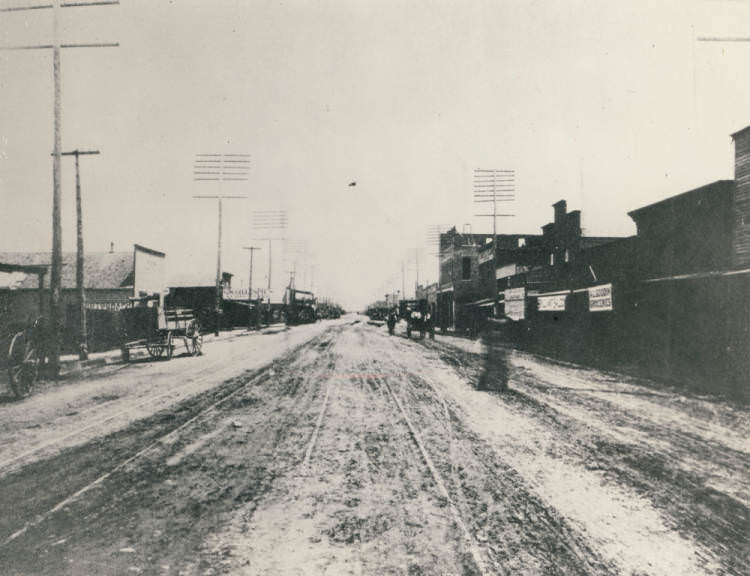
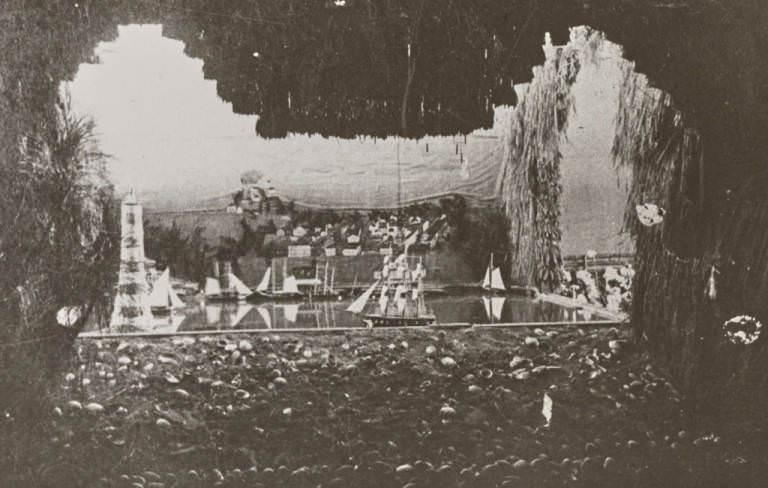
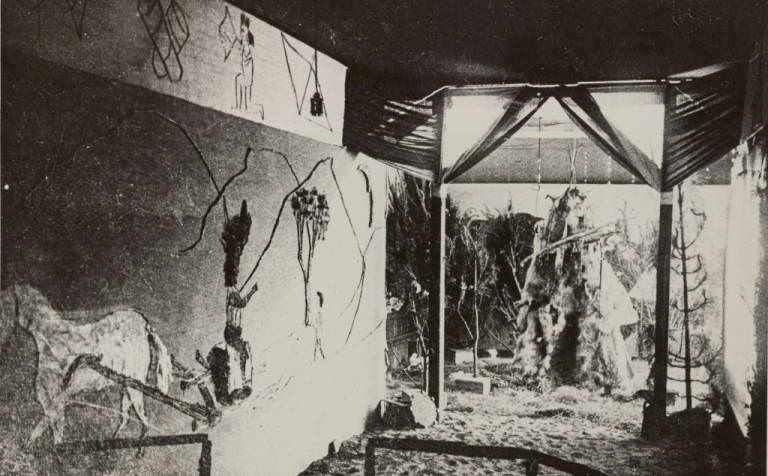
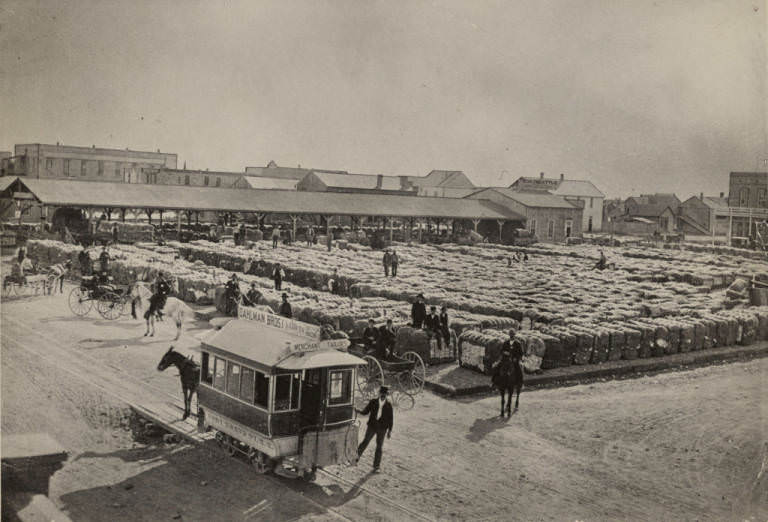
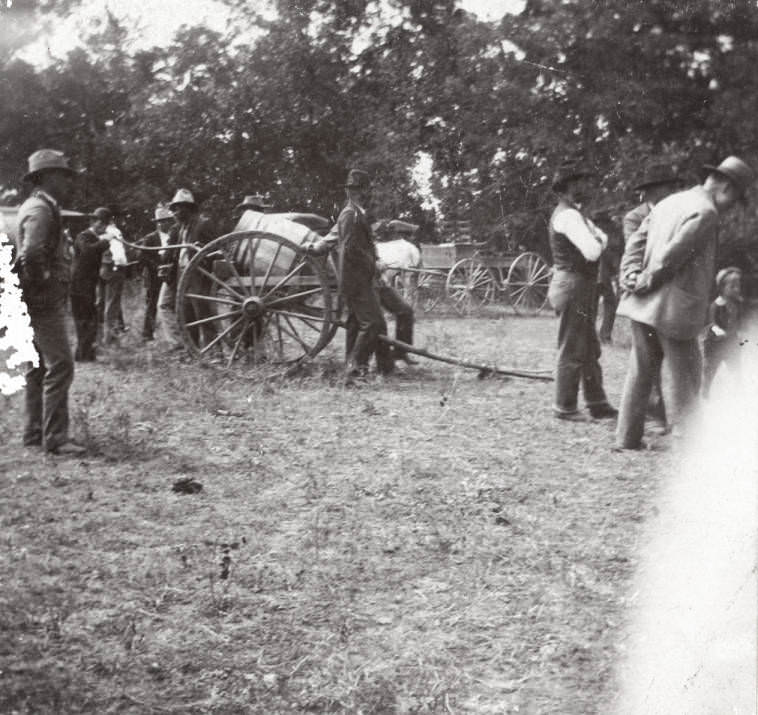
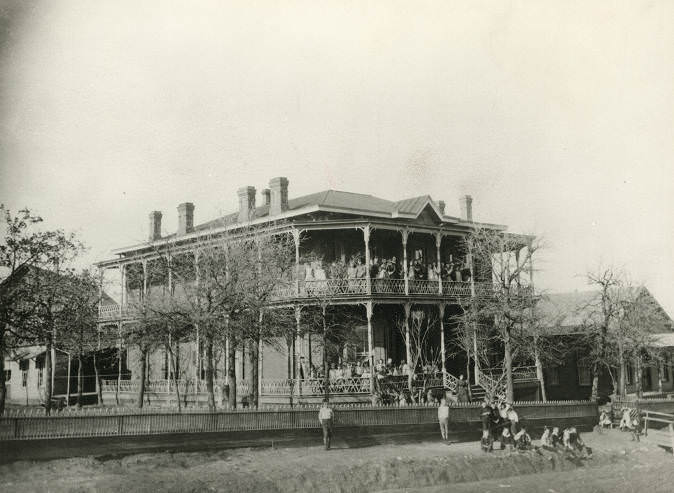
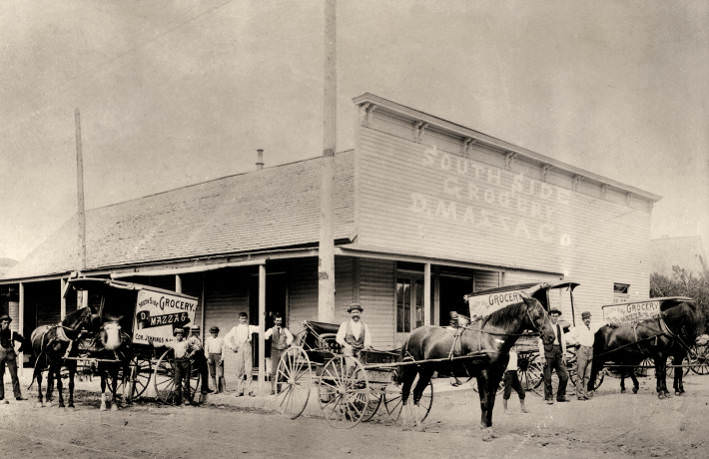
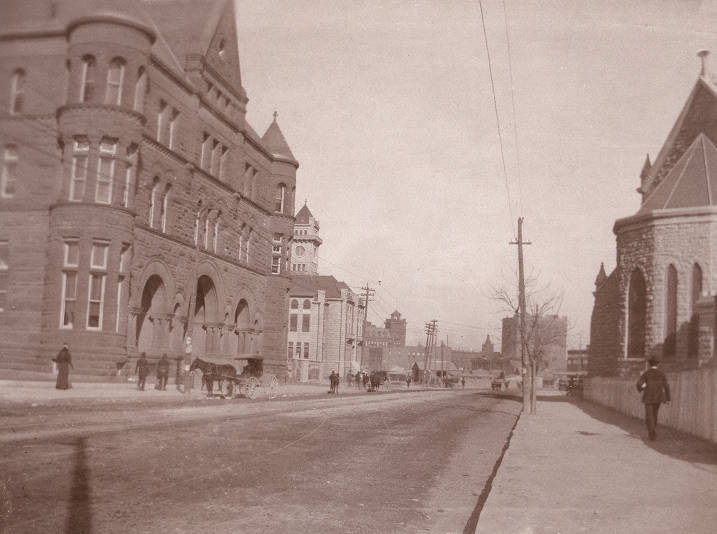
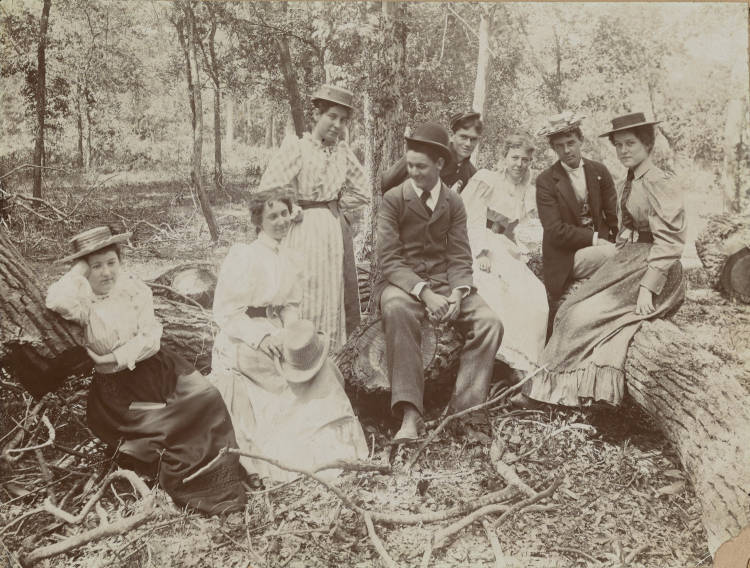
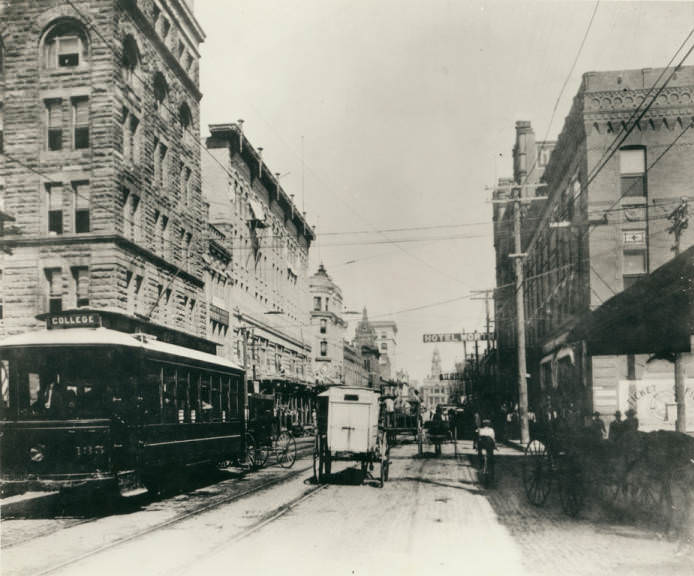
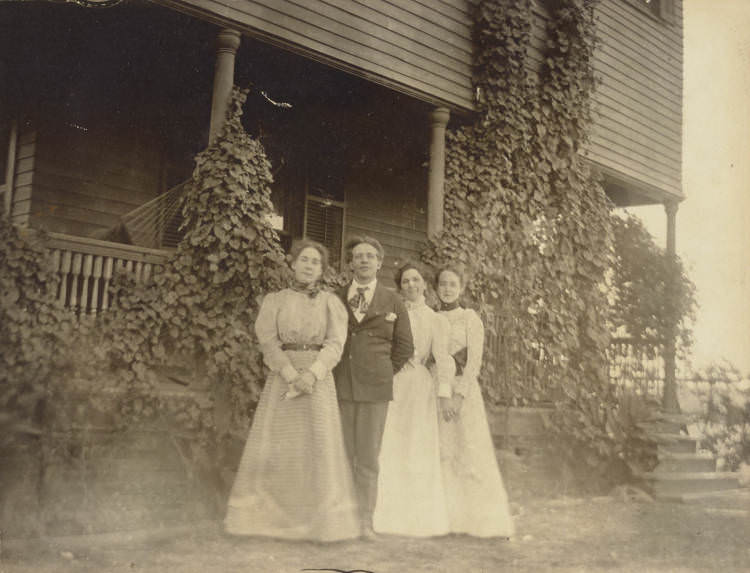
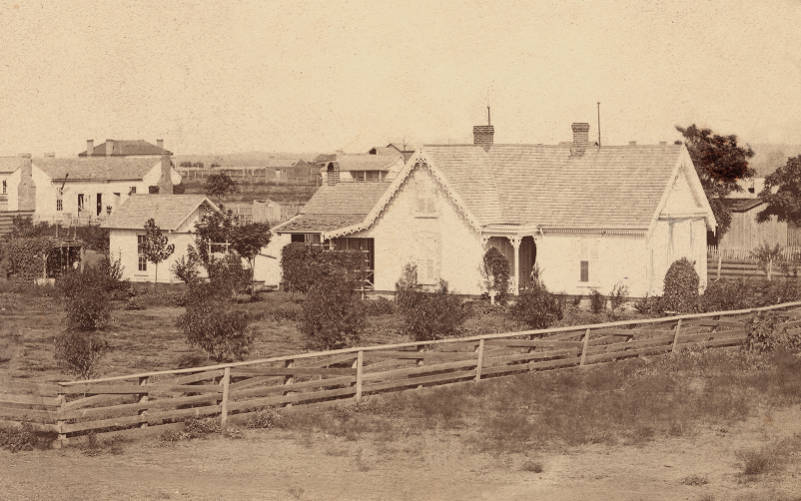
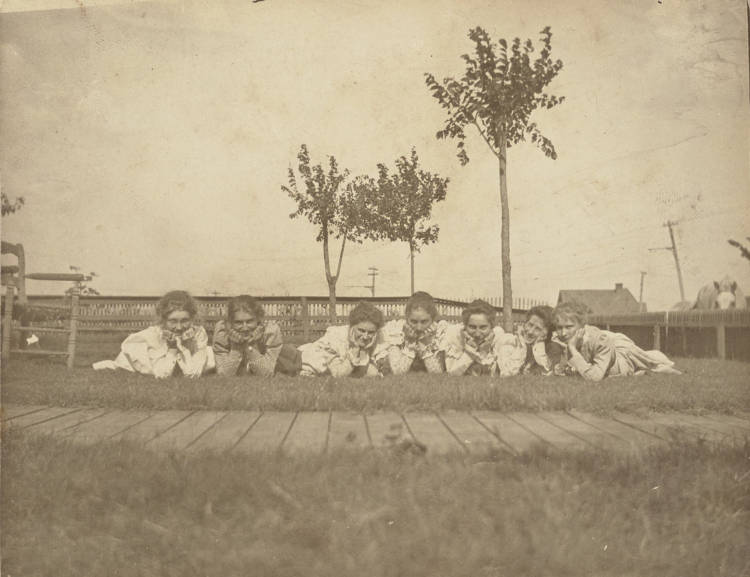
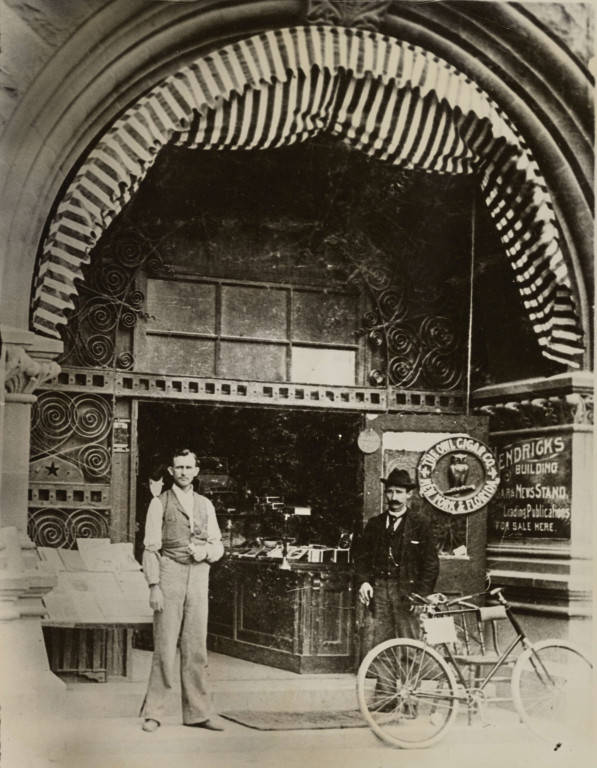
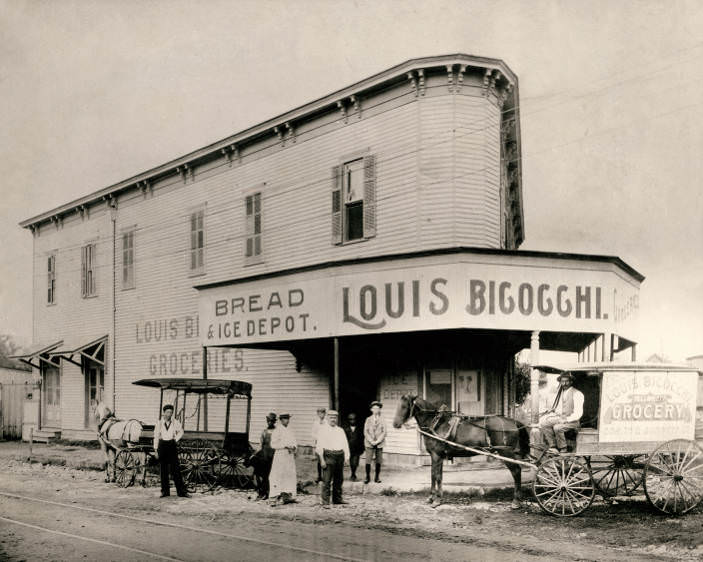
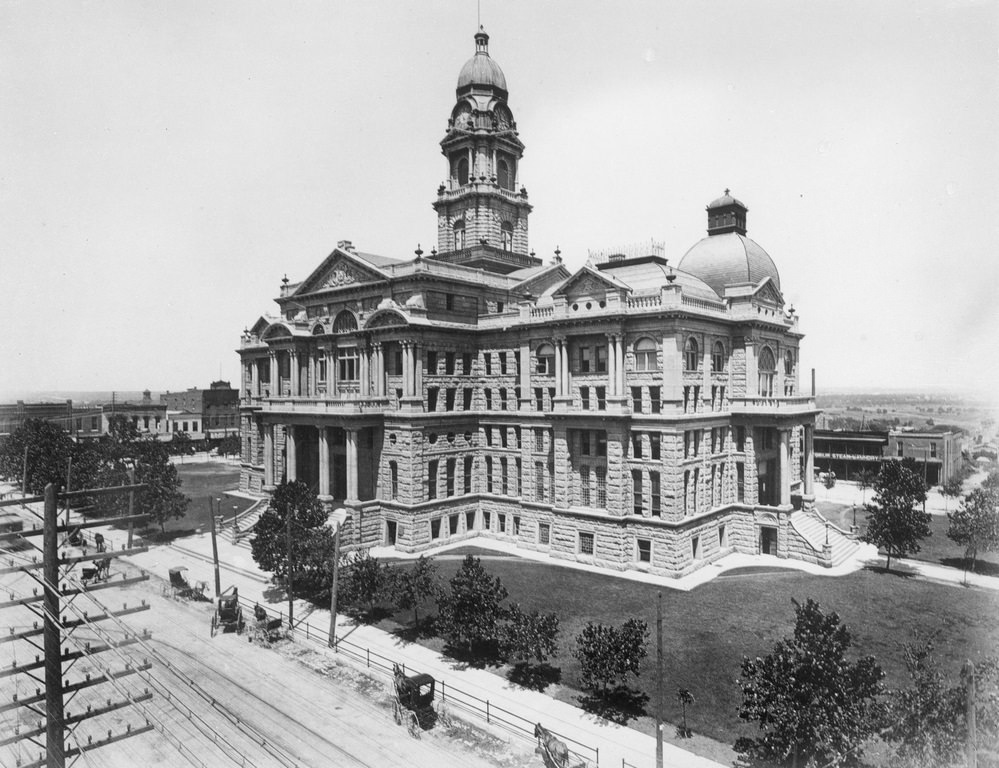
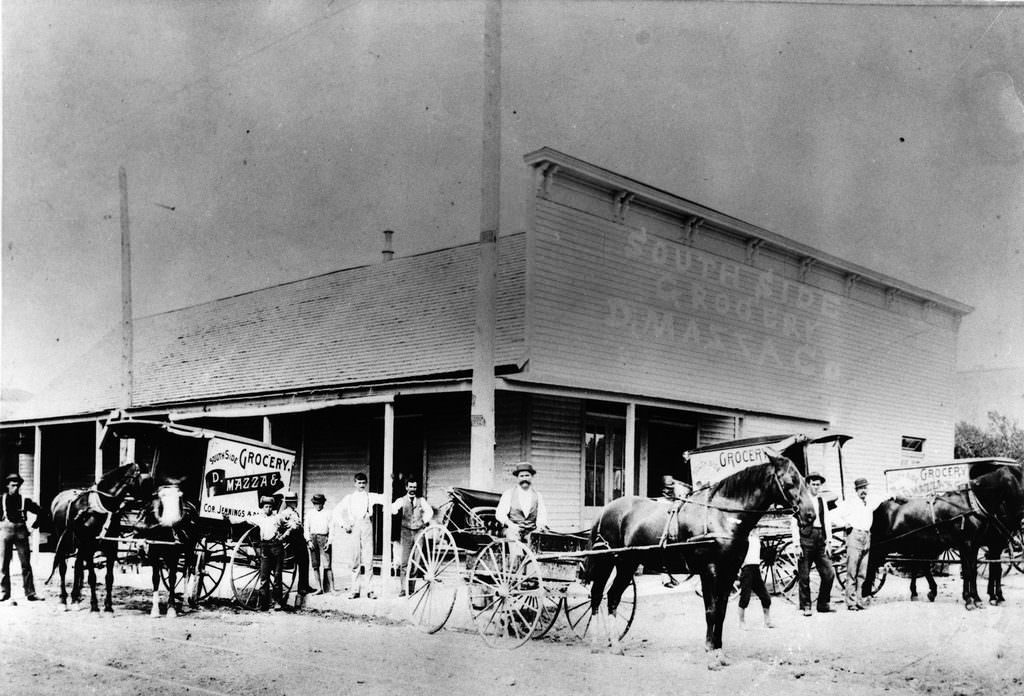
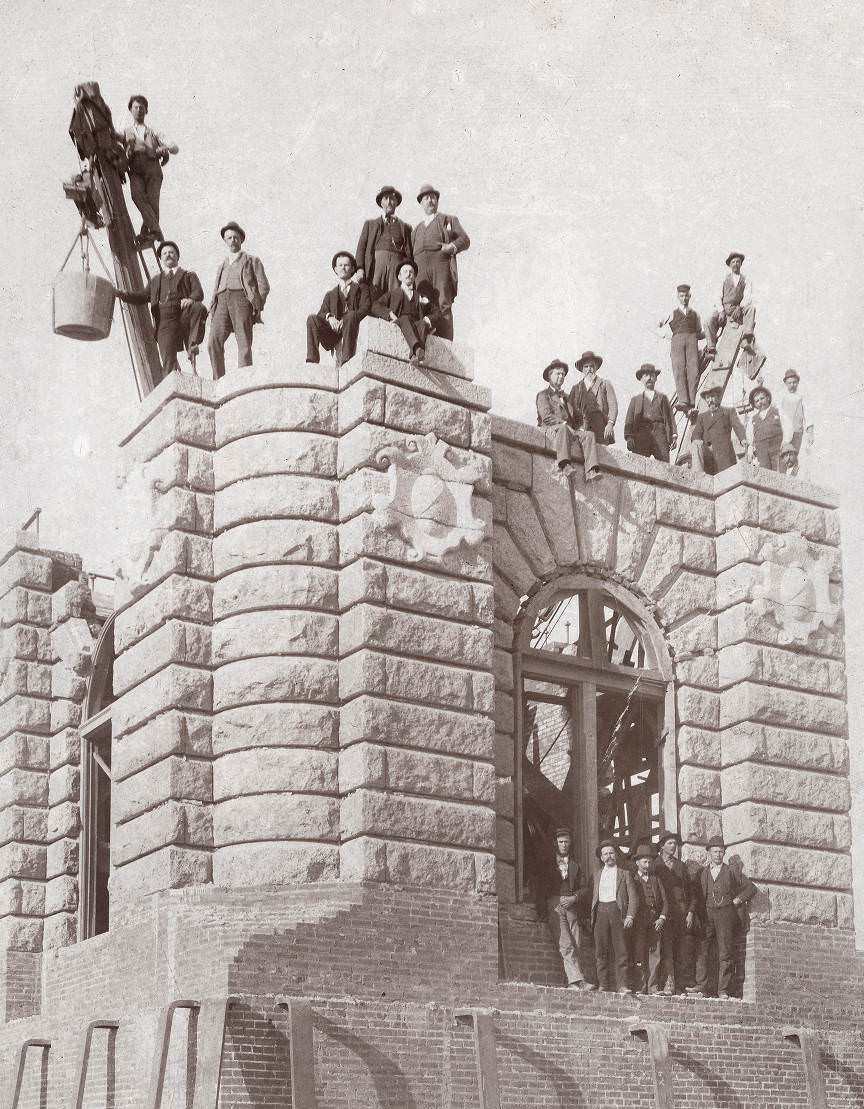
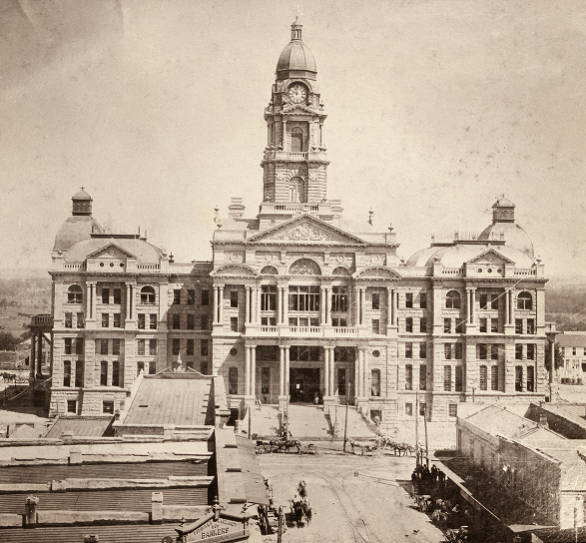
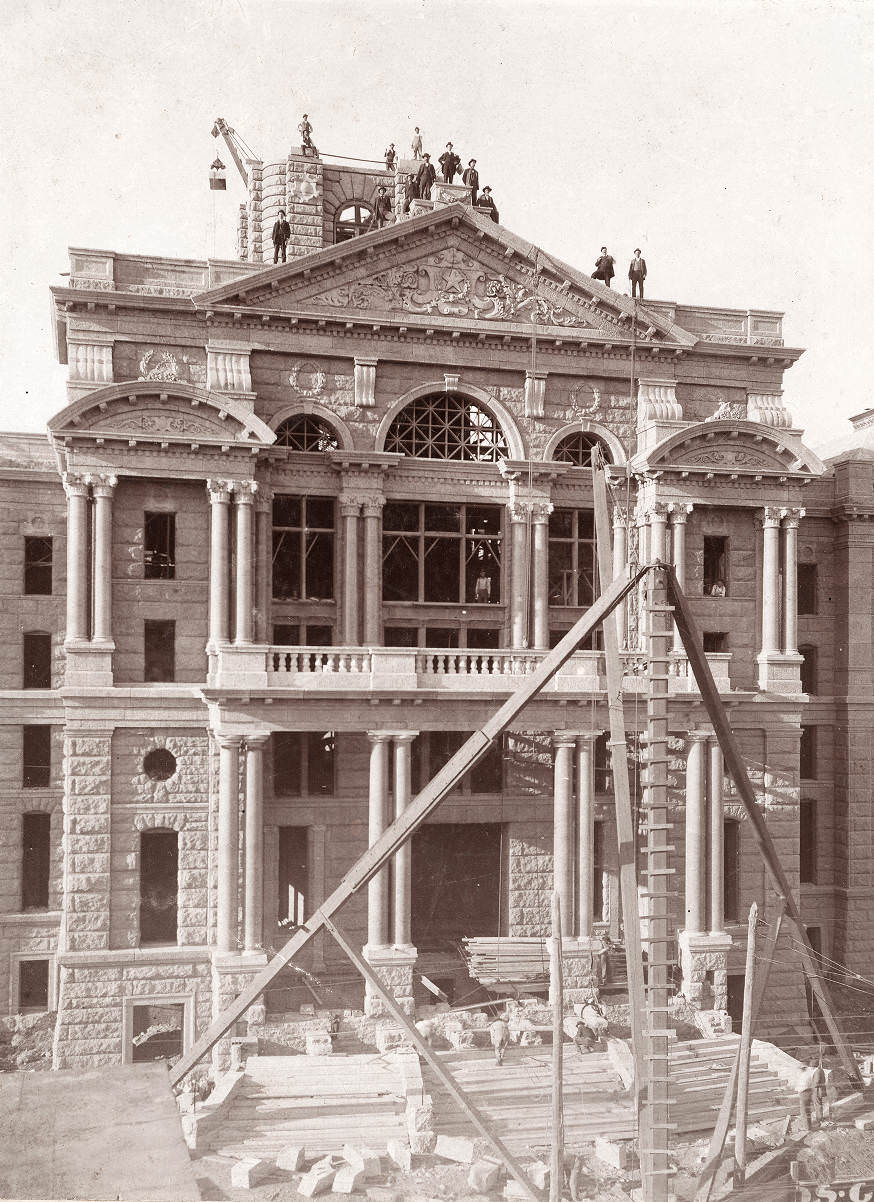
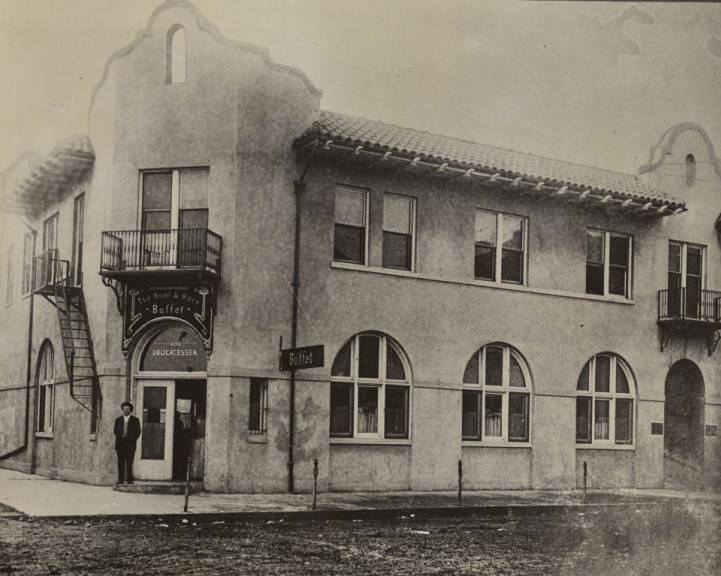
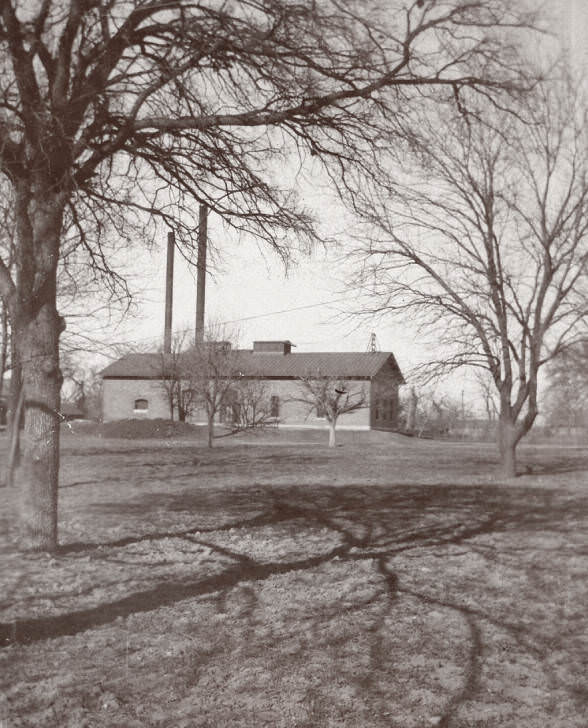
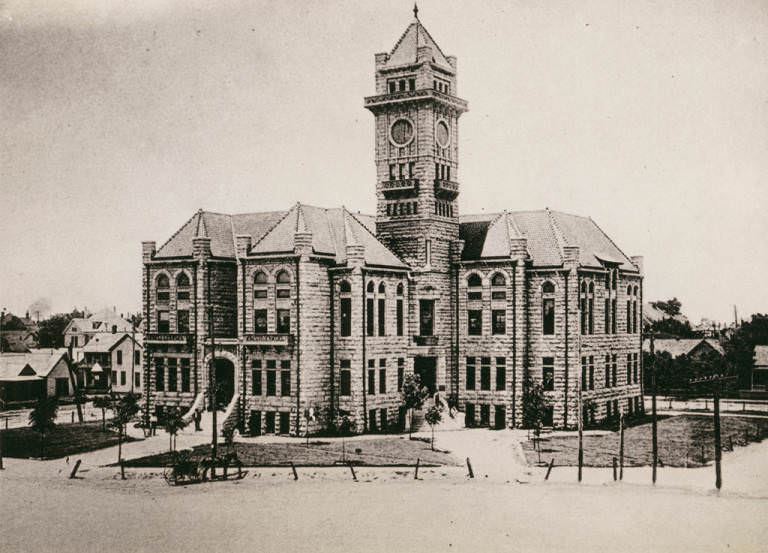
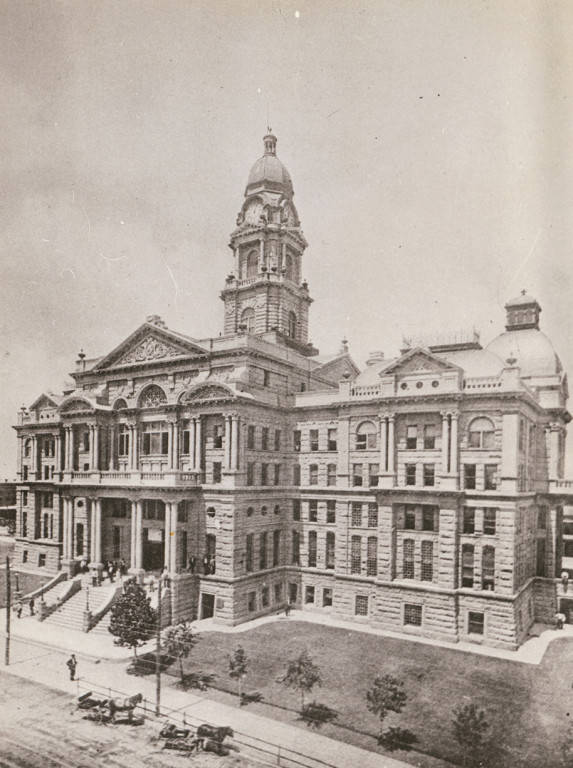
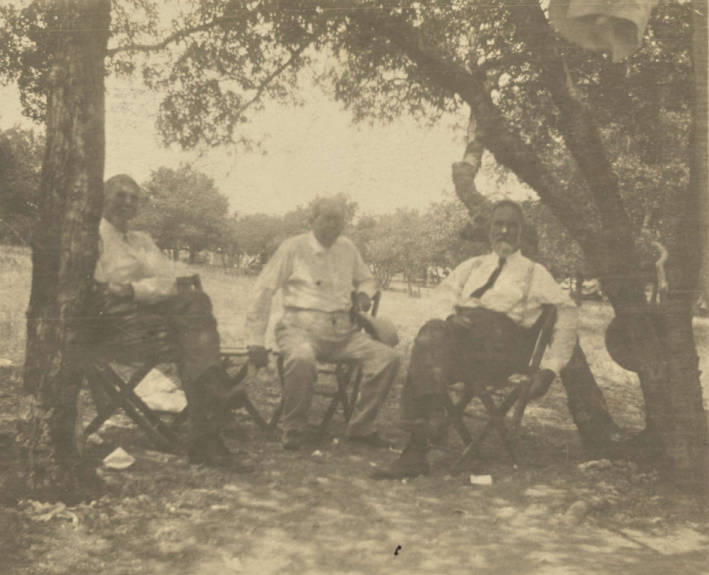
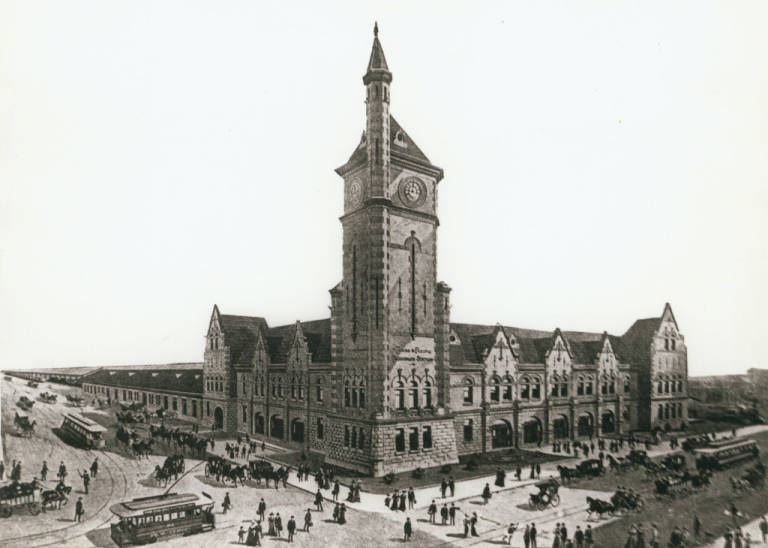
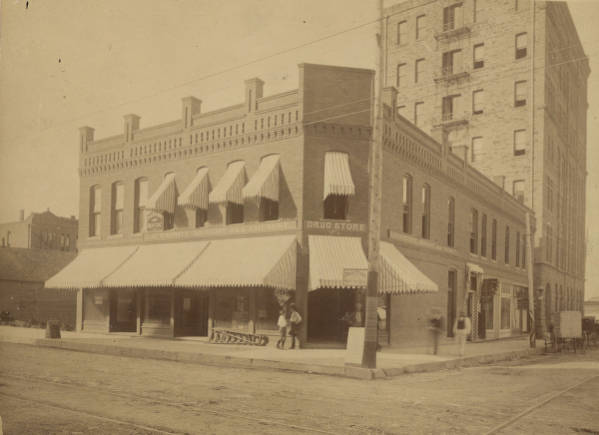
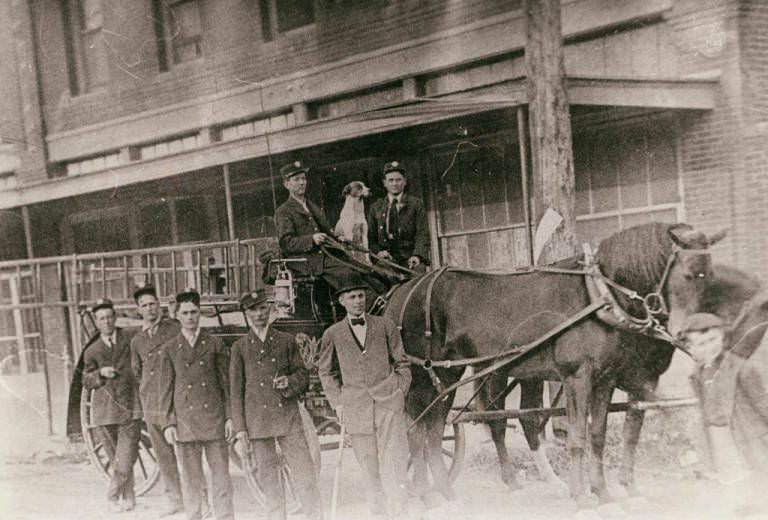
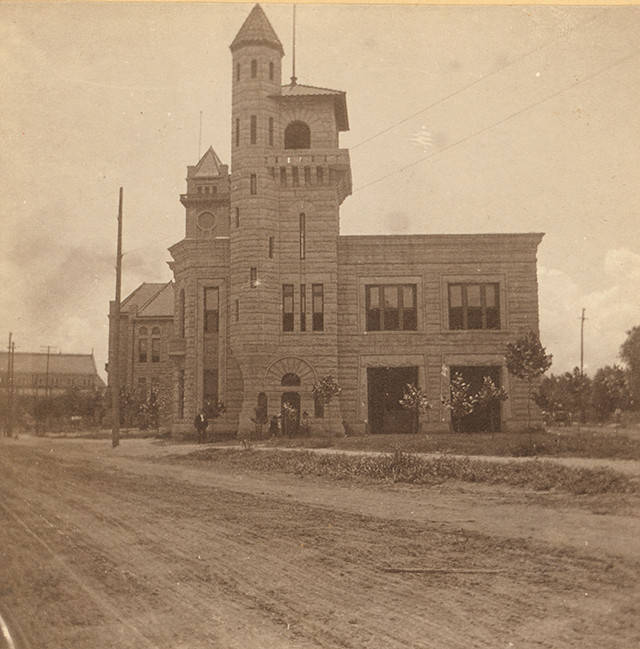
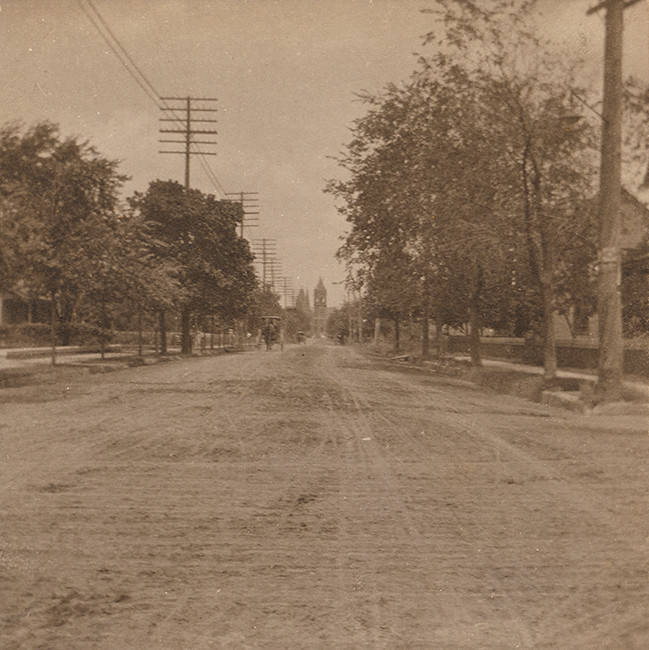
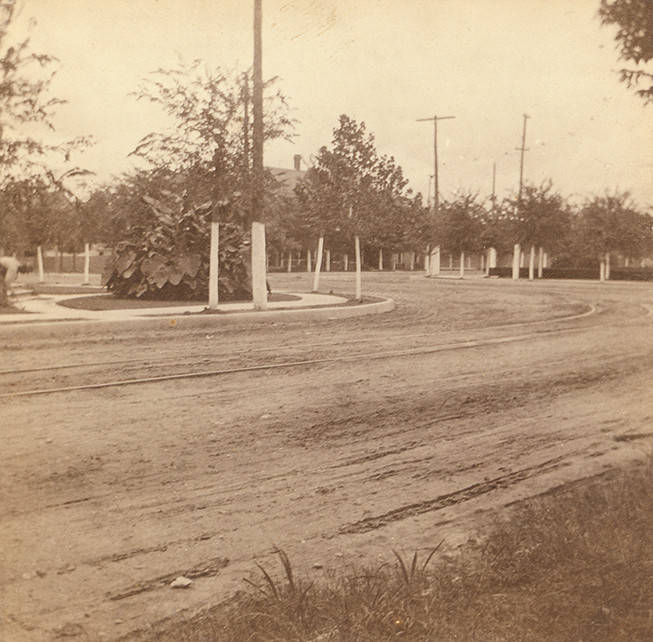
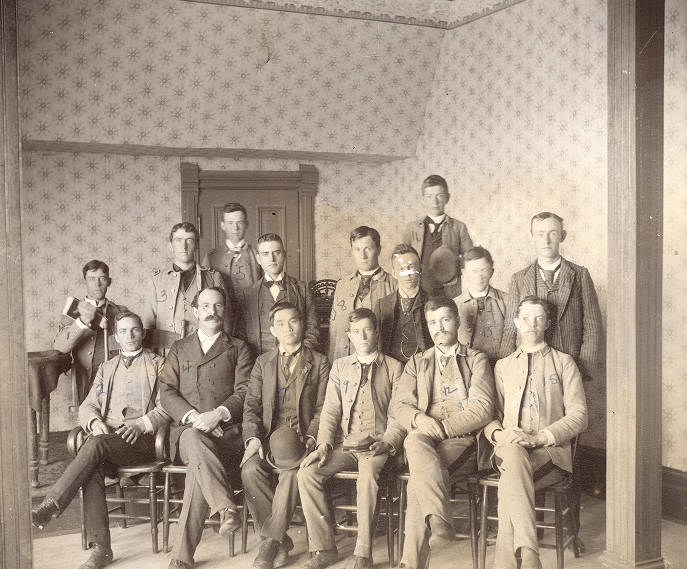
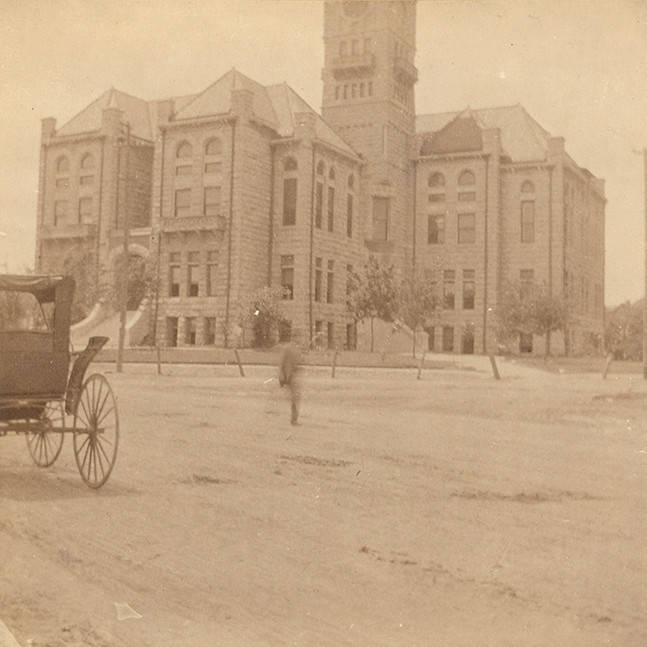
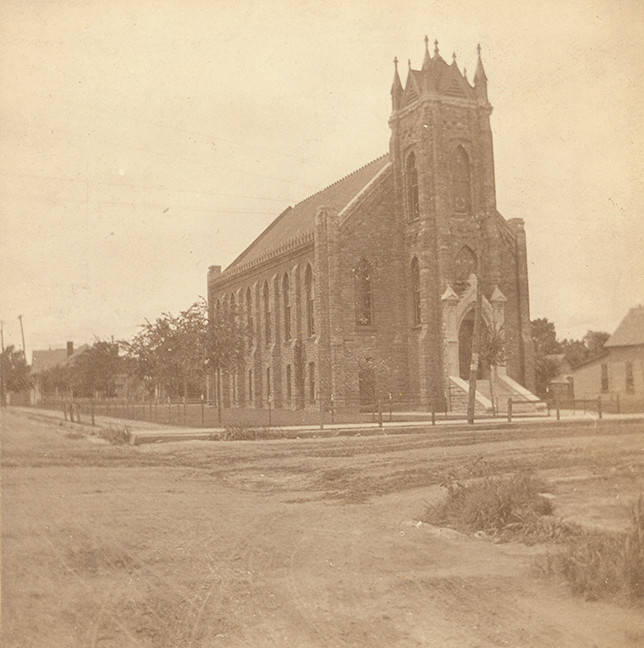
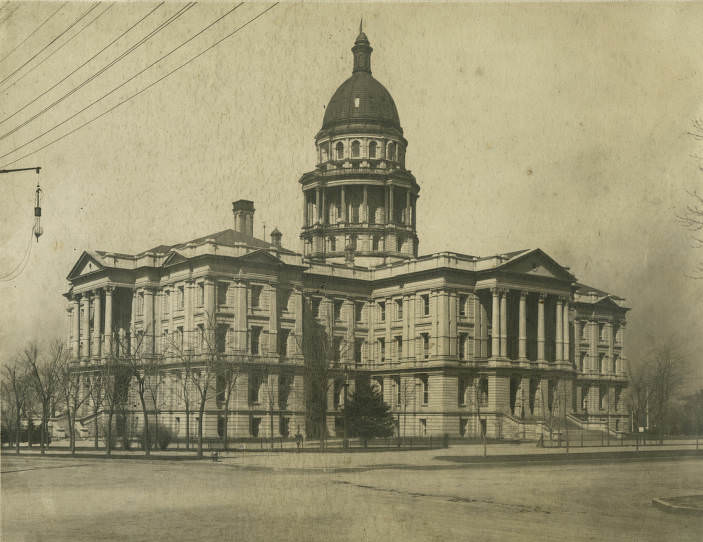
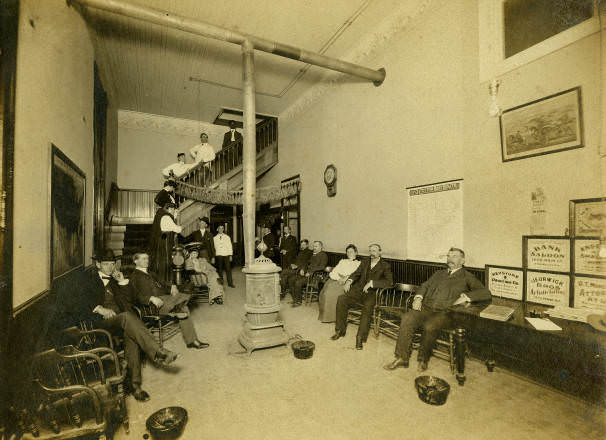
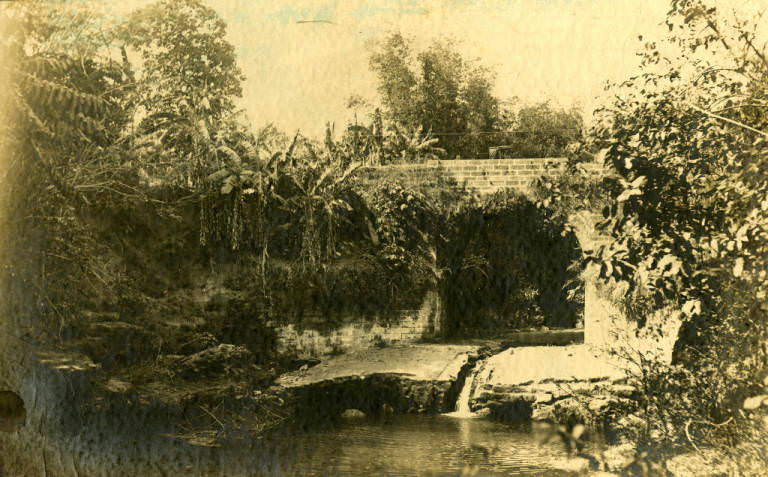
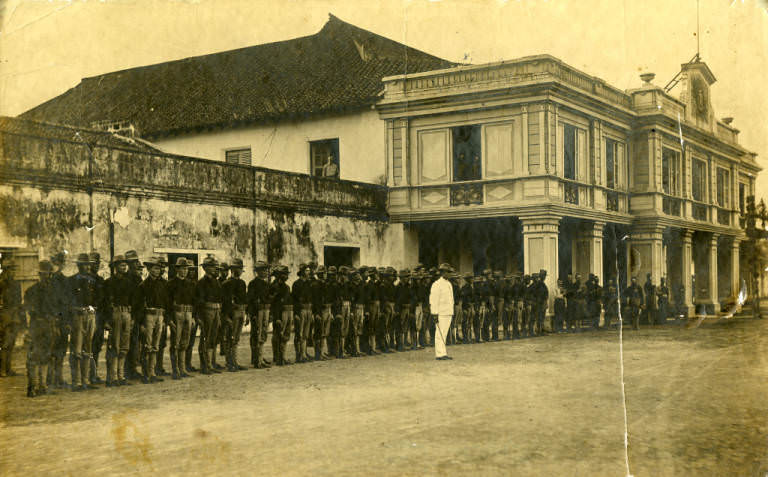
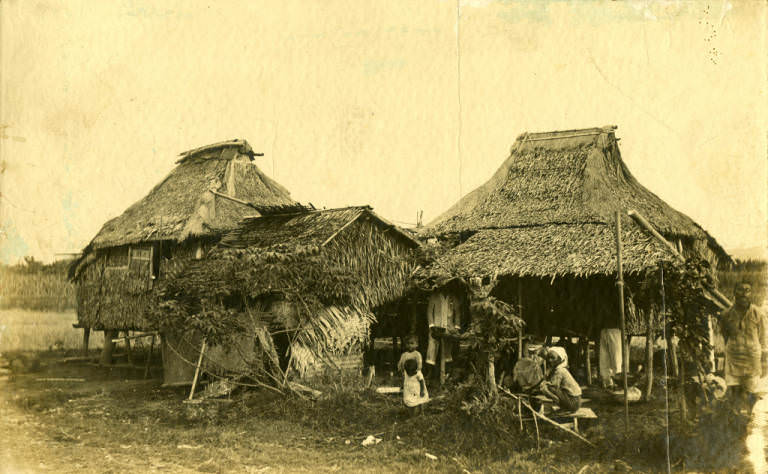
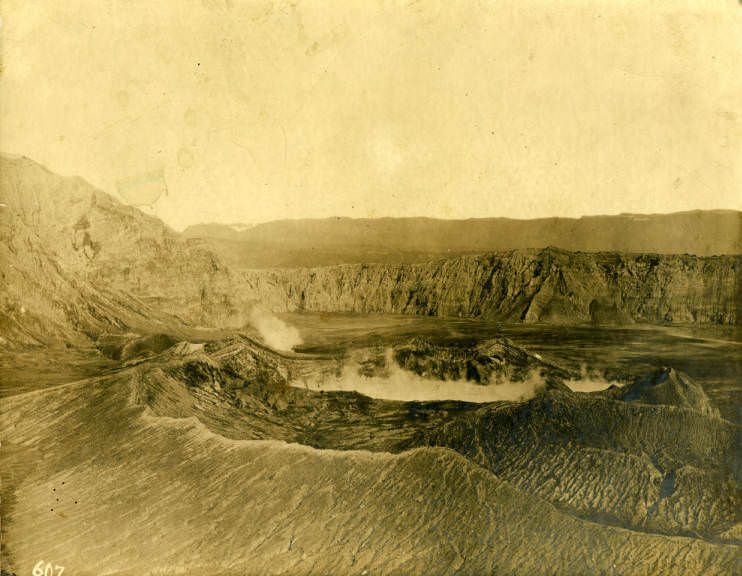
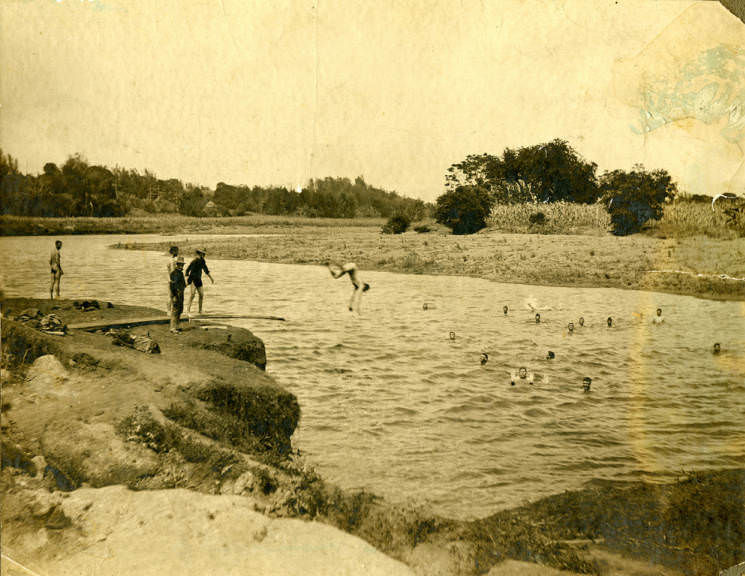
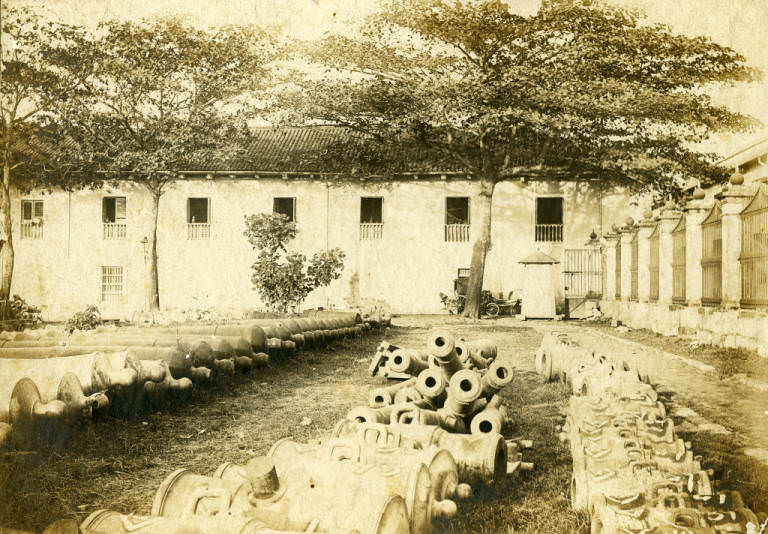
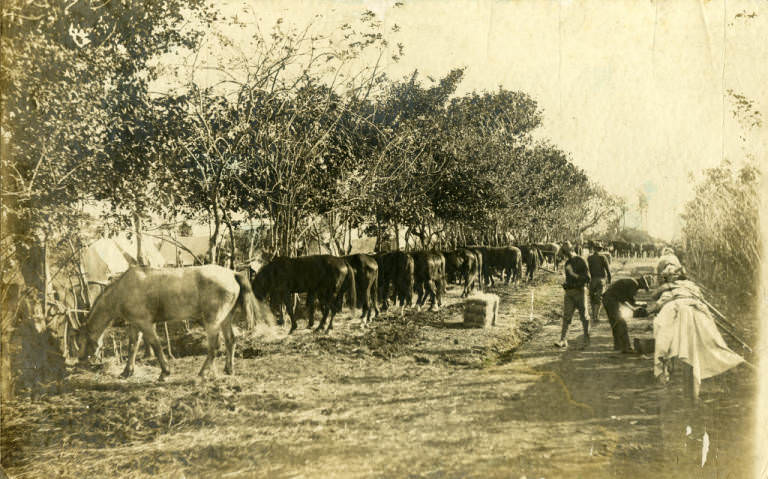
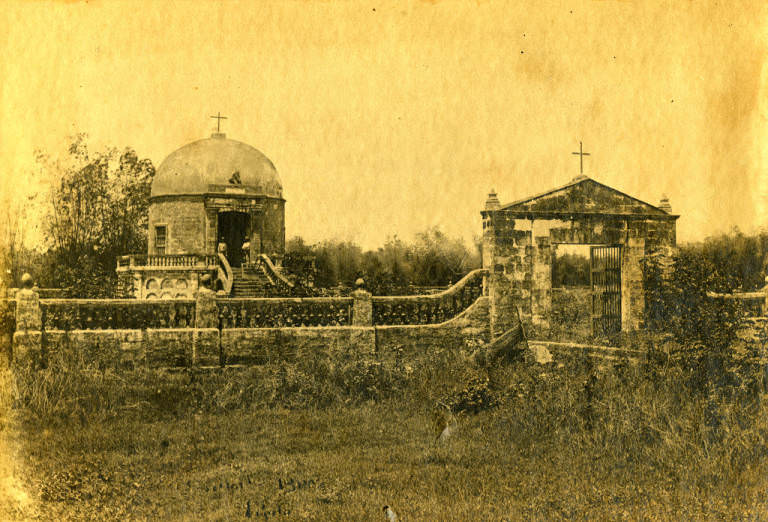
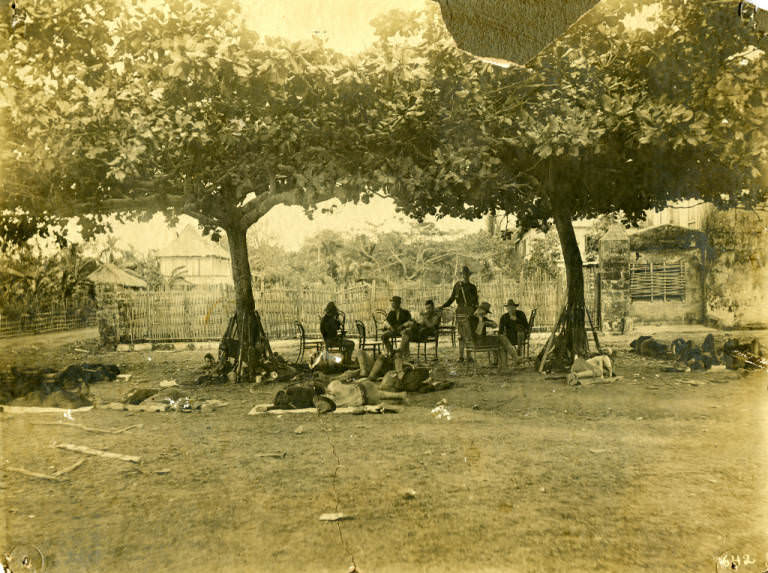
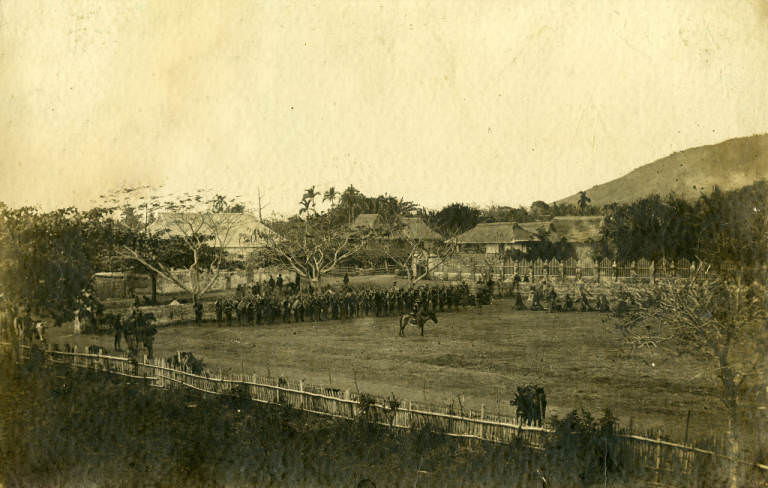
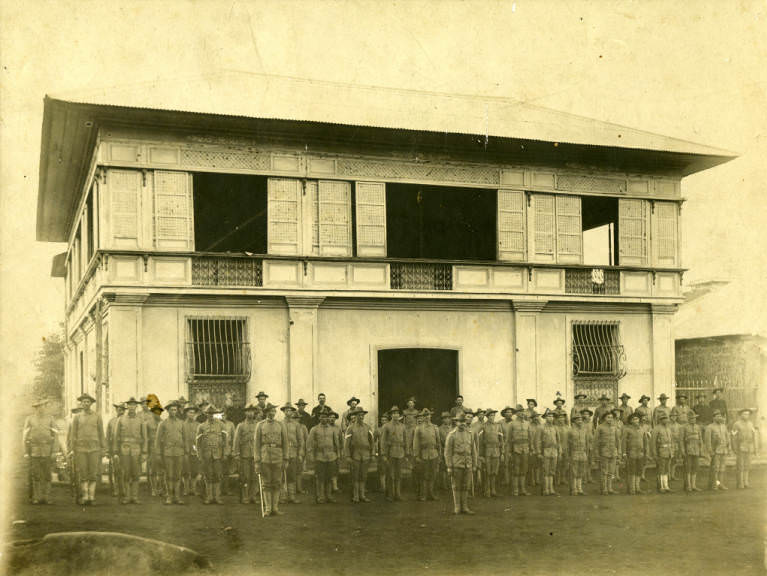
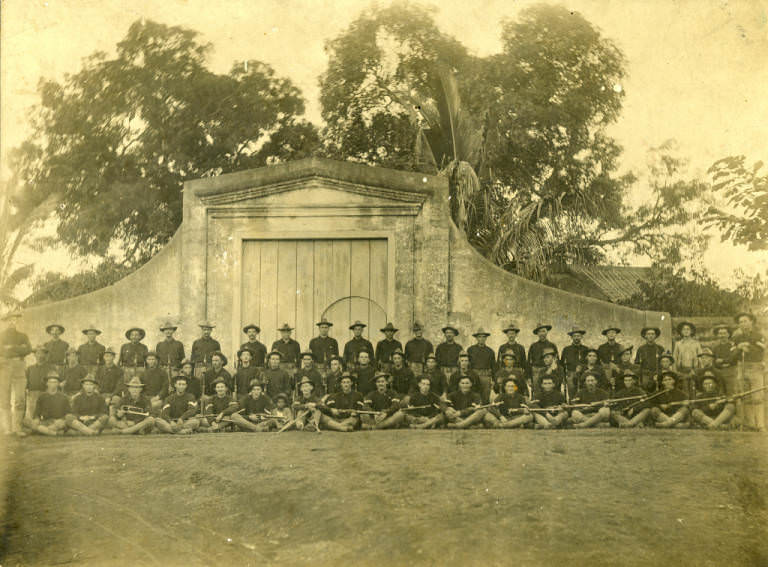
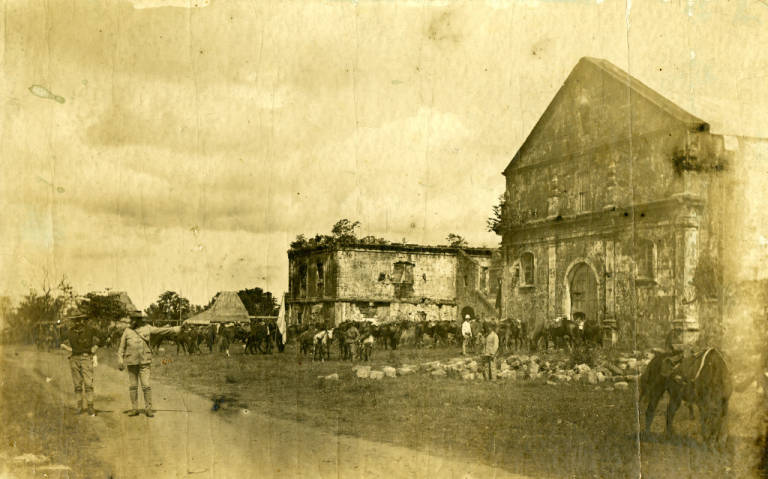
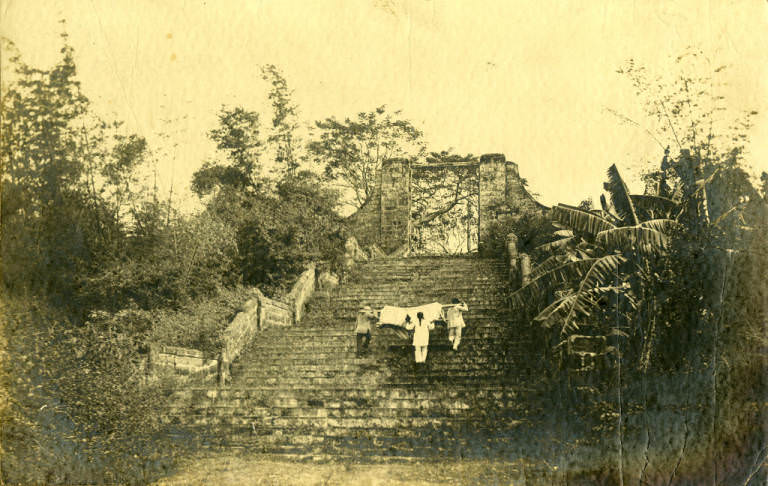
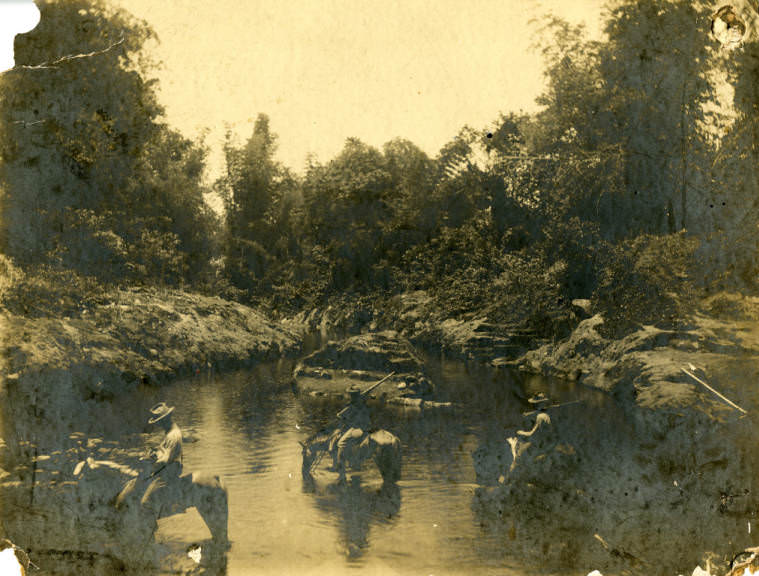

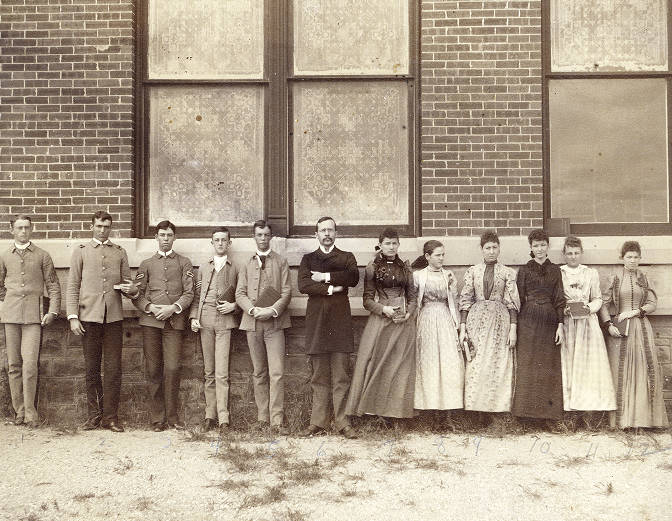
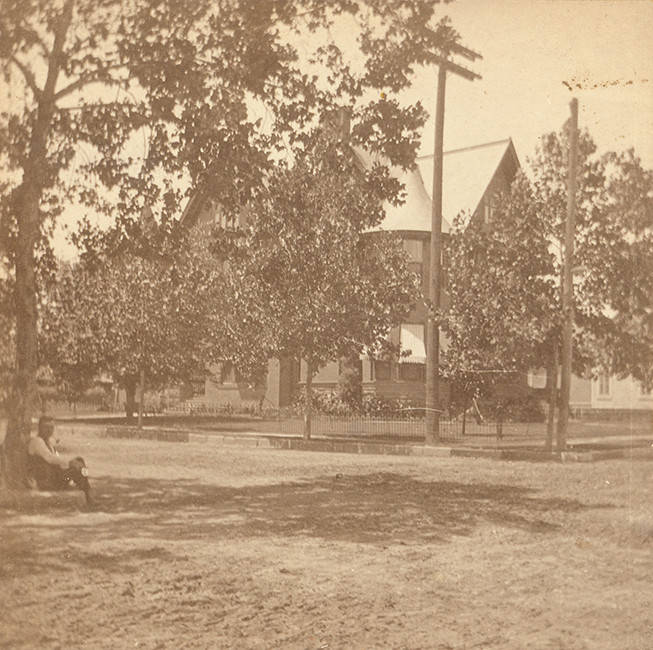
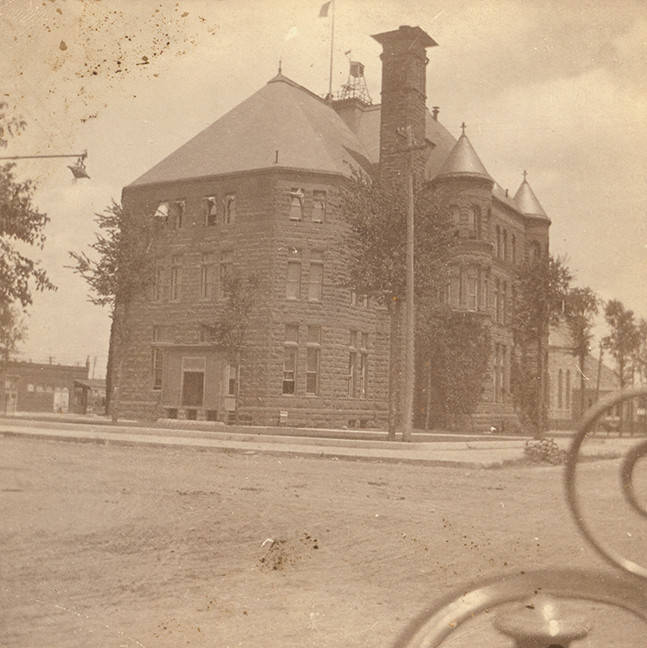
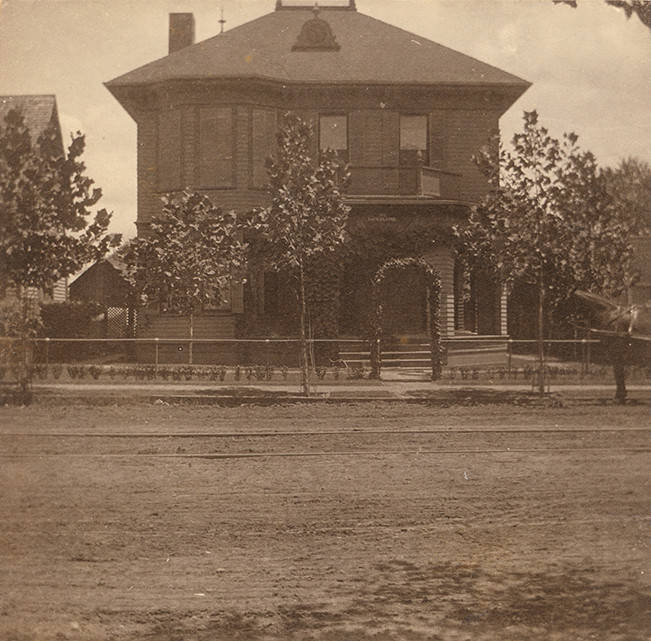
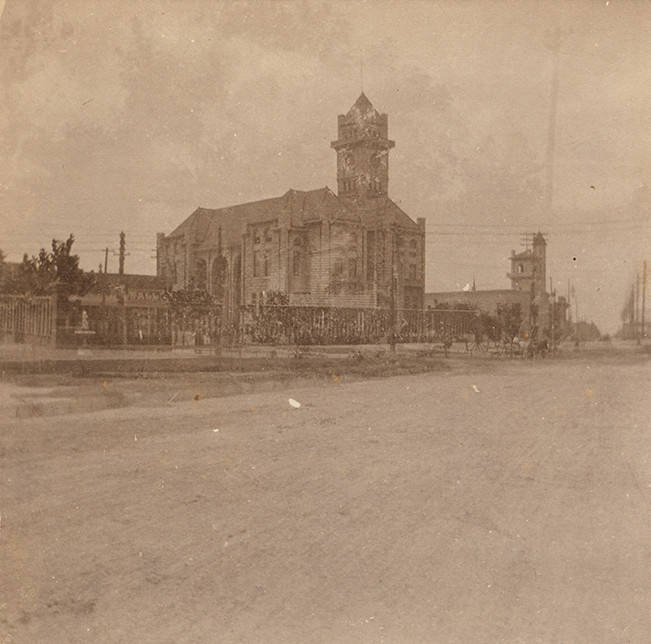
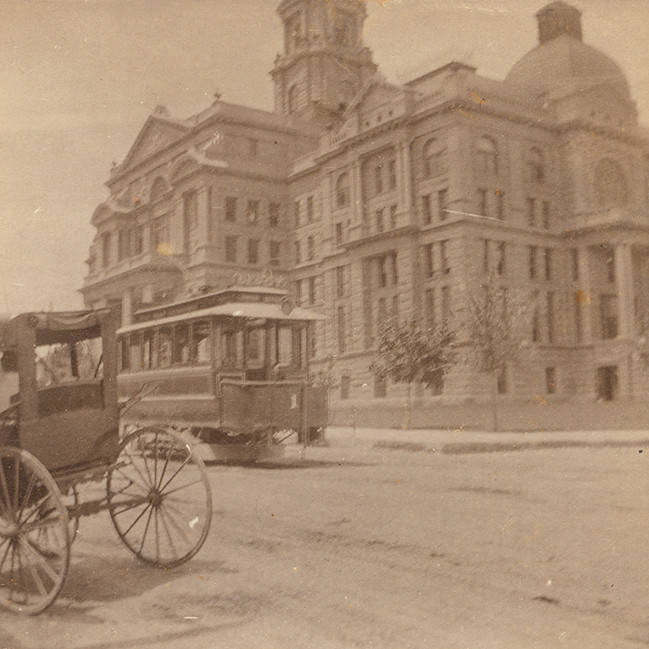
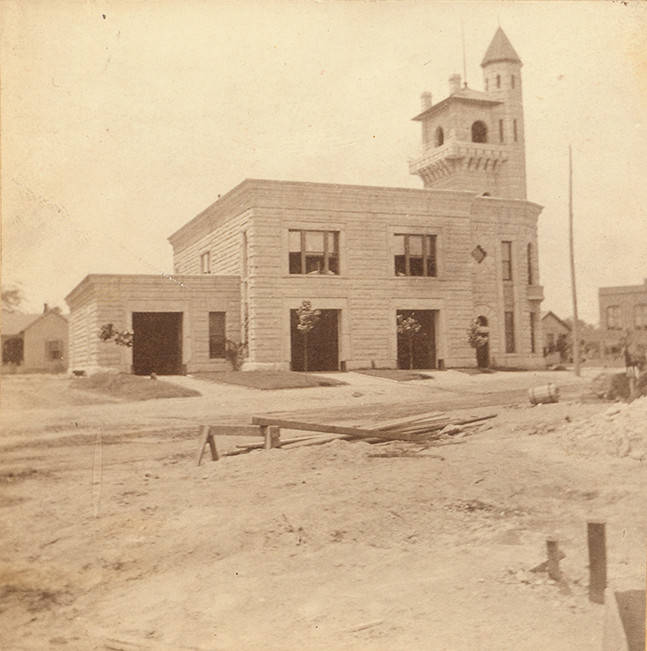
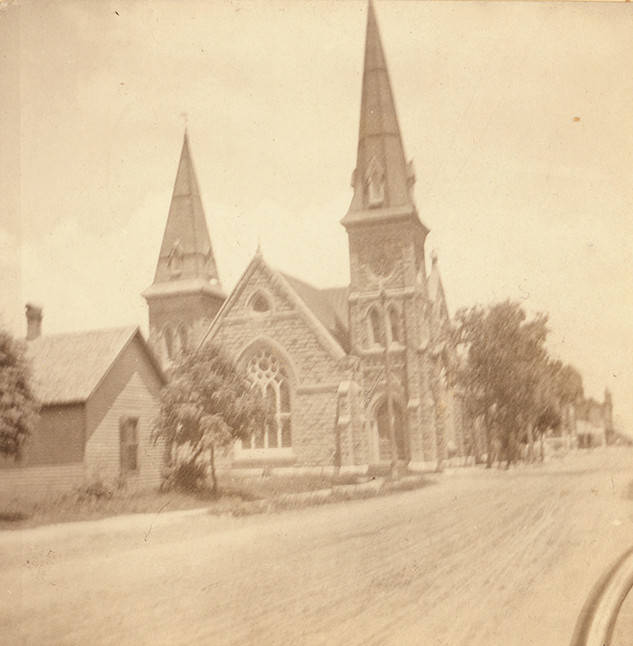
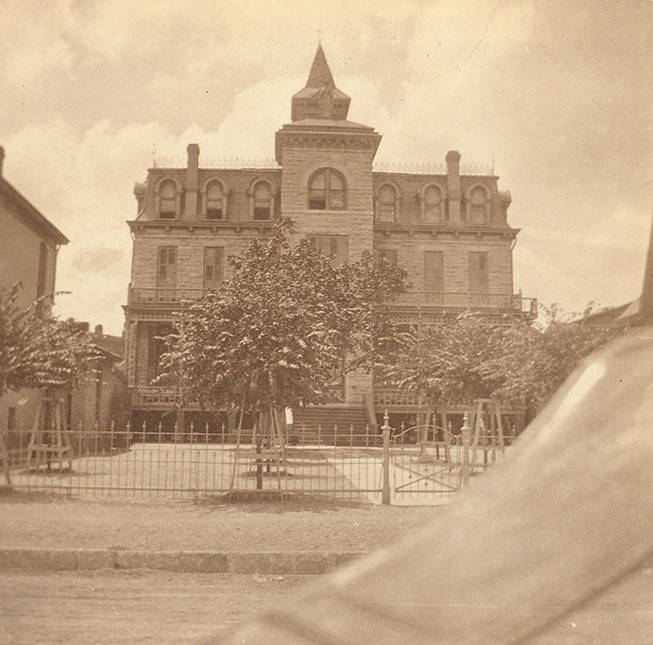
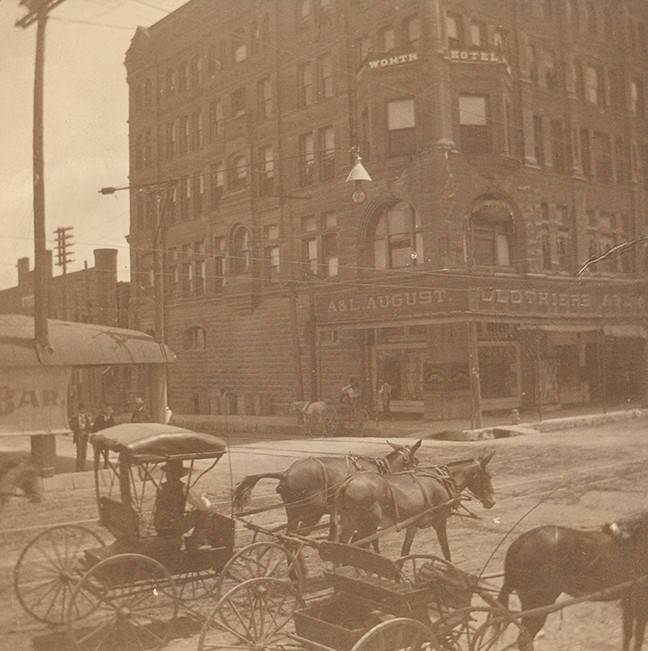
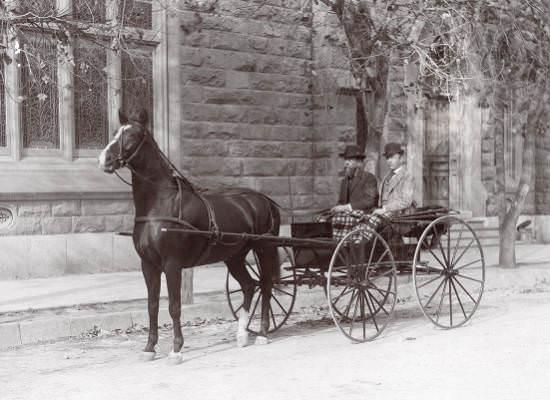
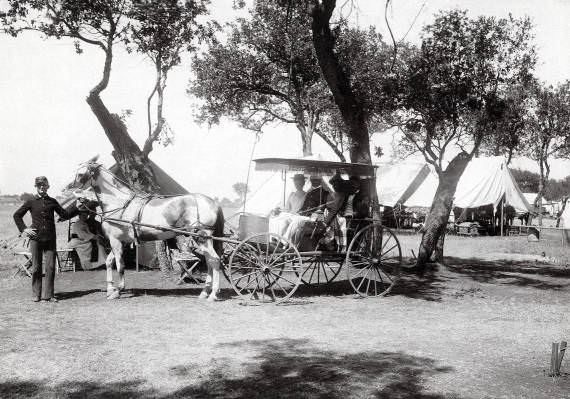
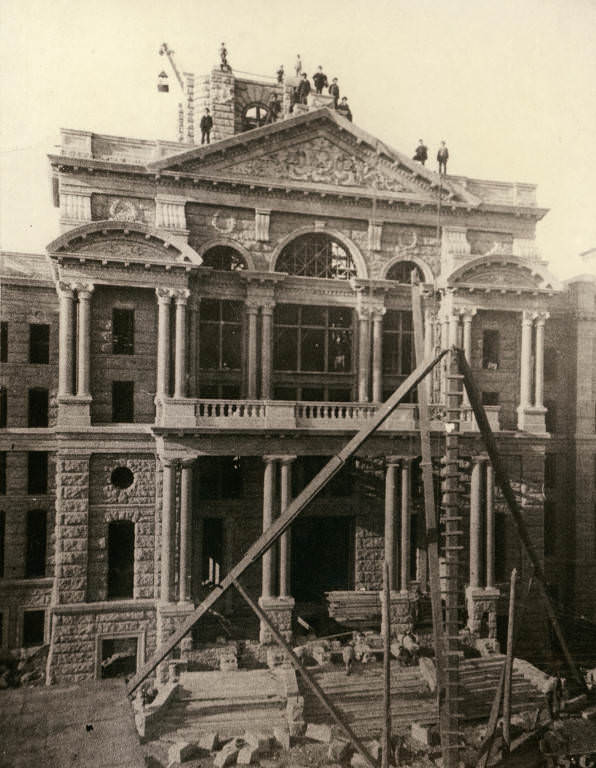
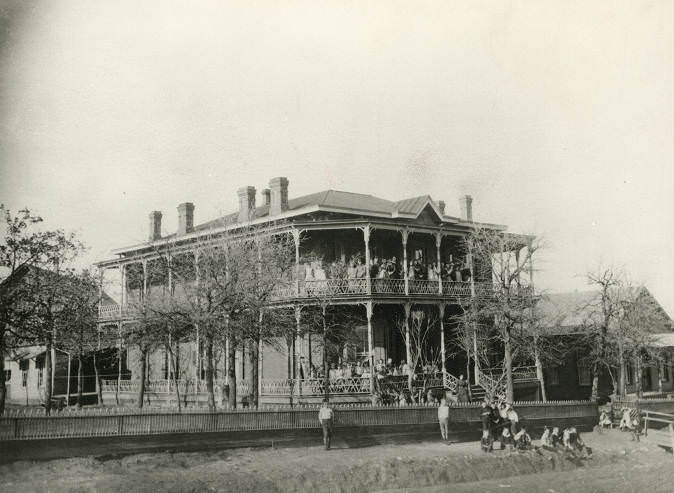
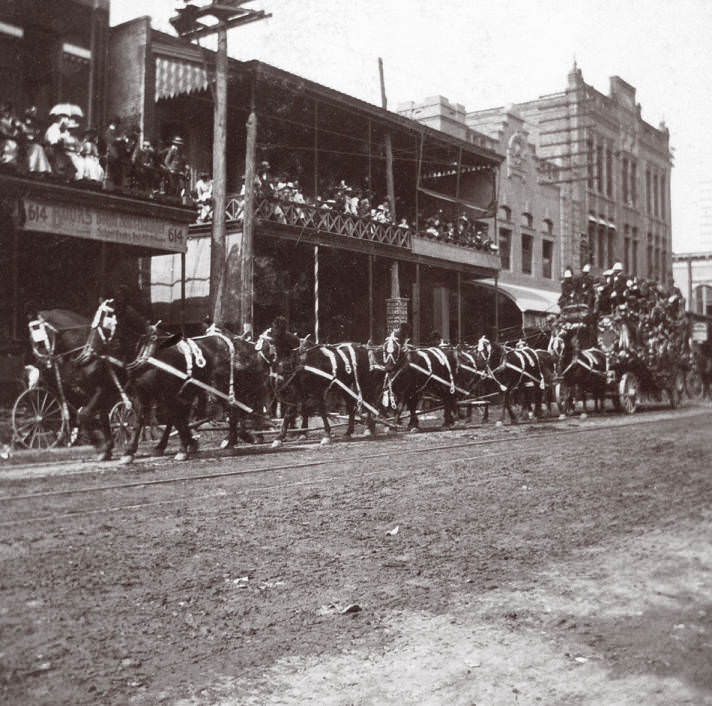
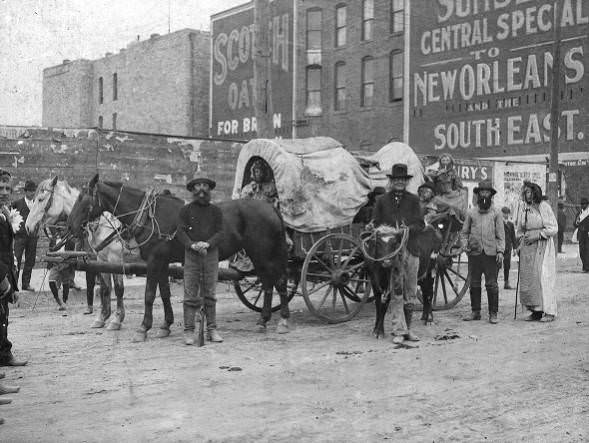
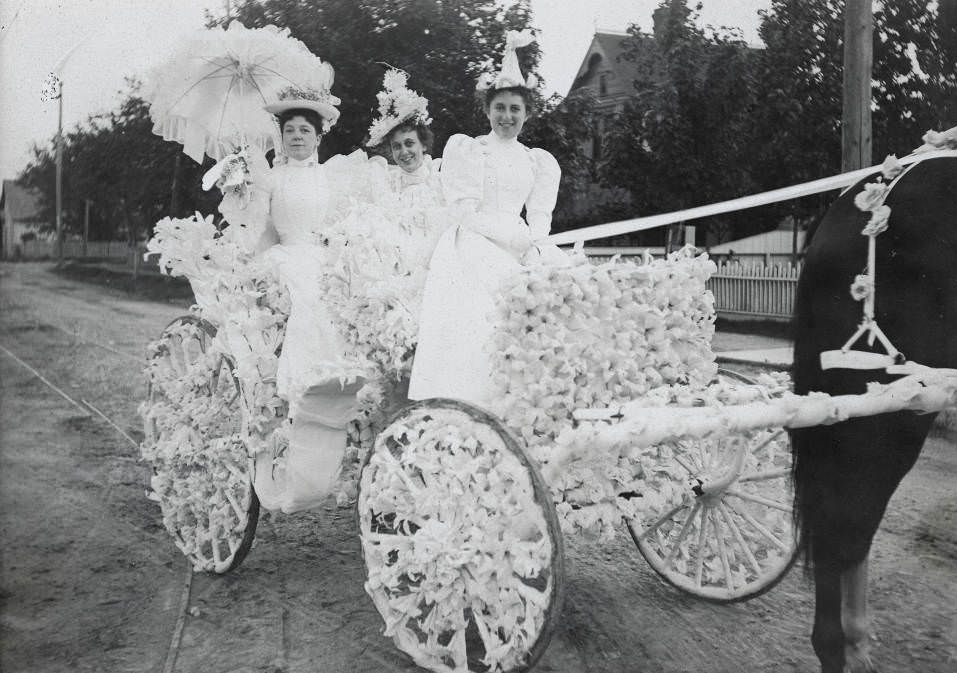
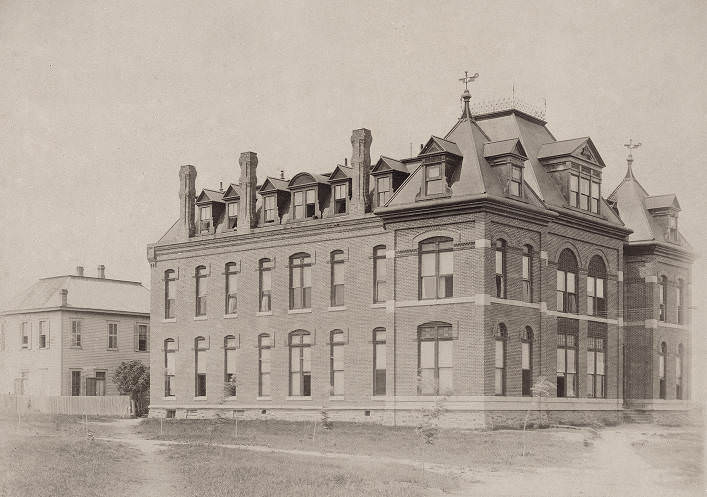
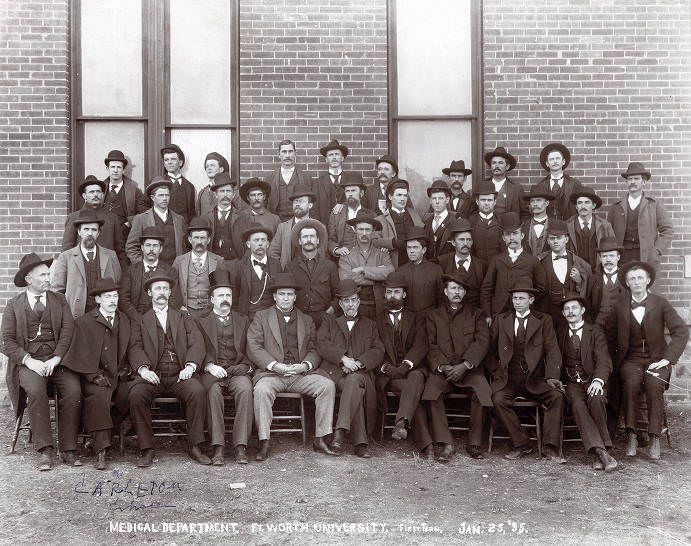
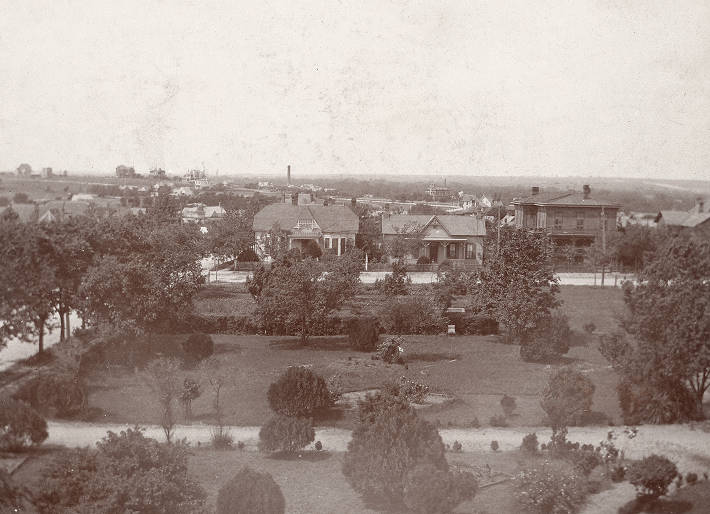
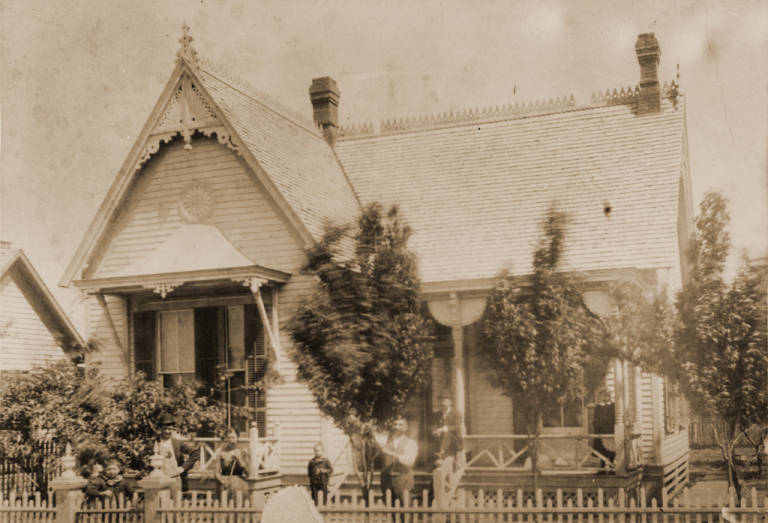
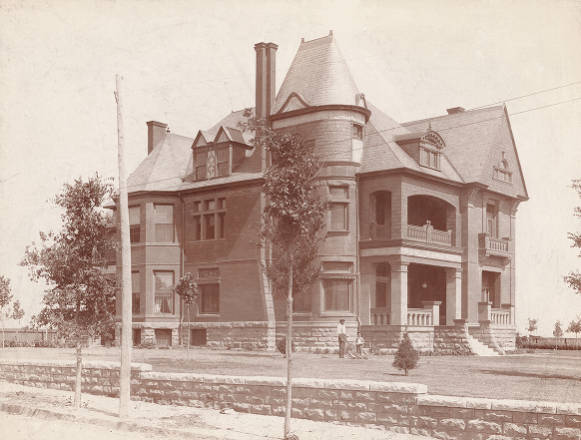
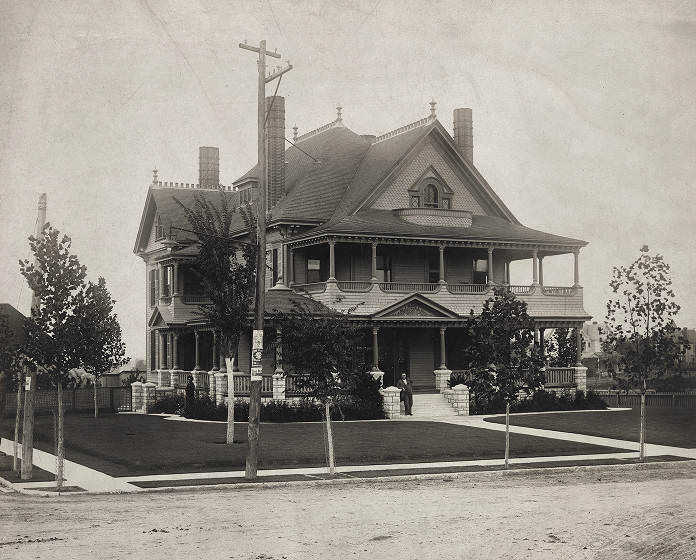
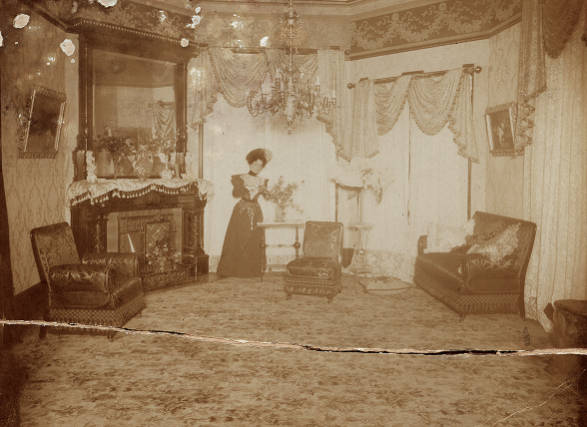
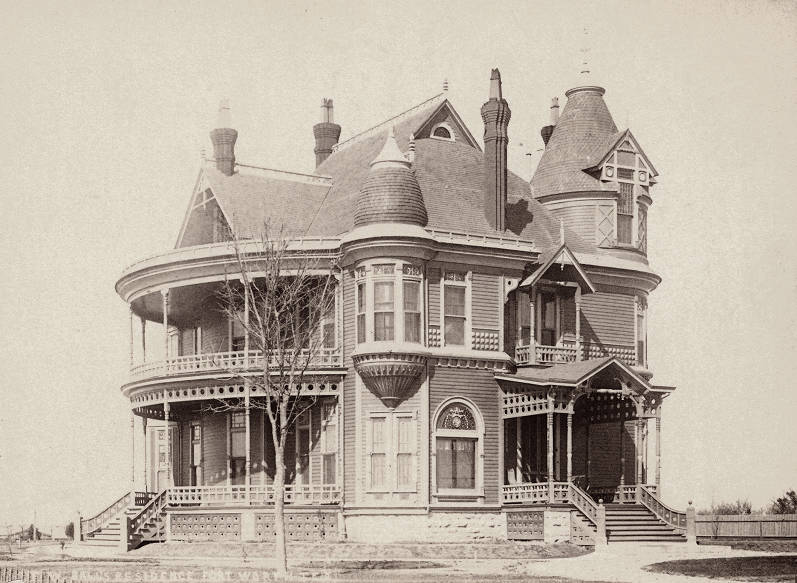
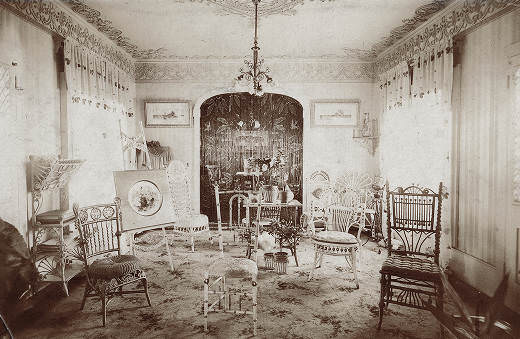
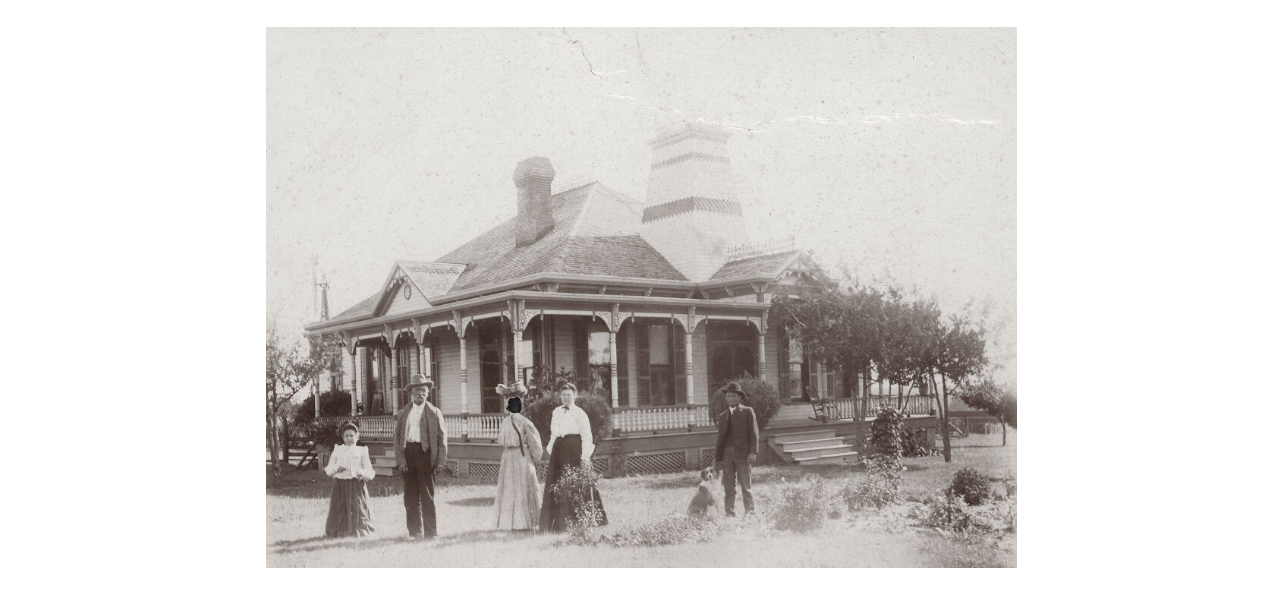
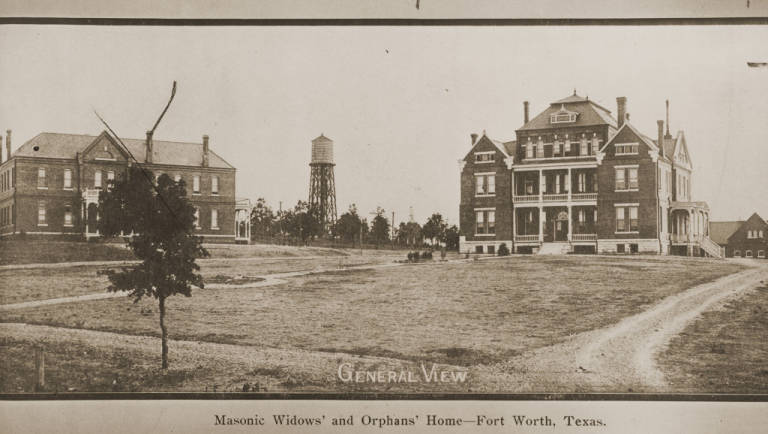
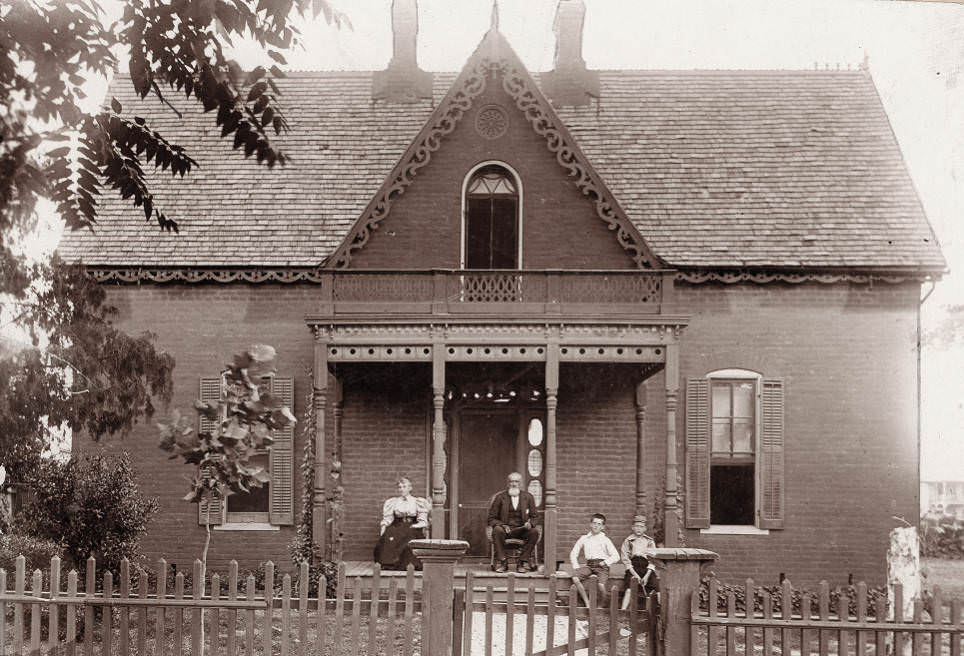
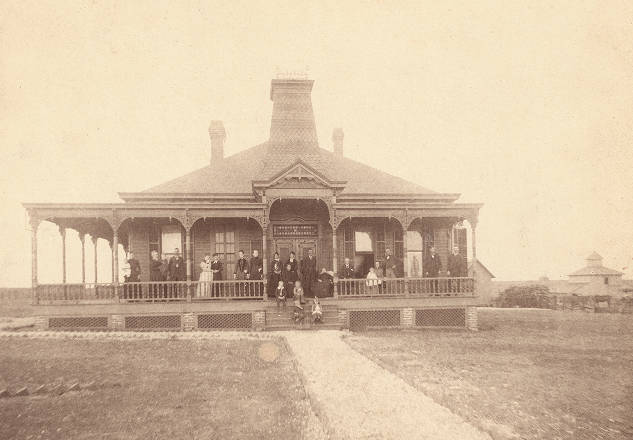
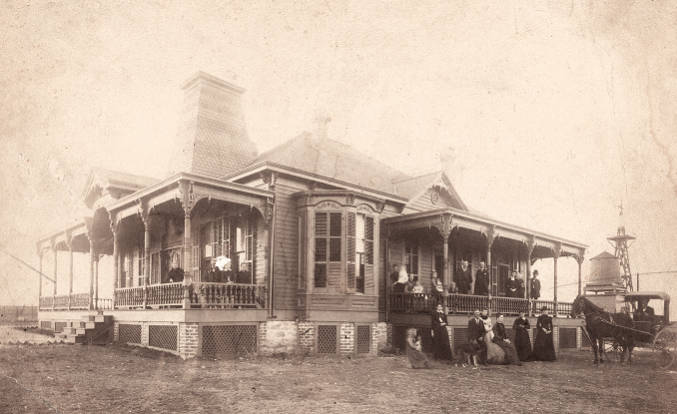
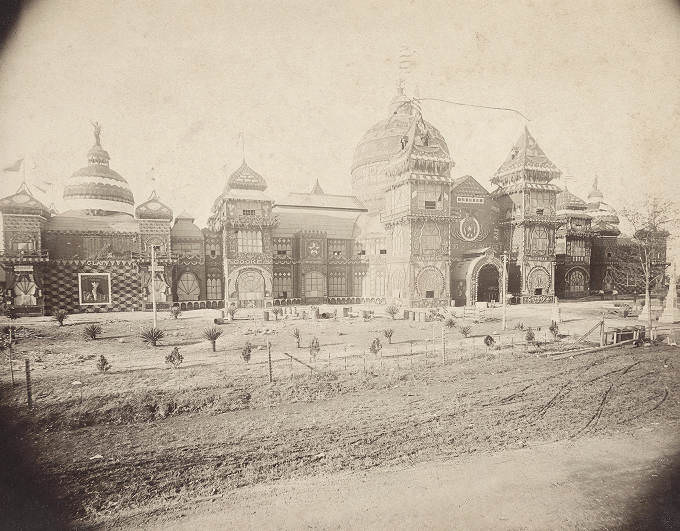
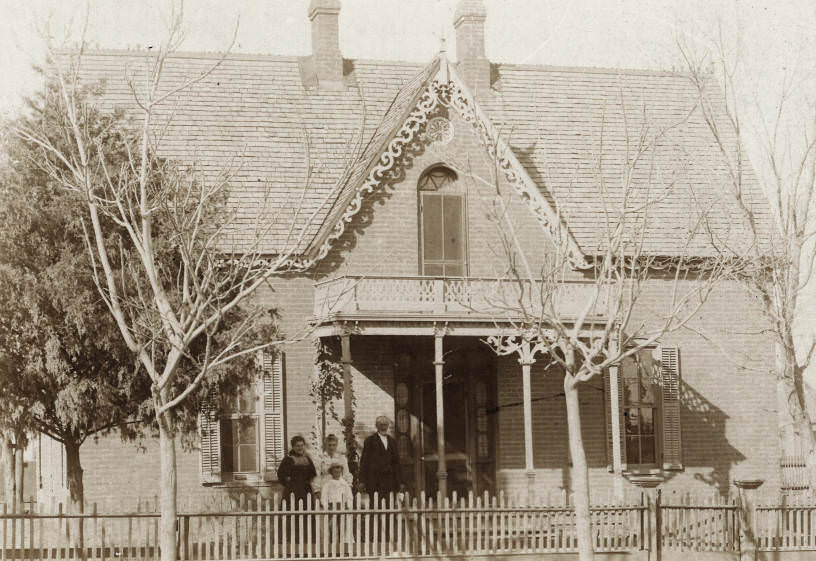
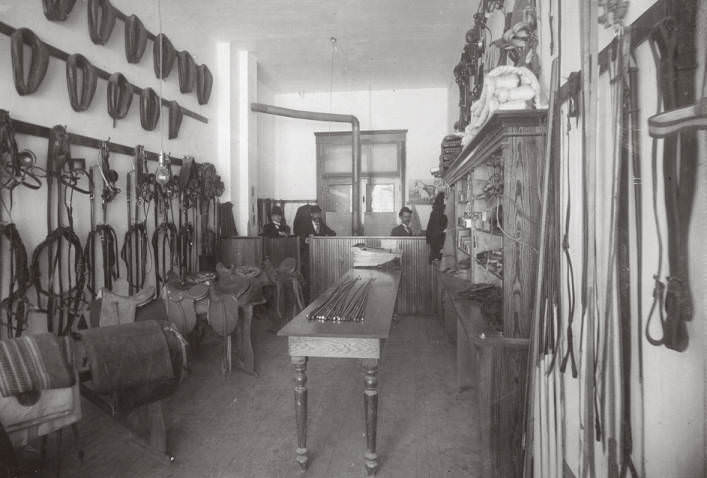
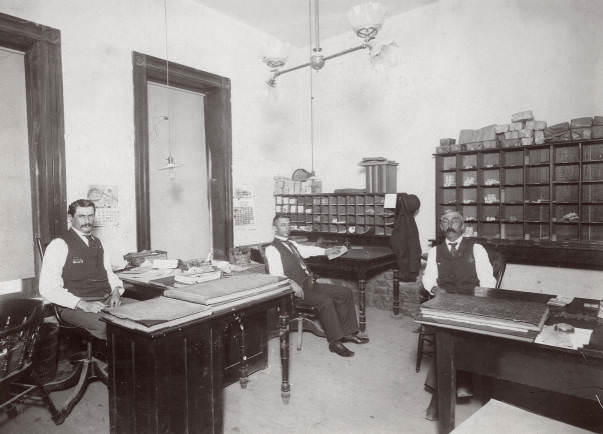
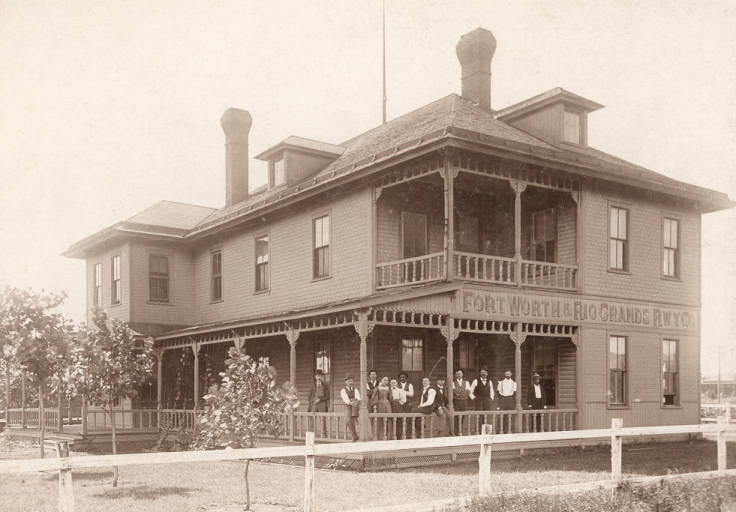
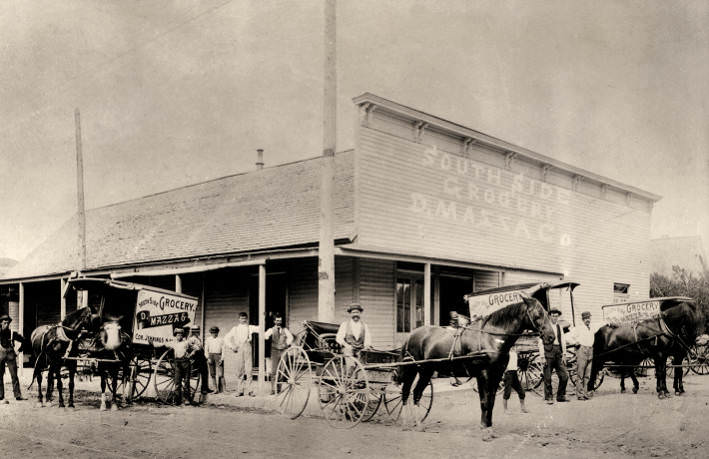
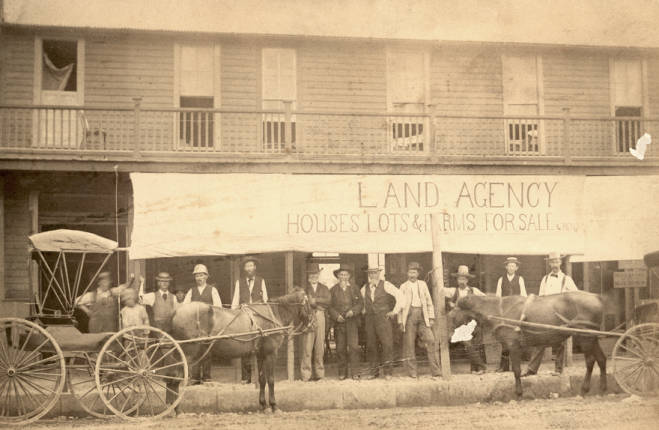
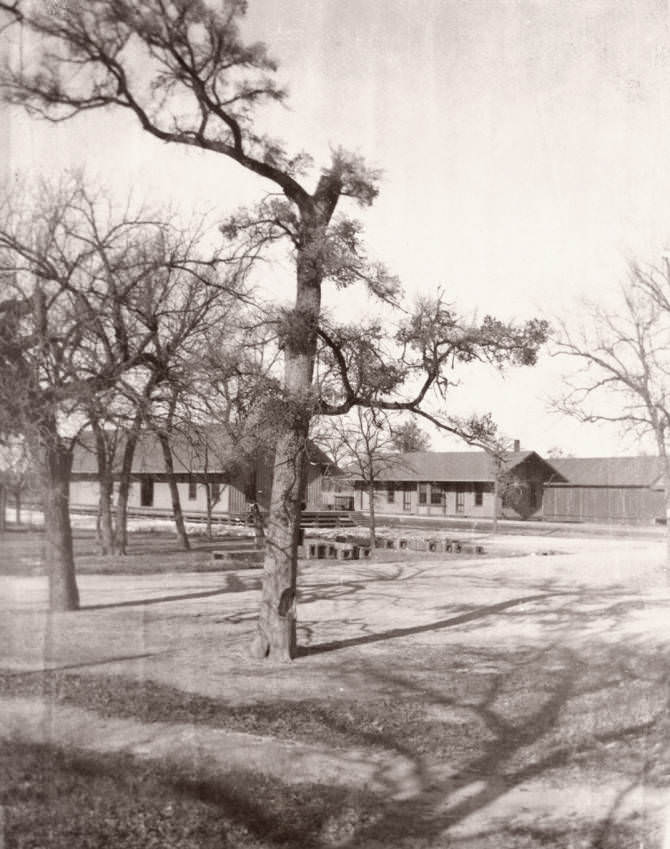
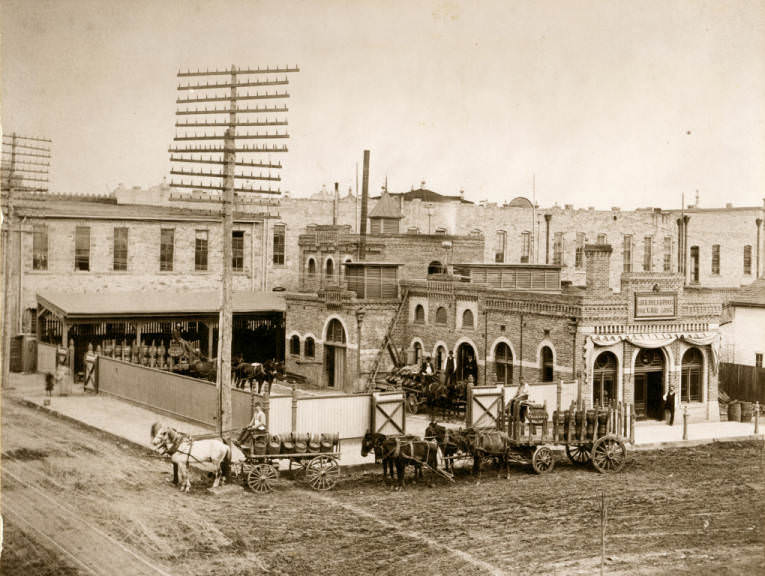
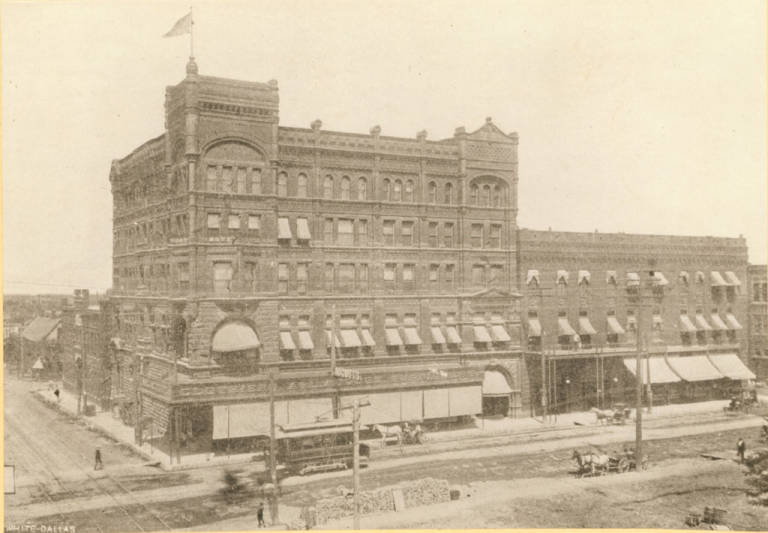
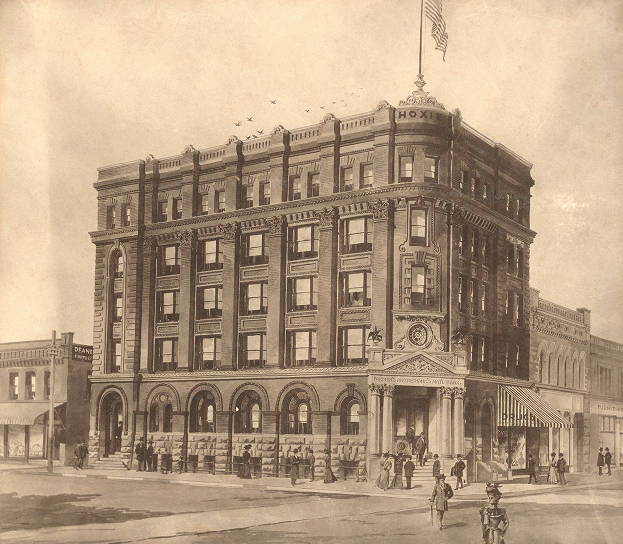
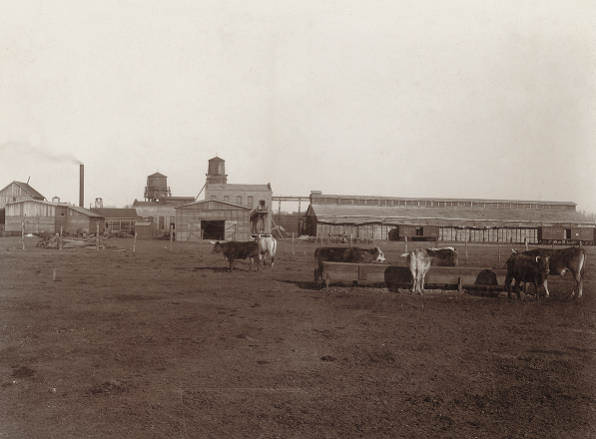

What school was in the East 2nd and Pecan Street area FW 1888?